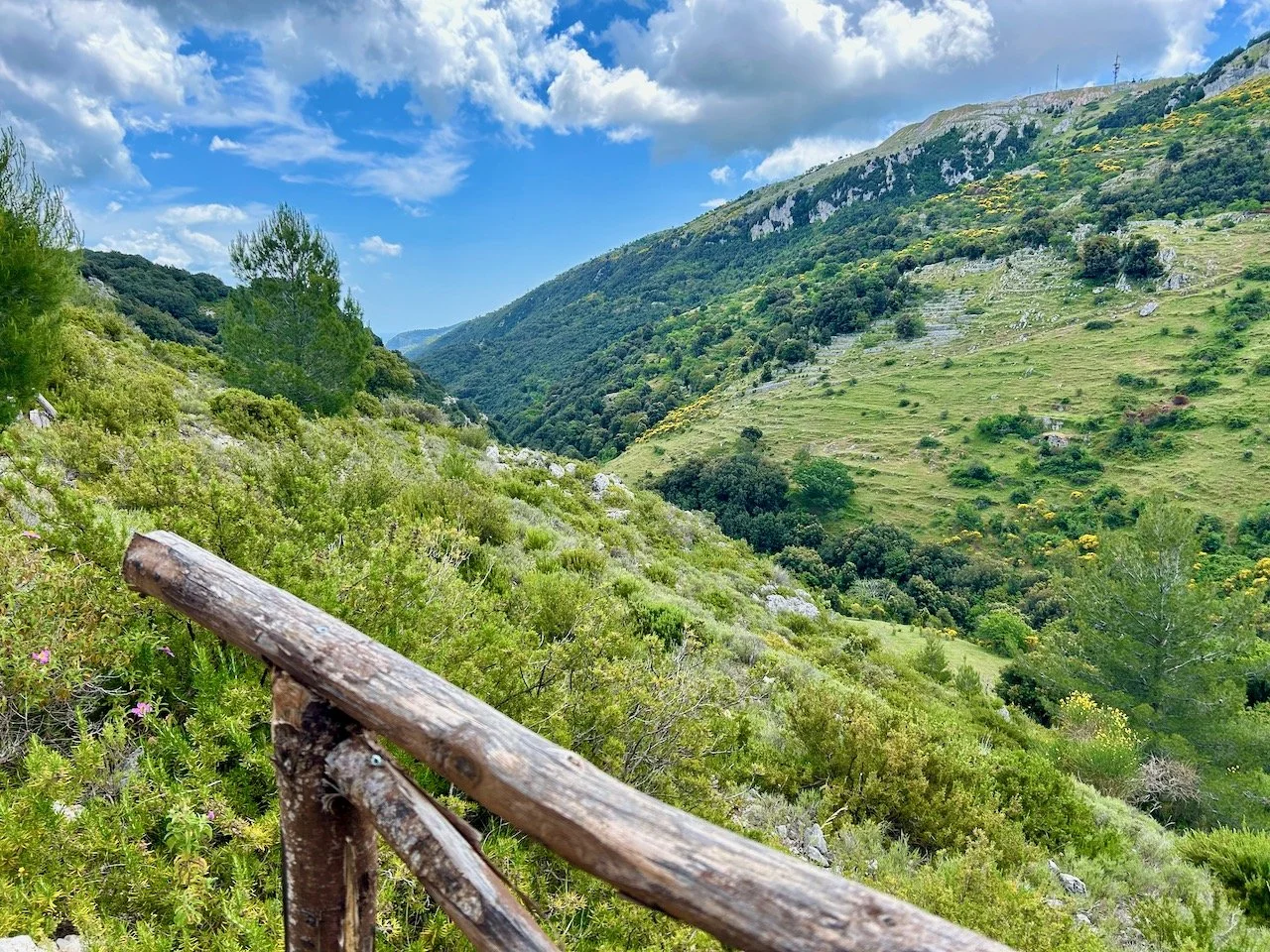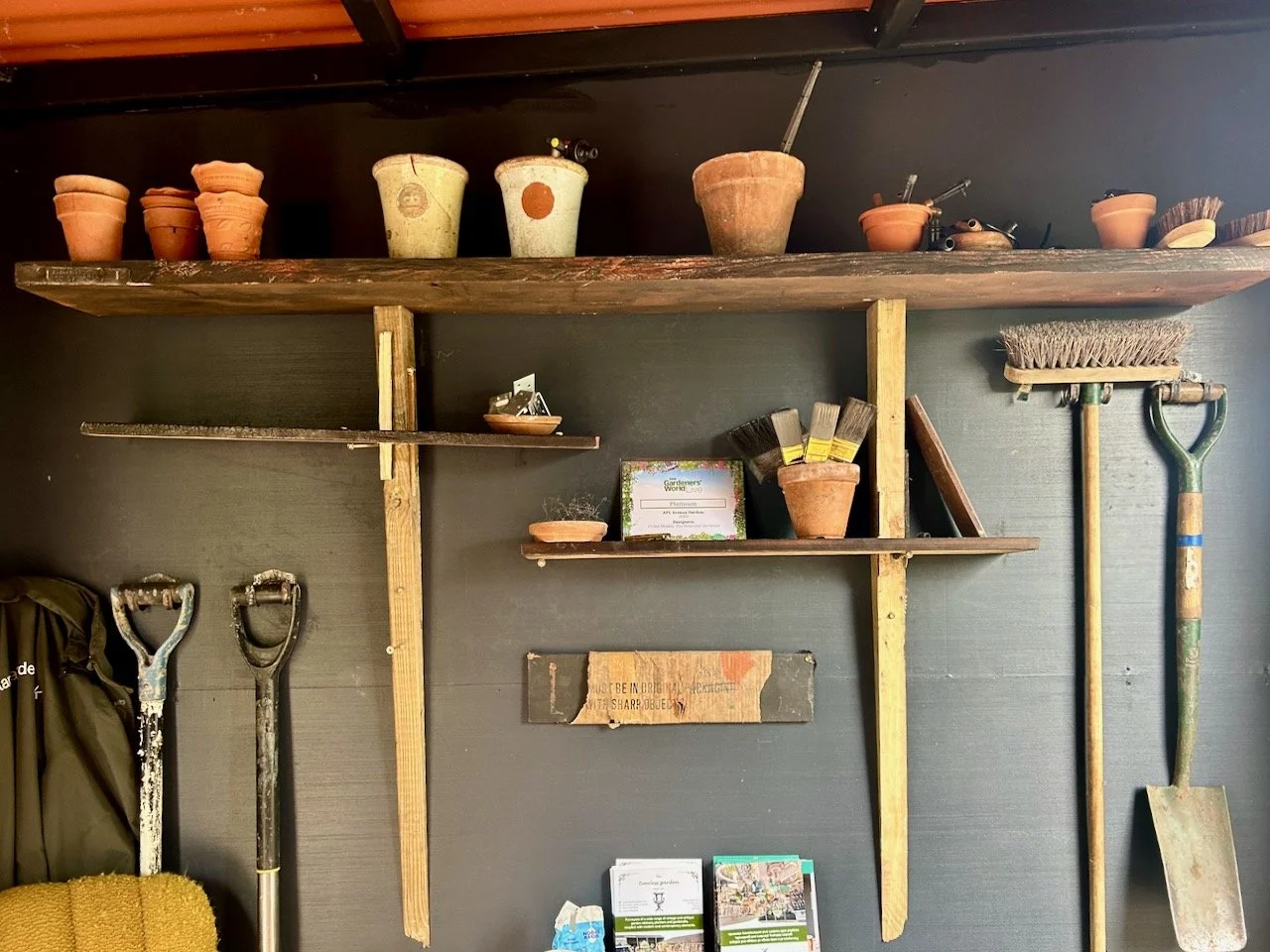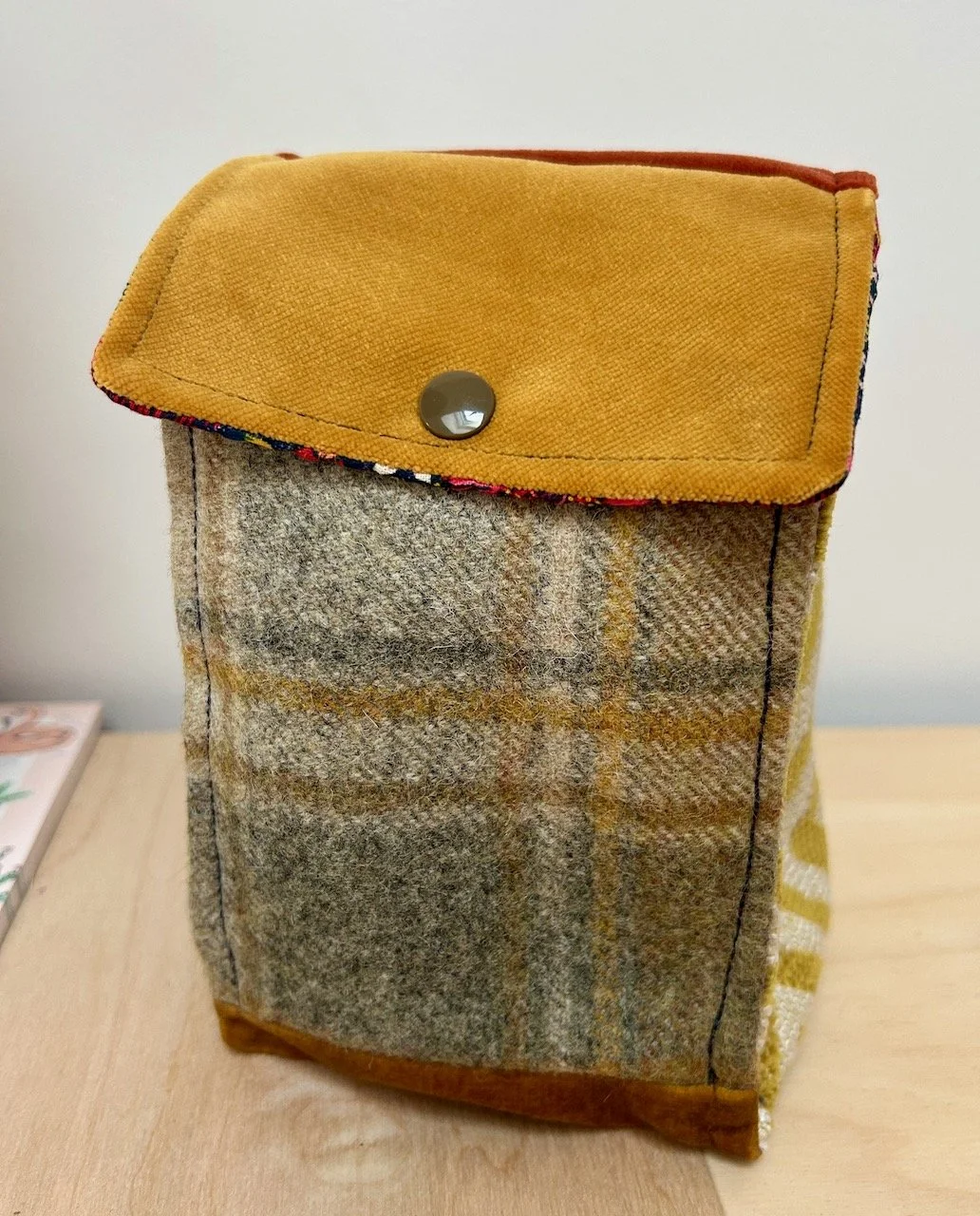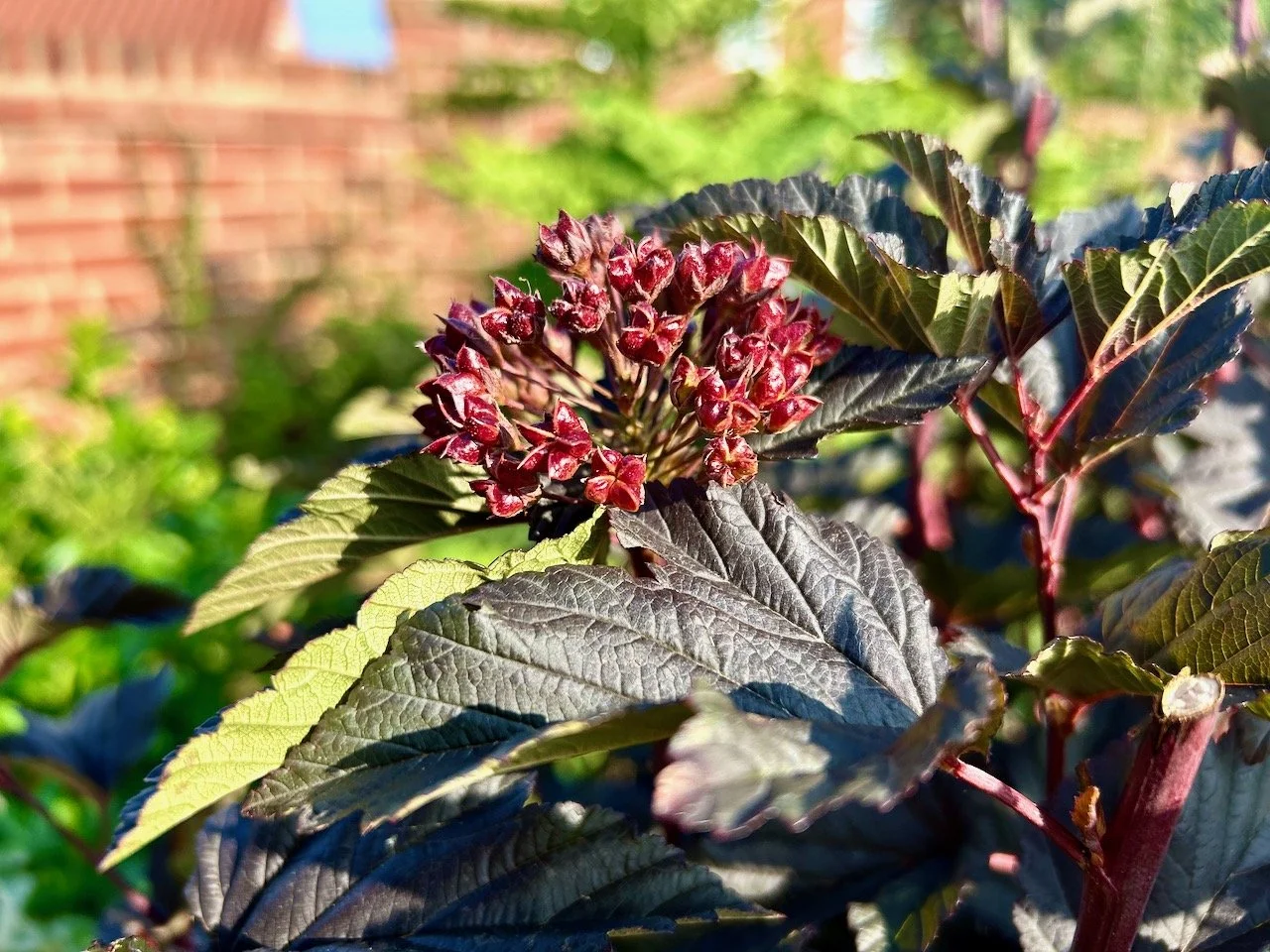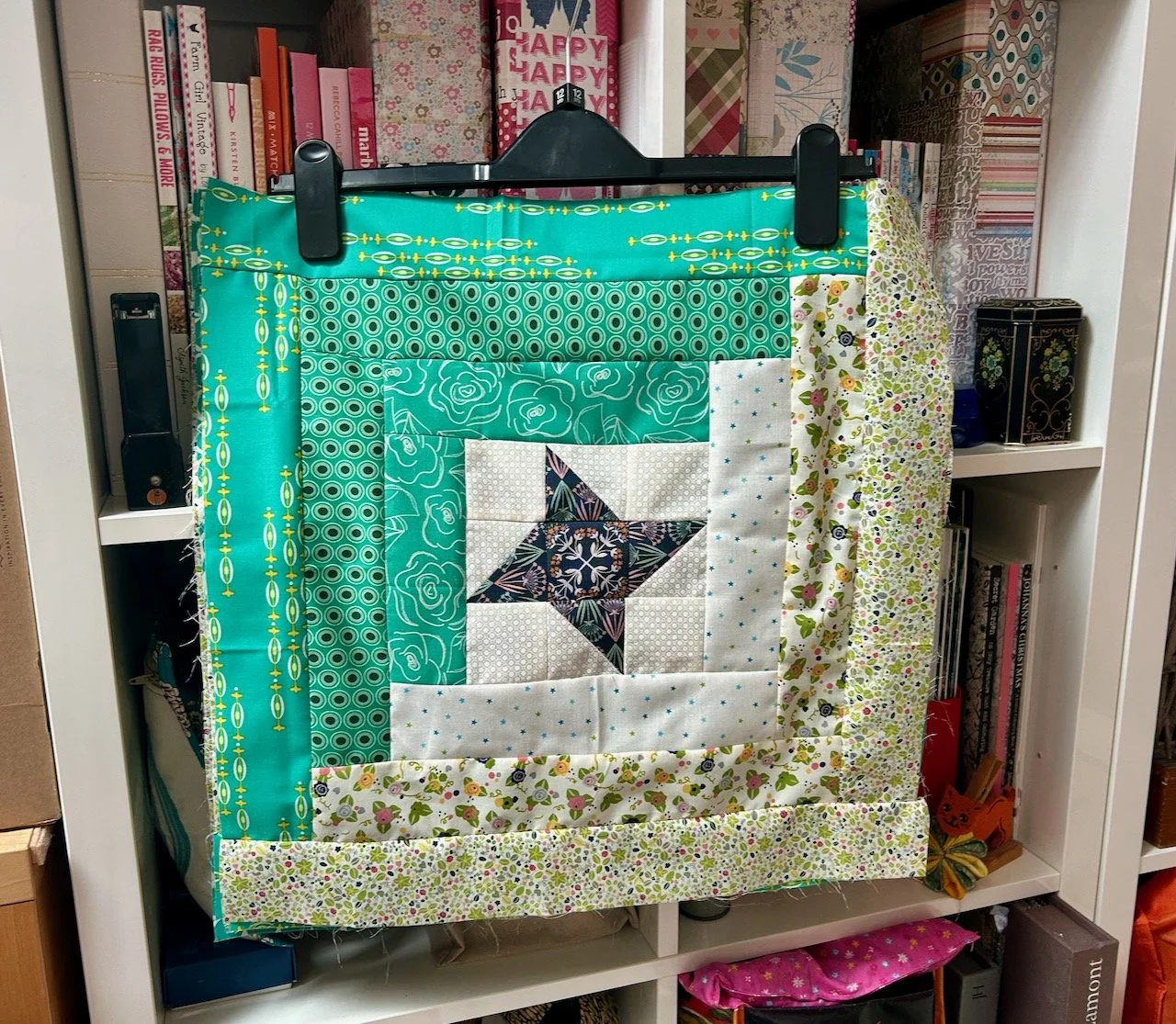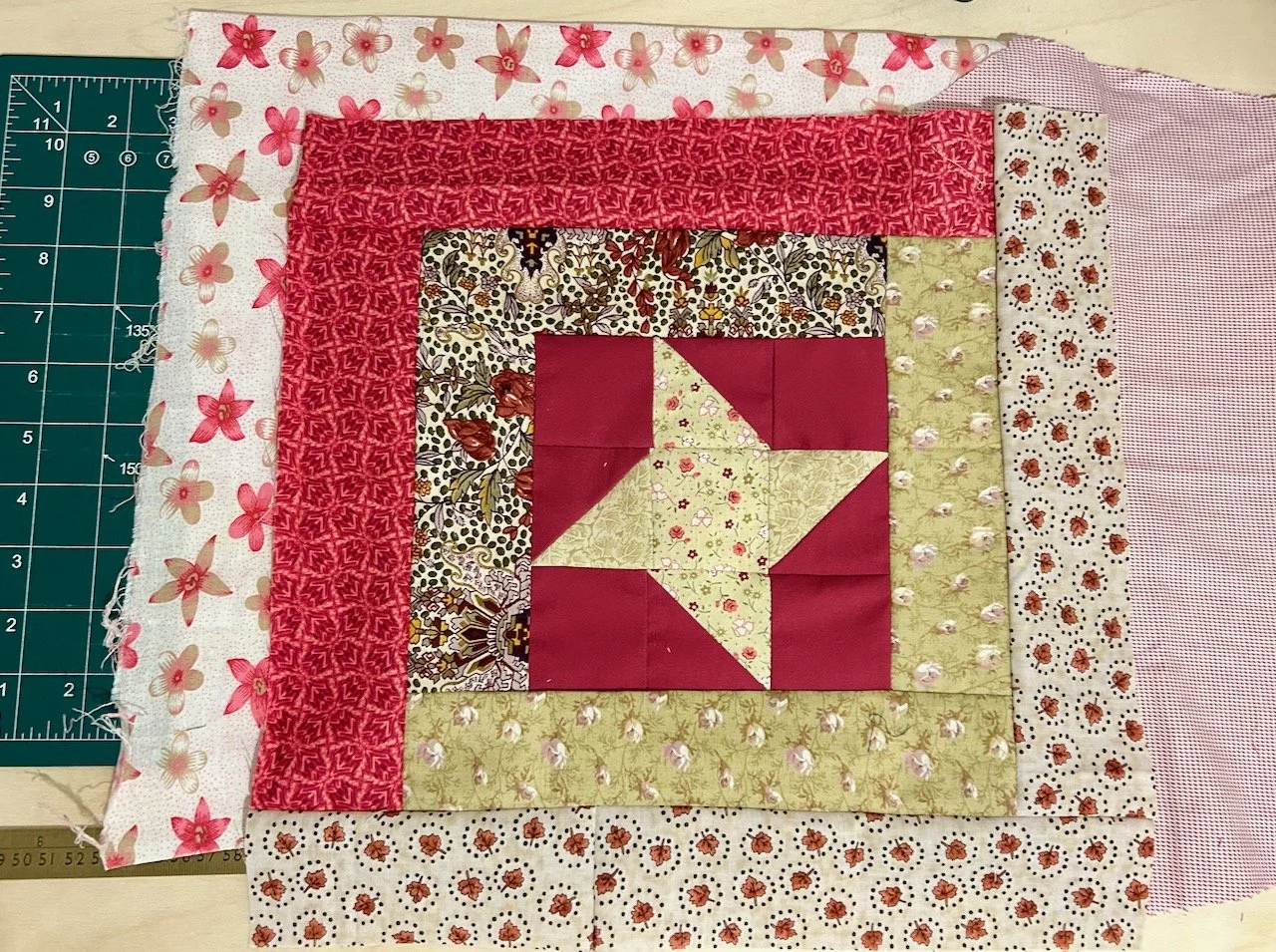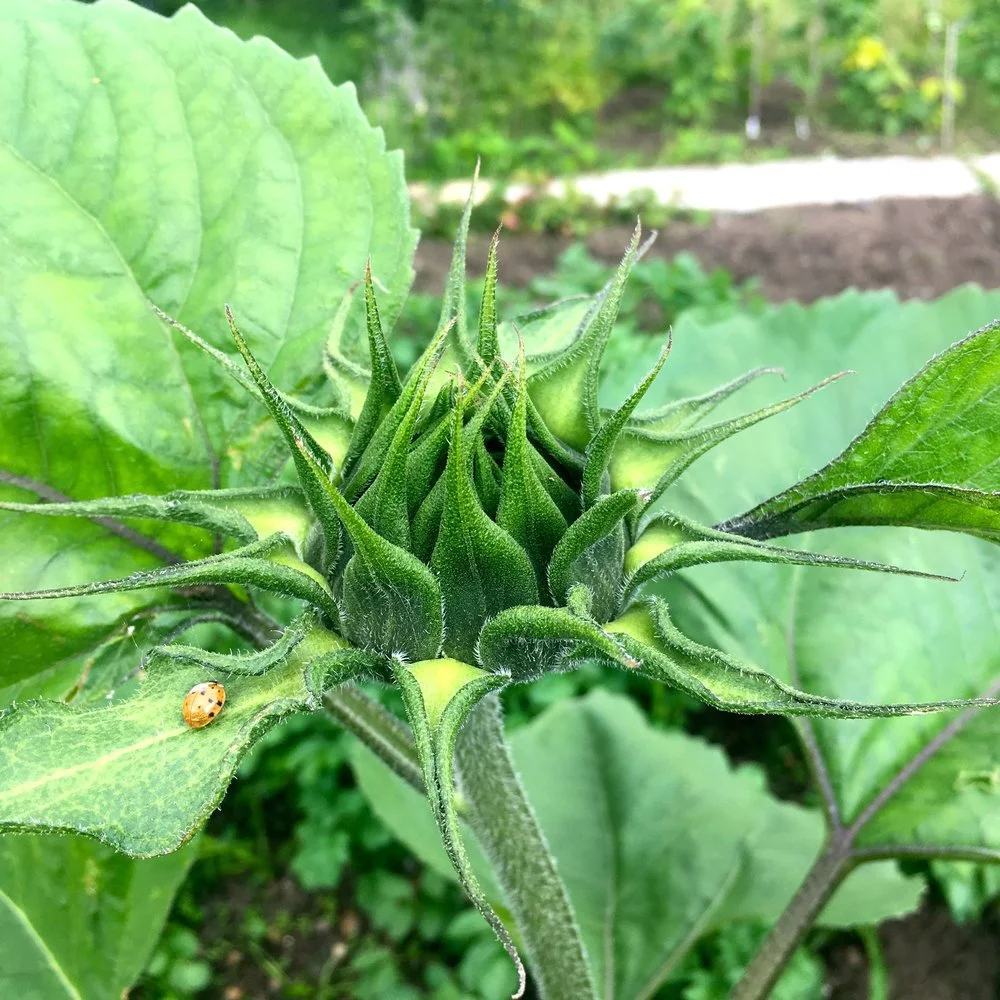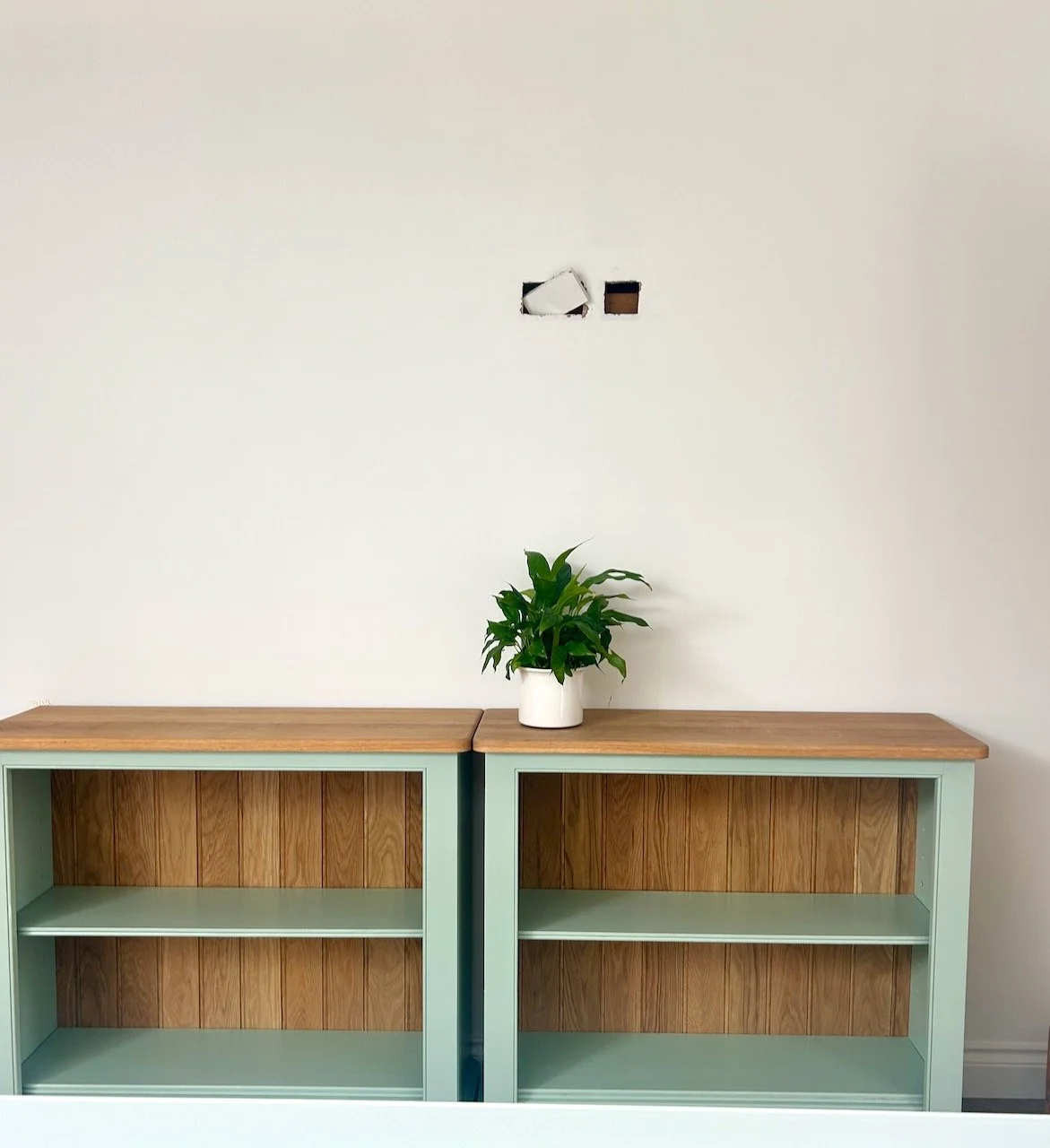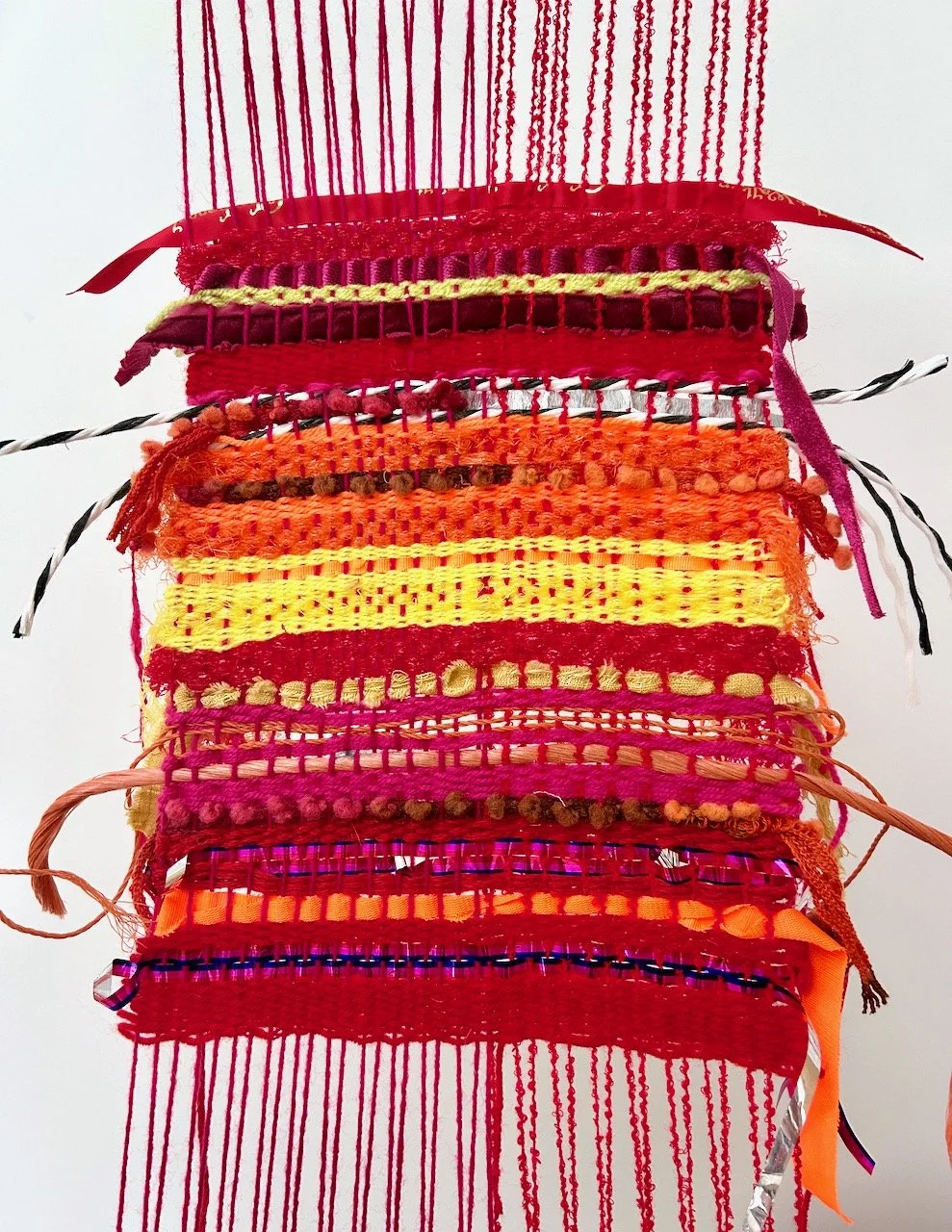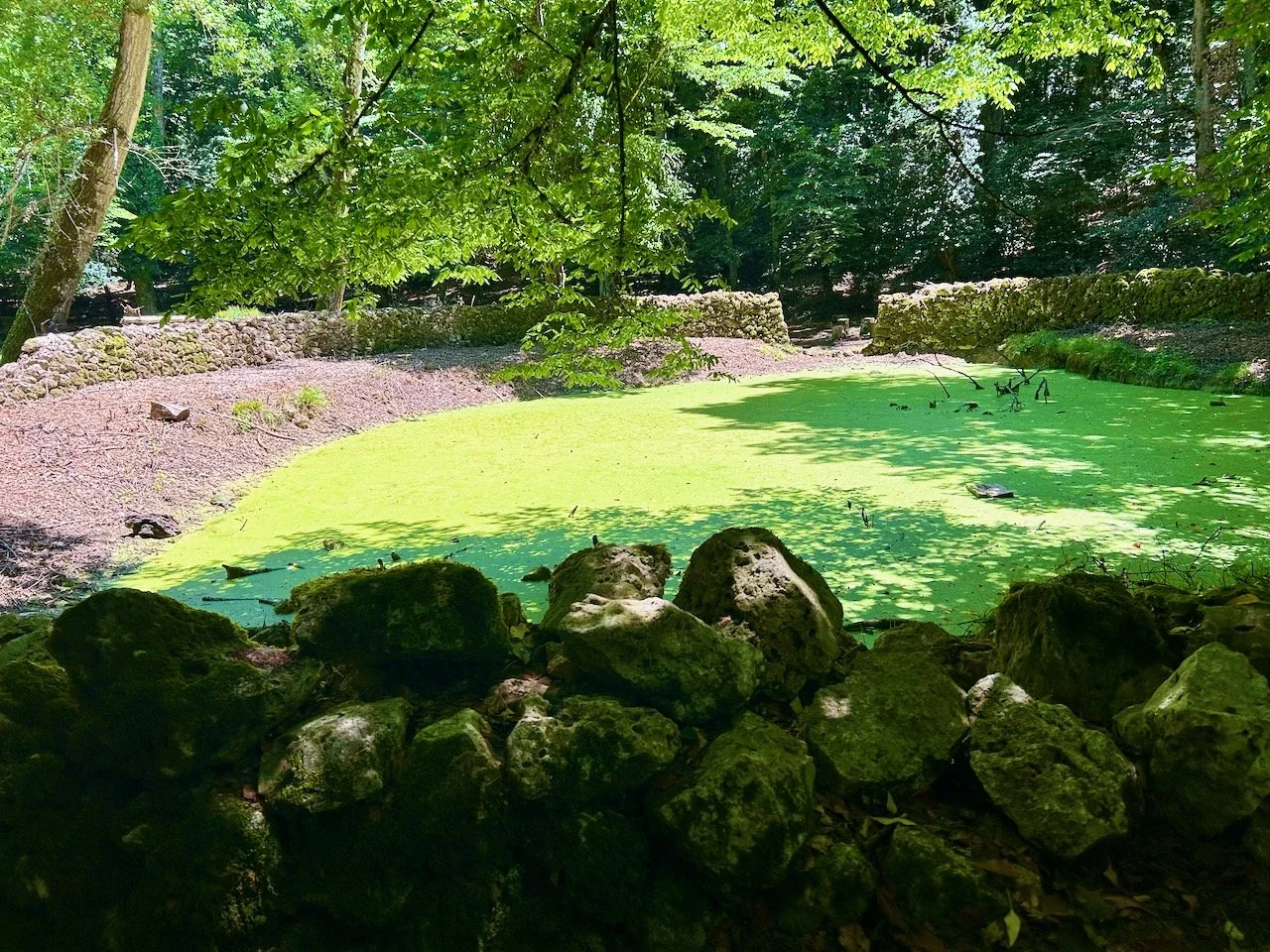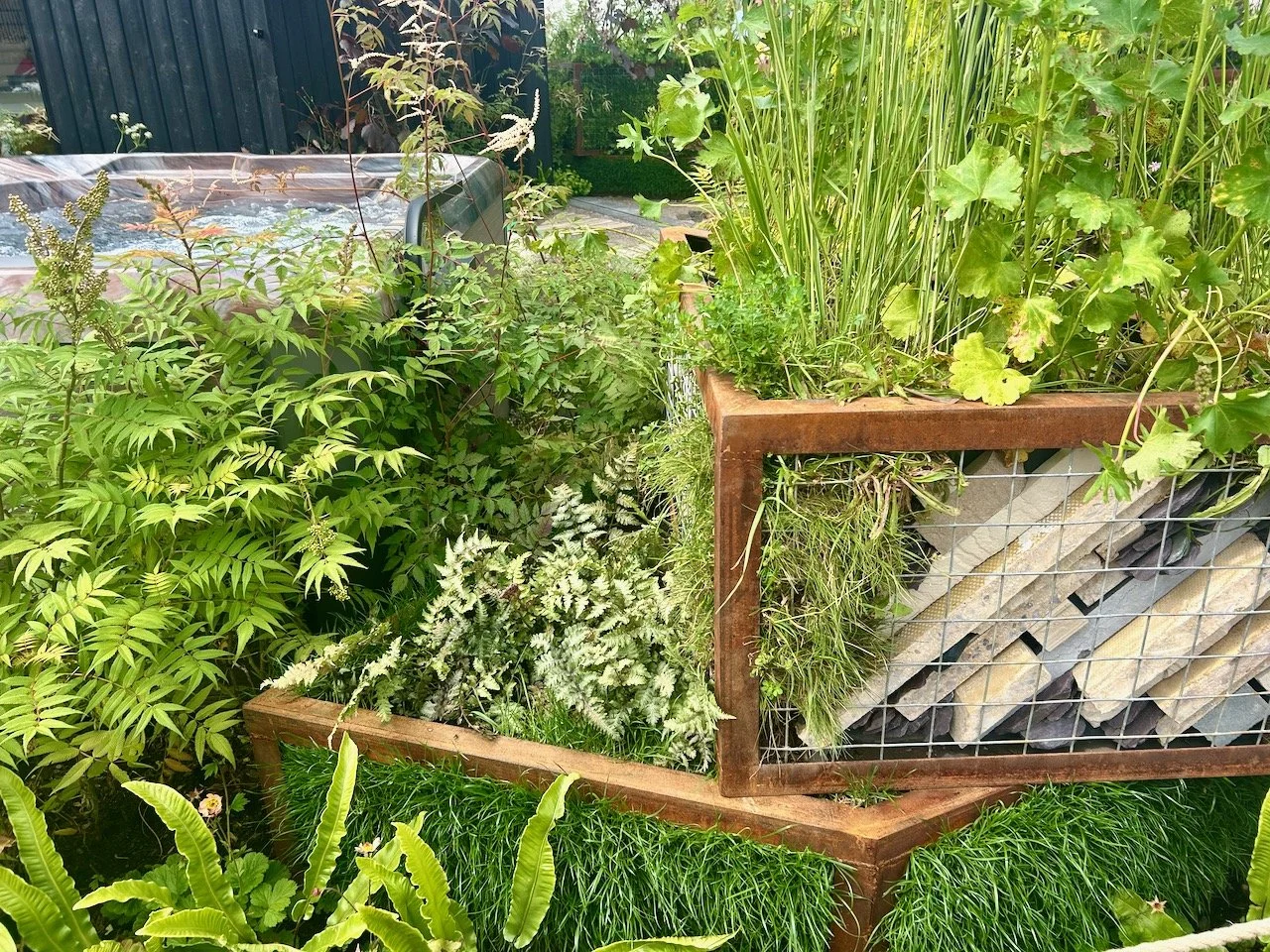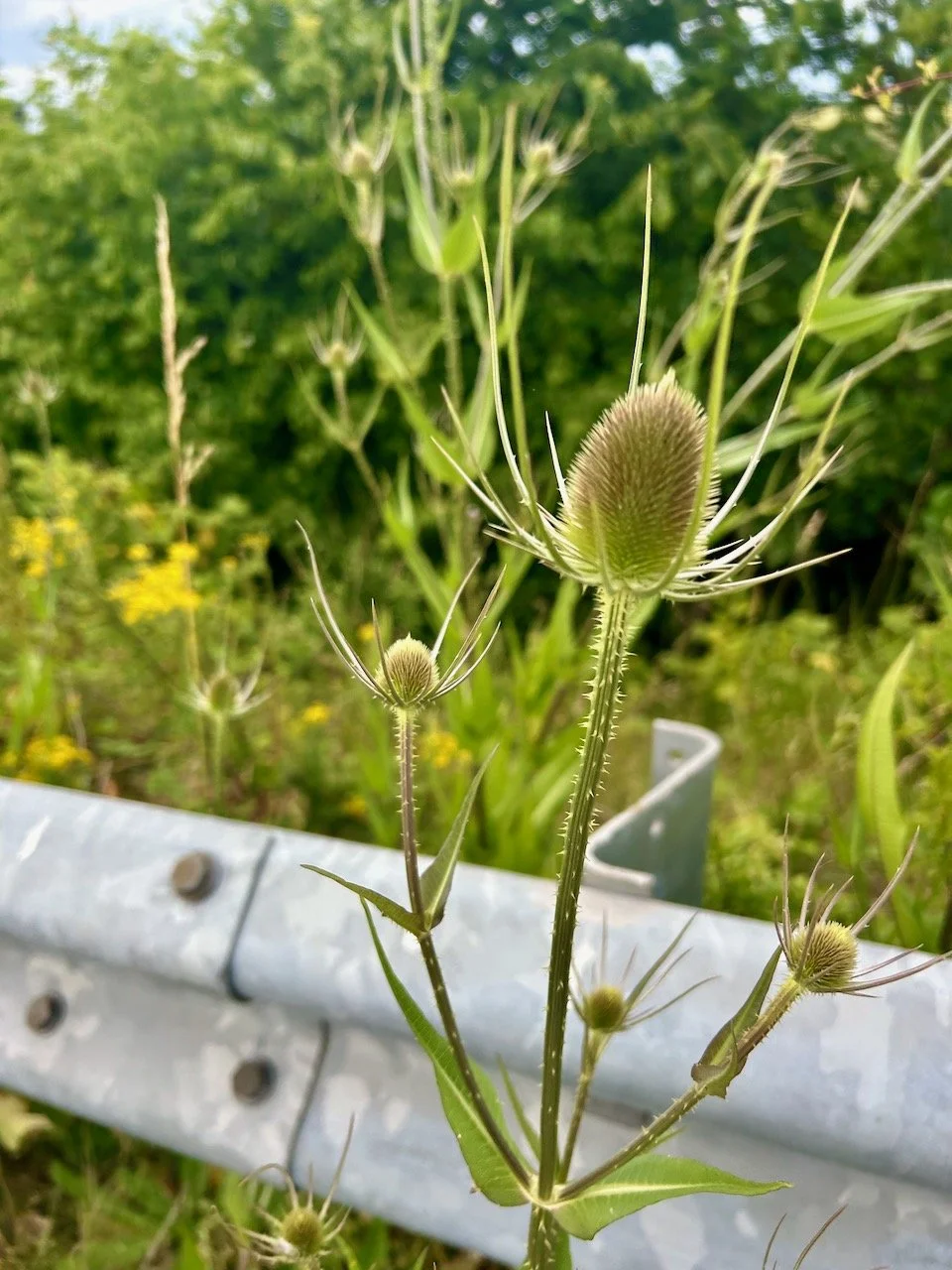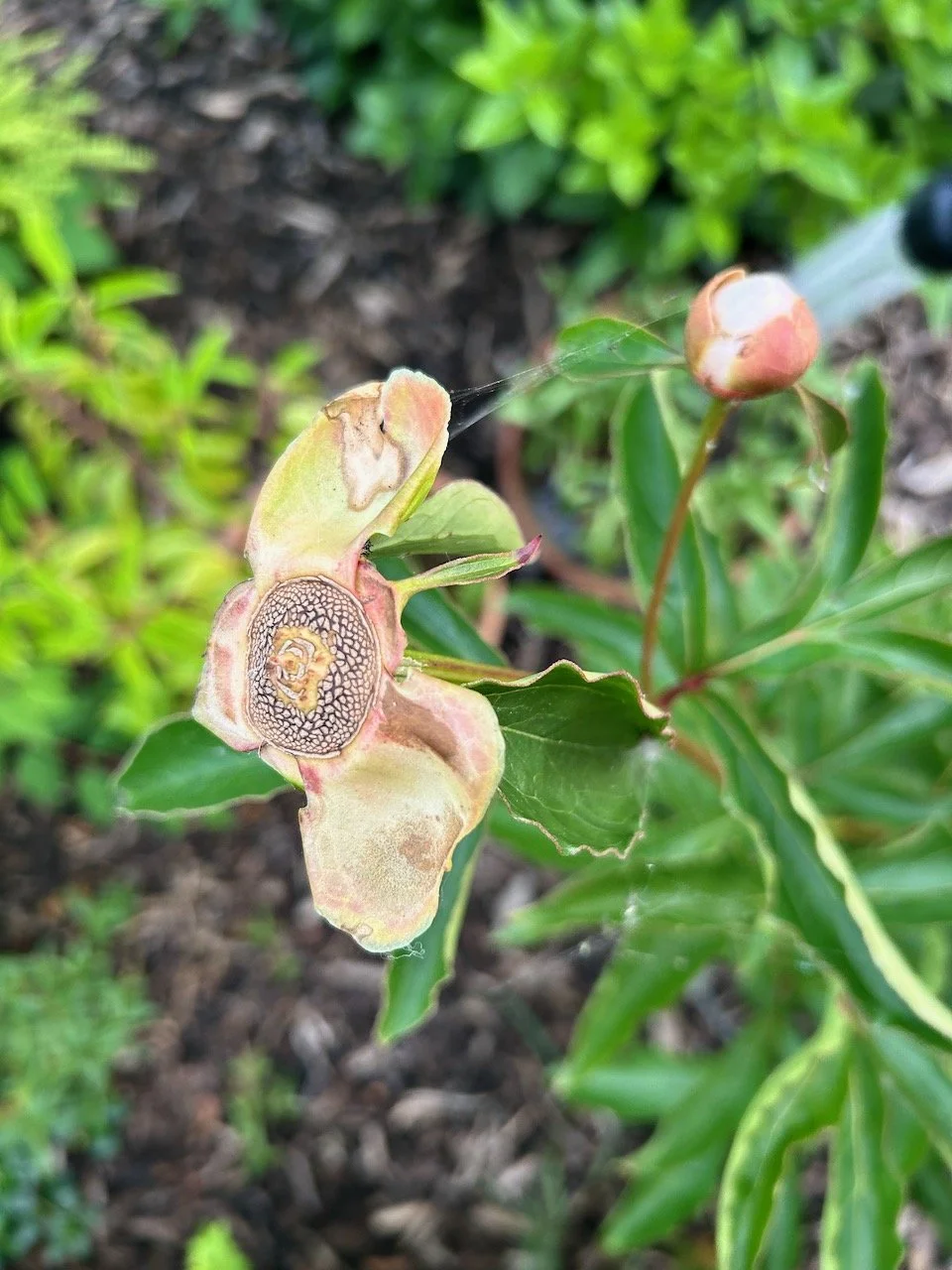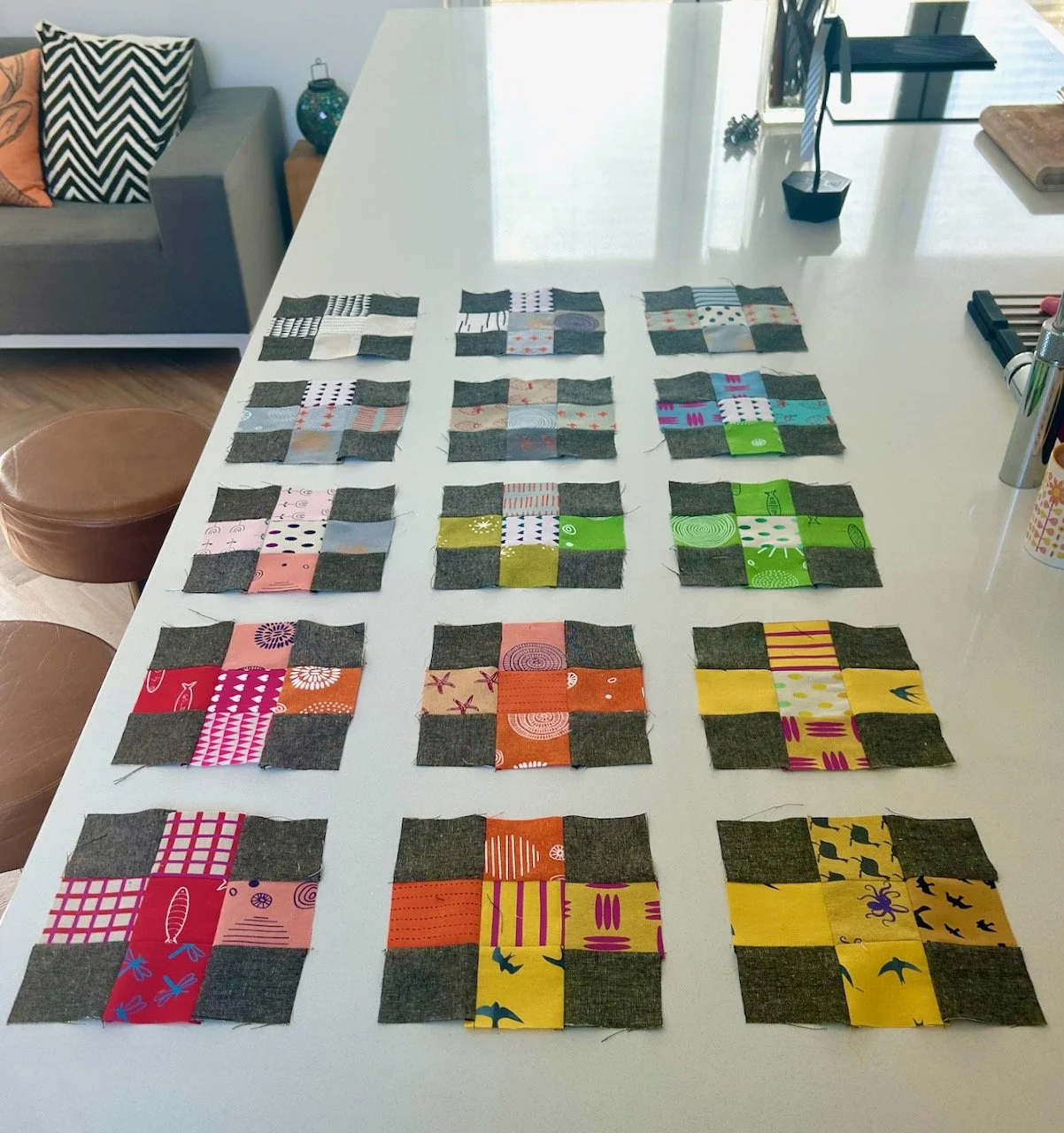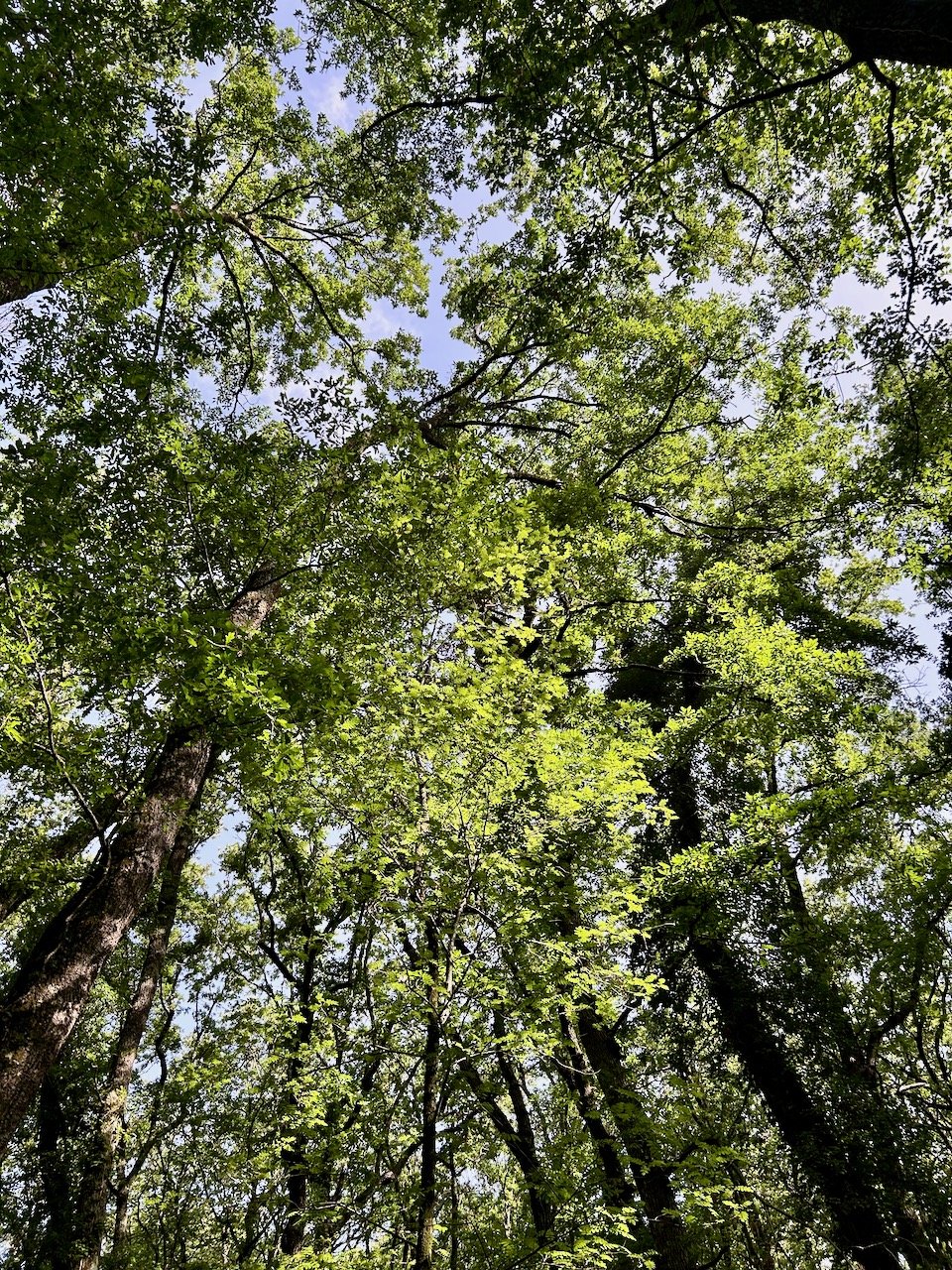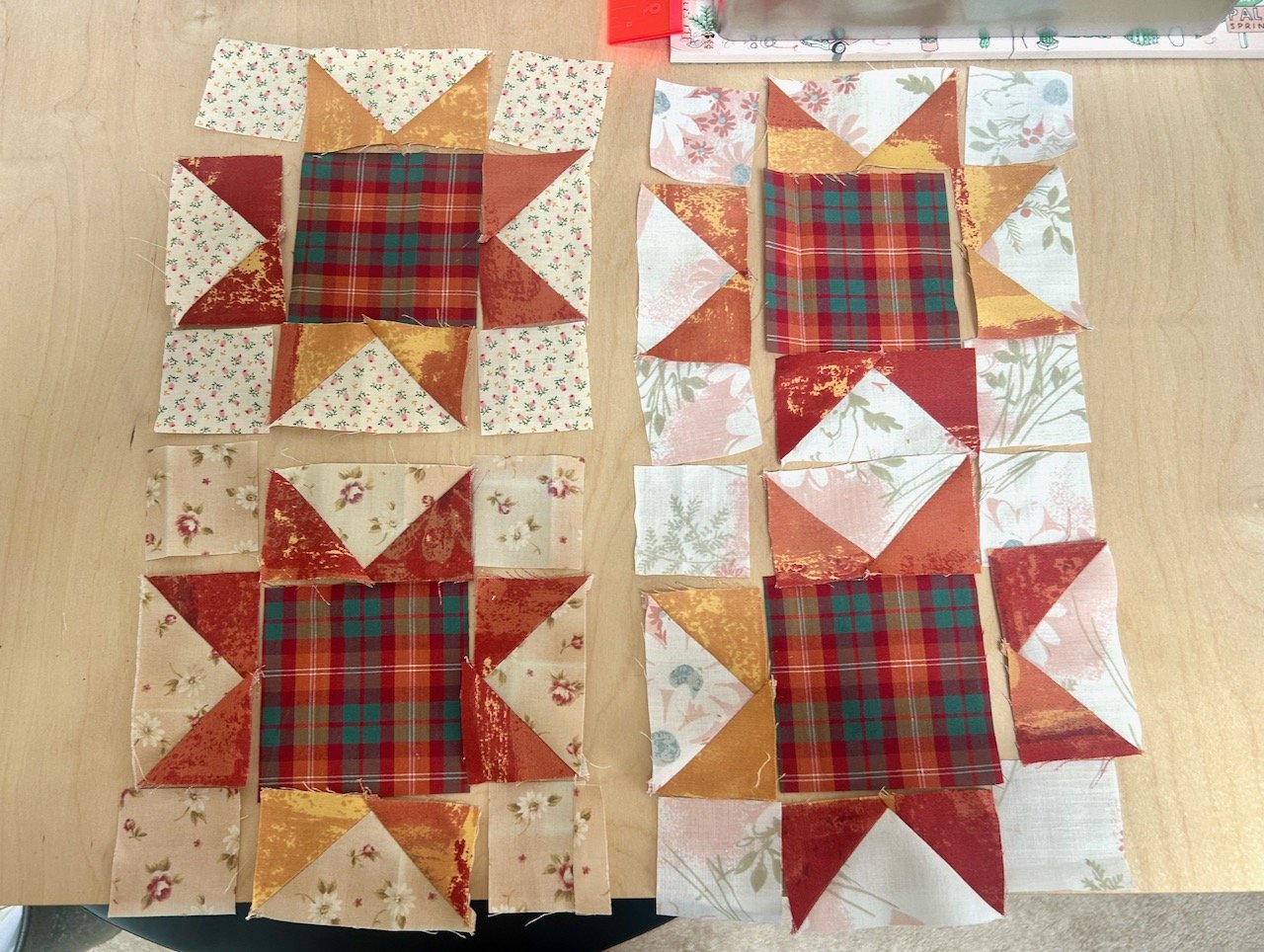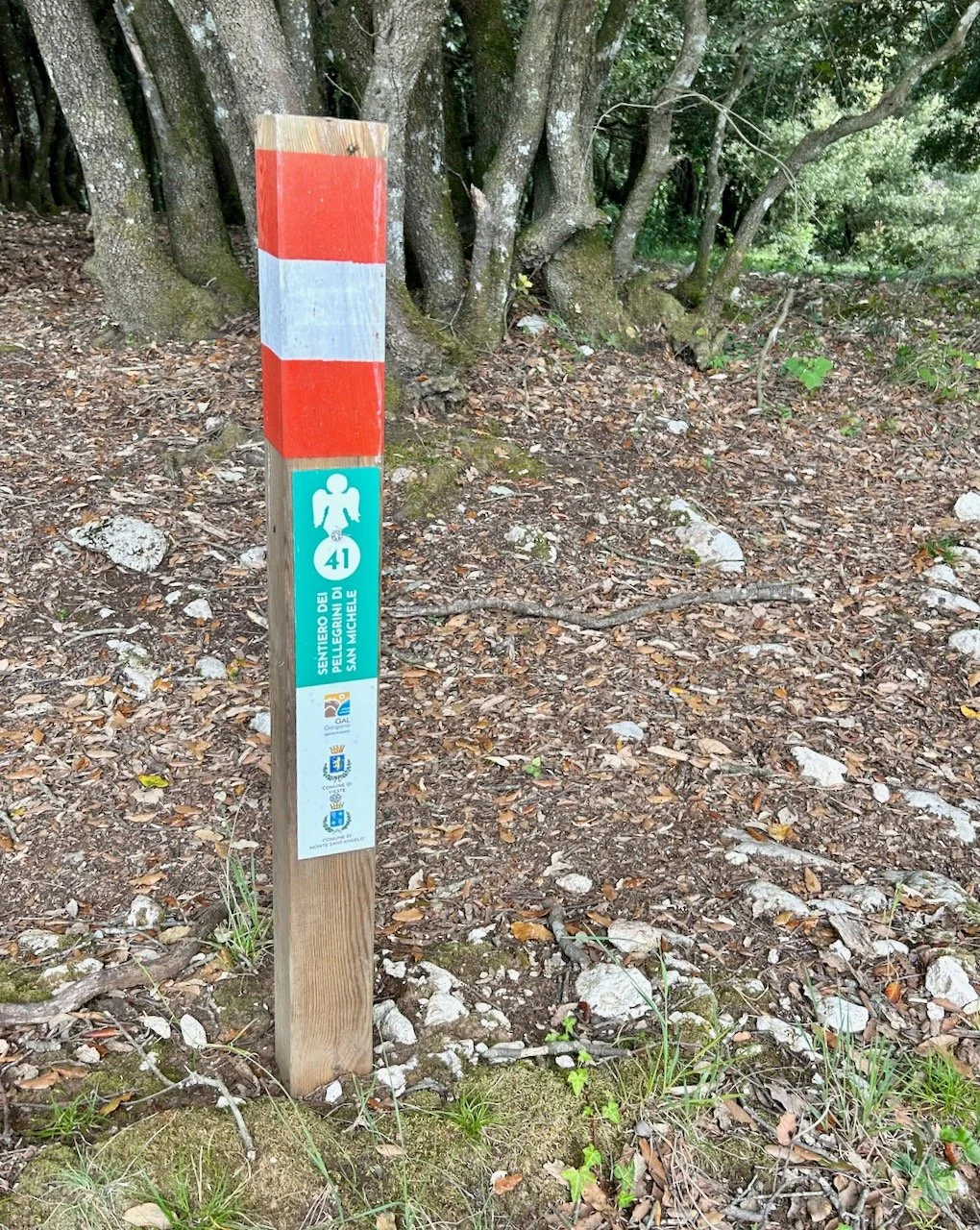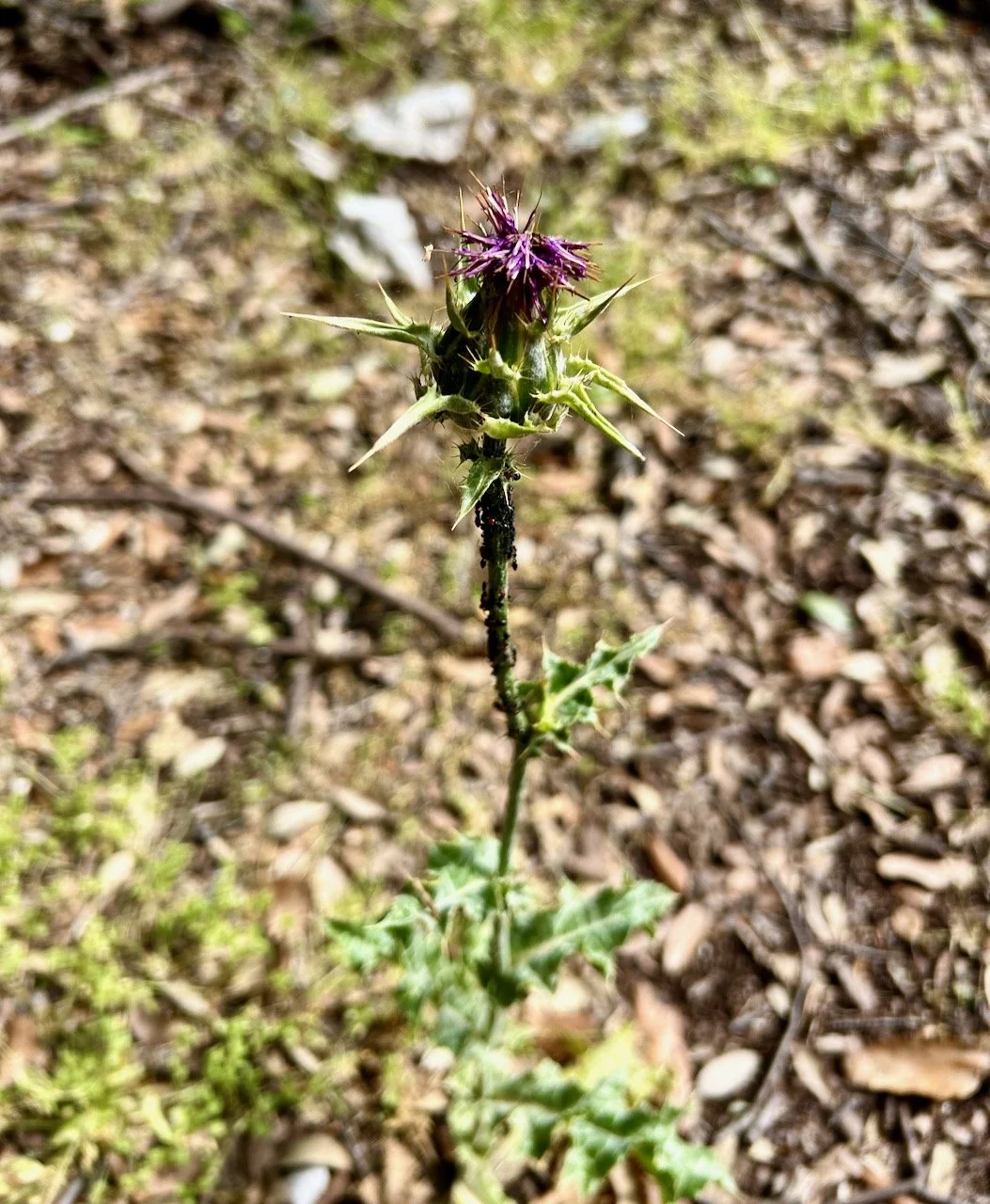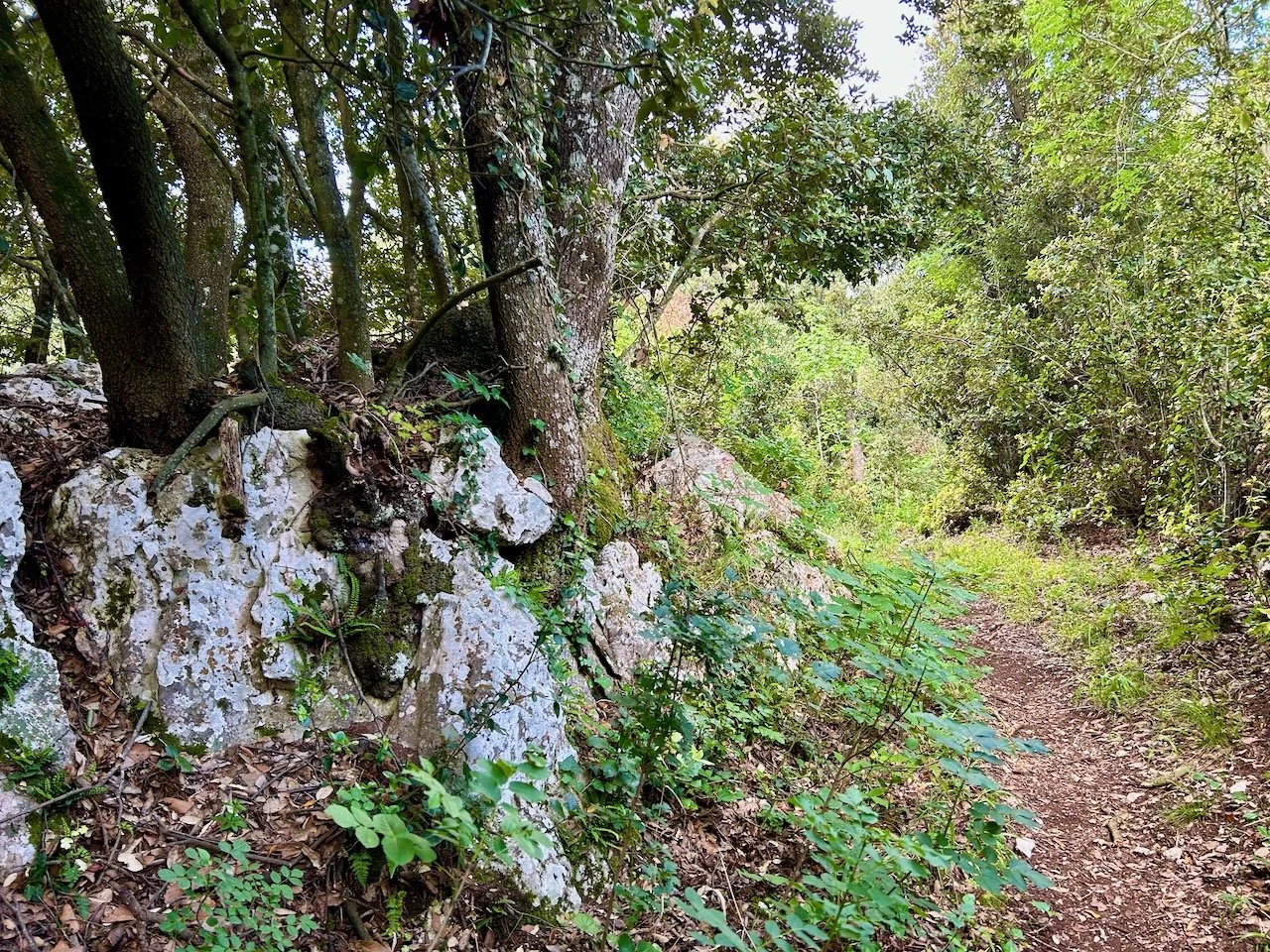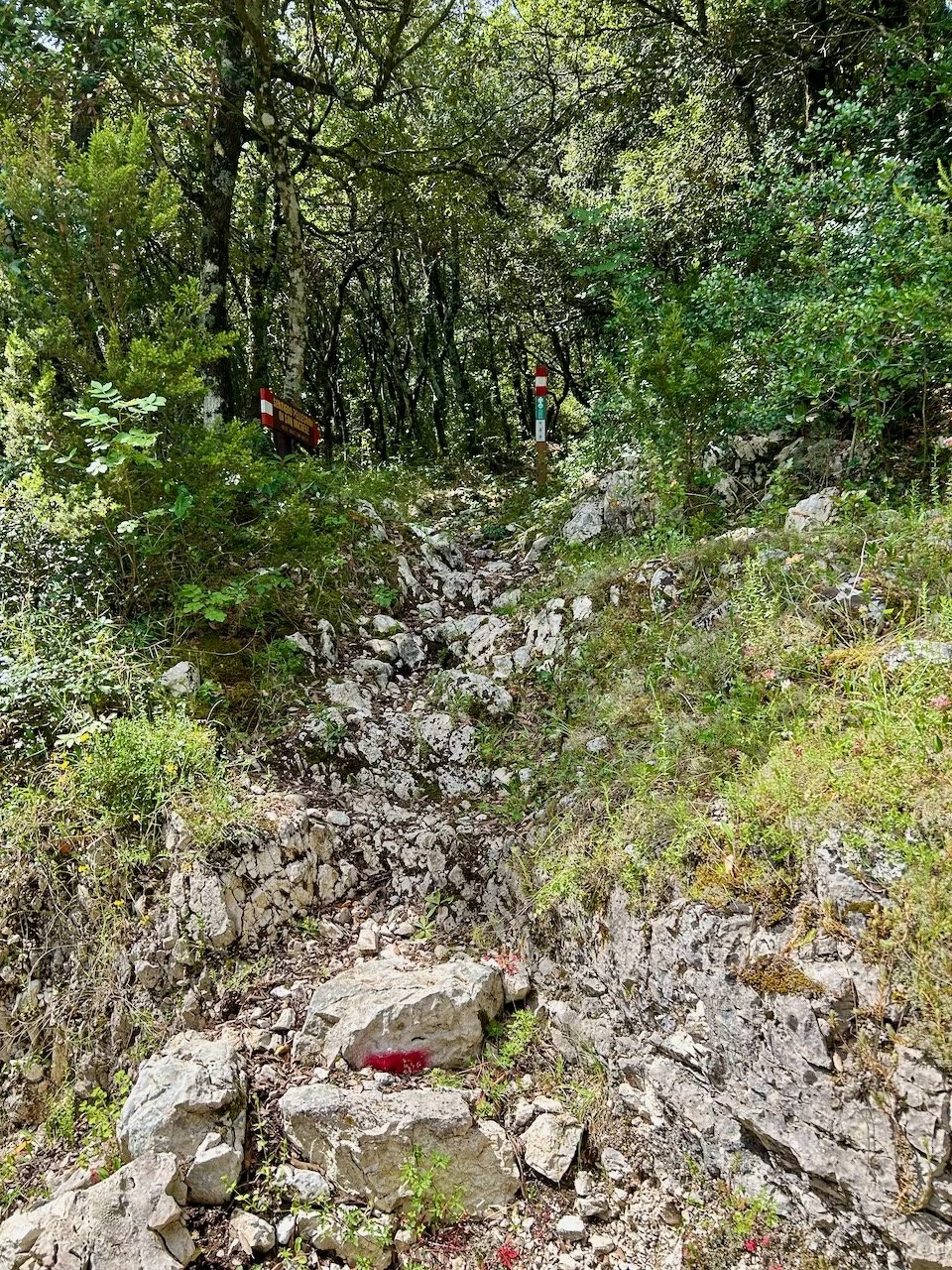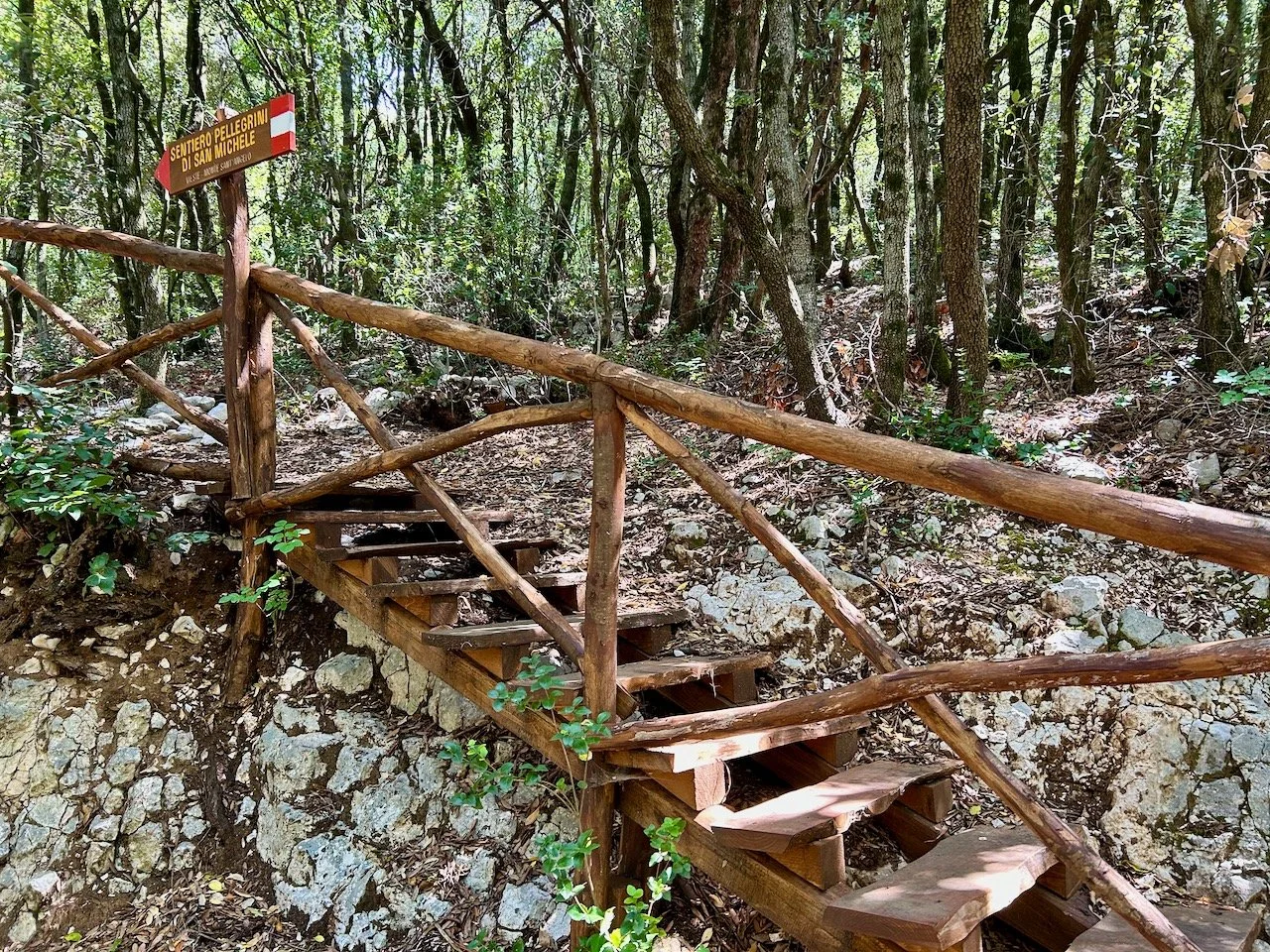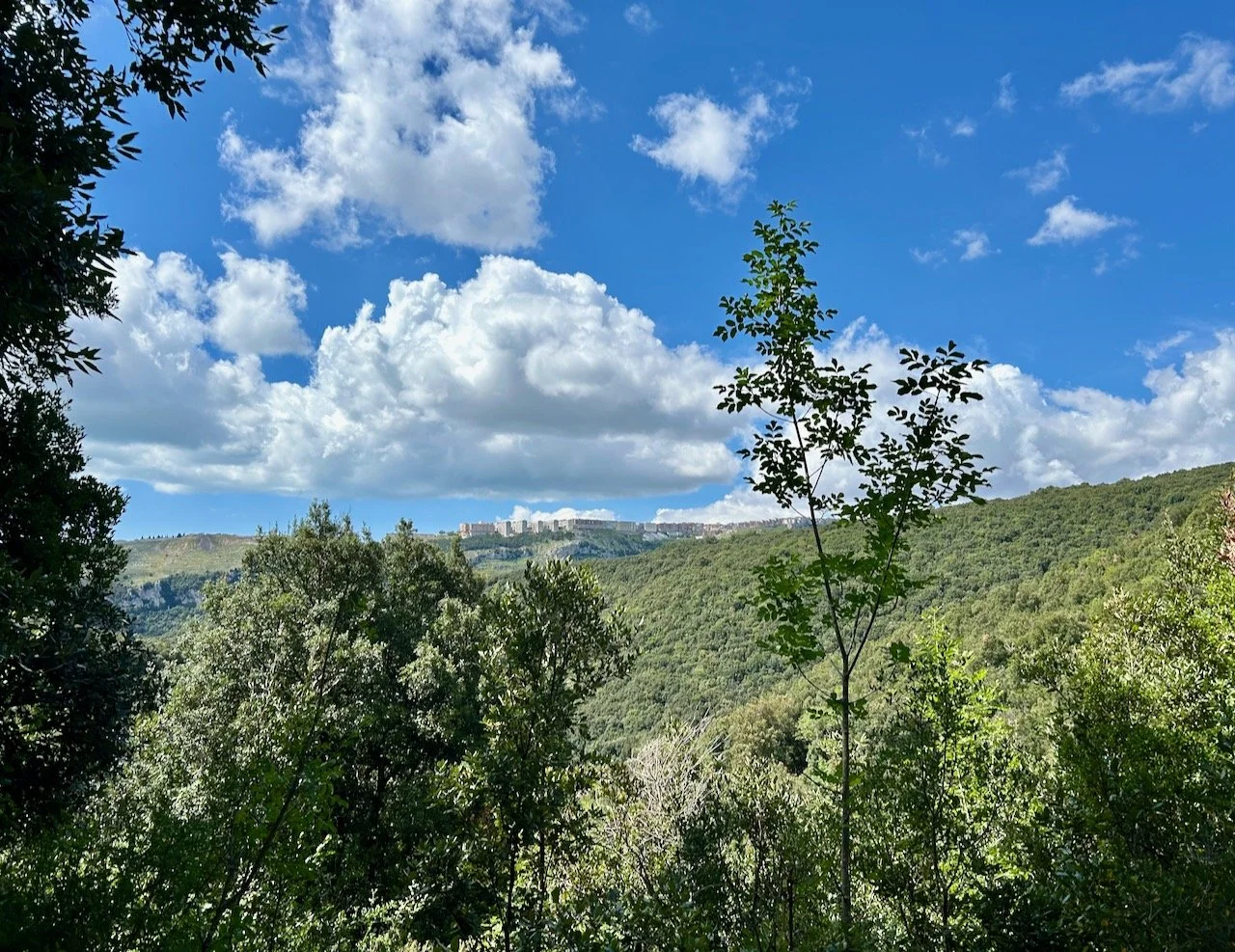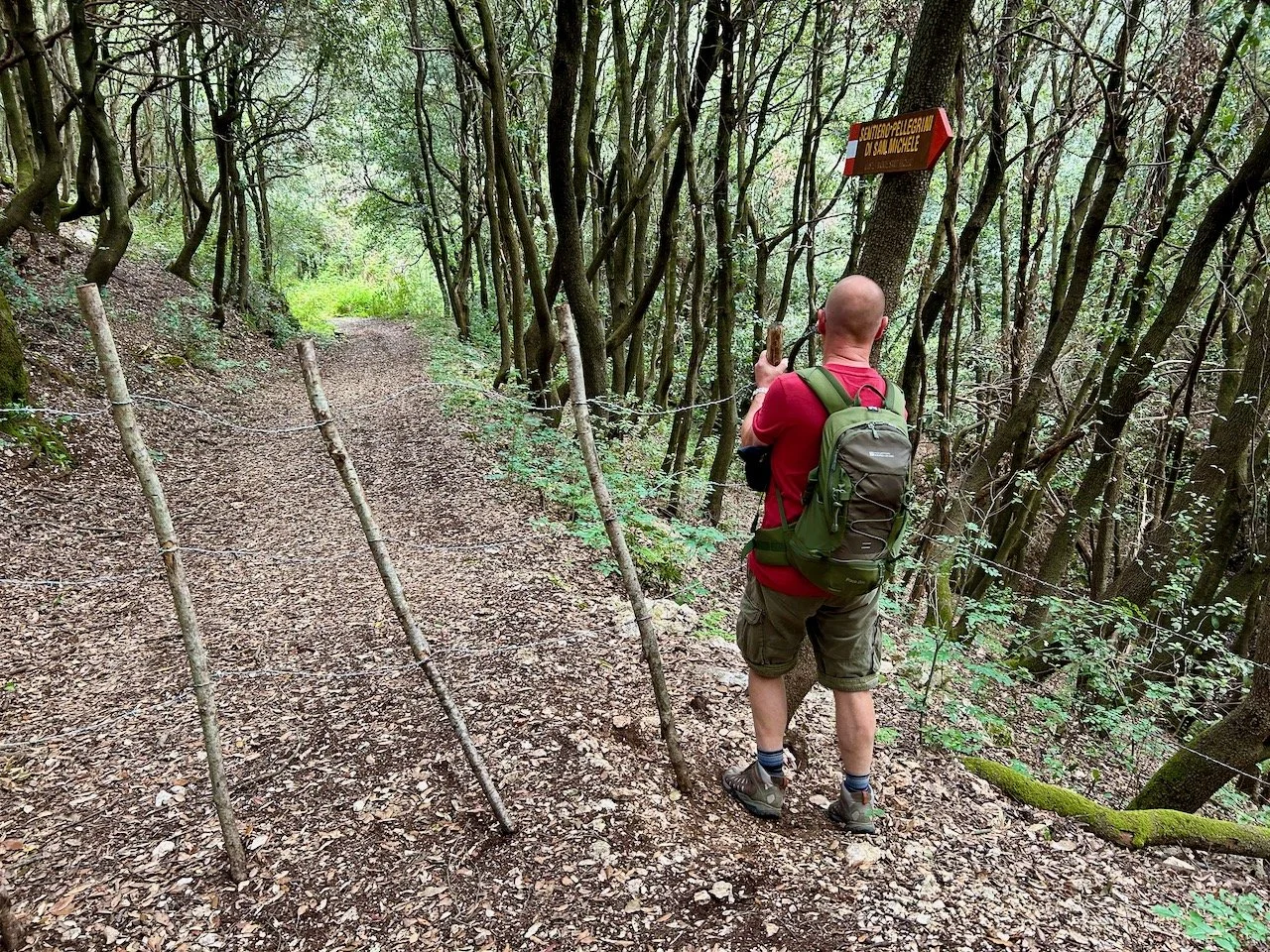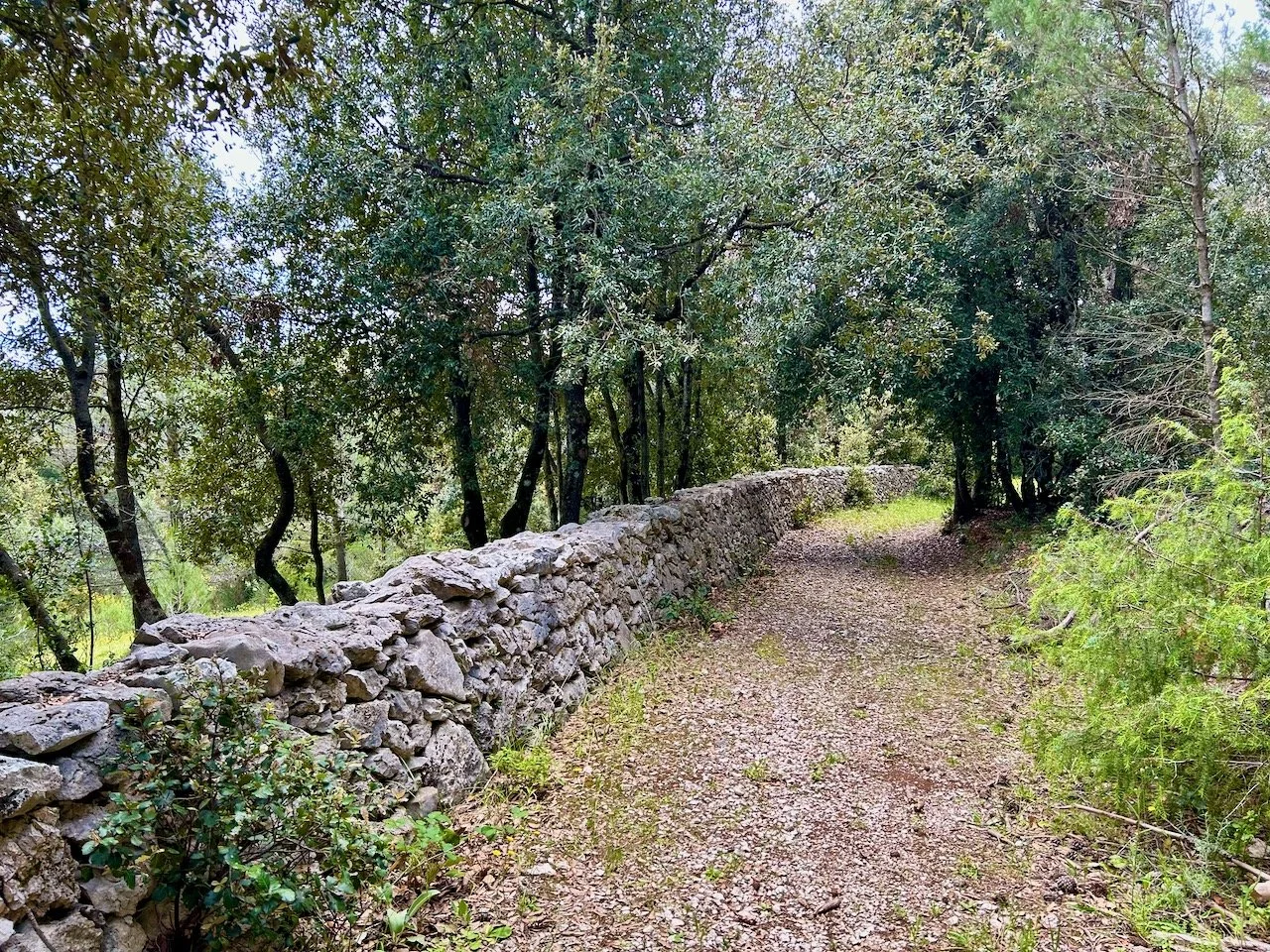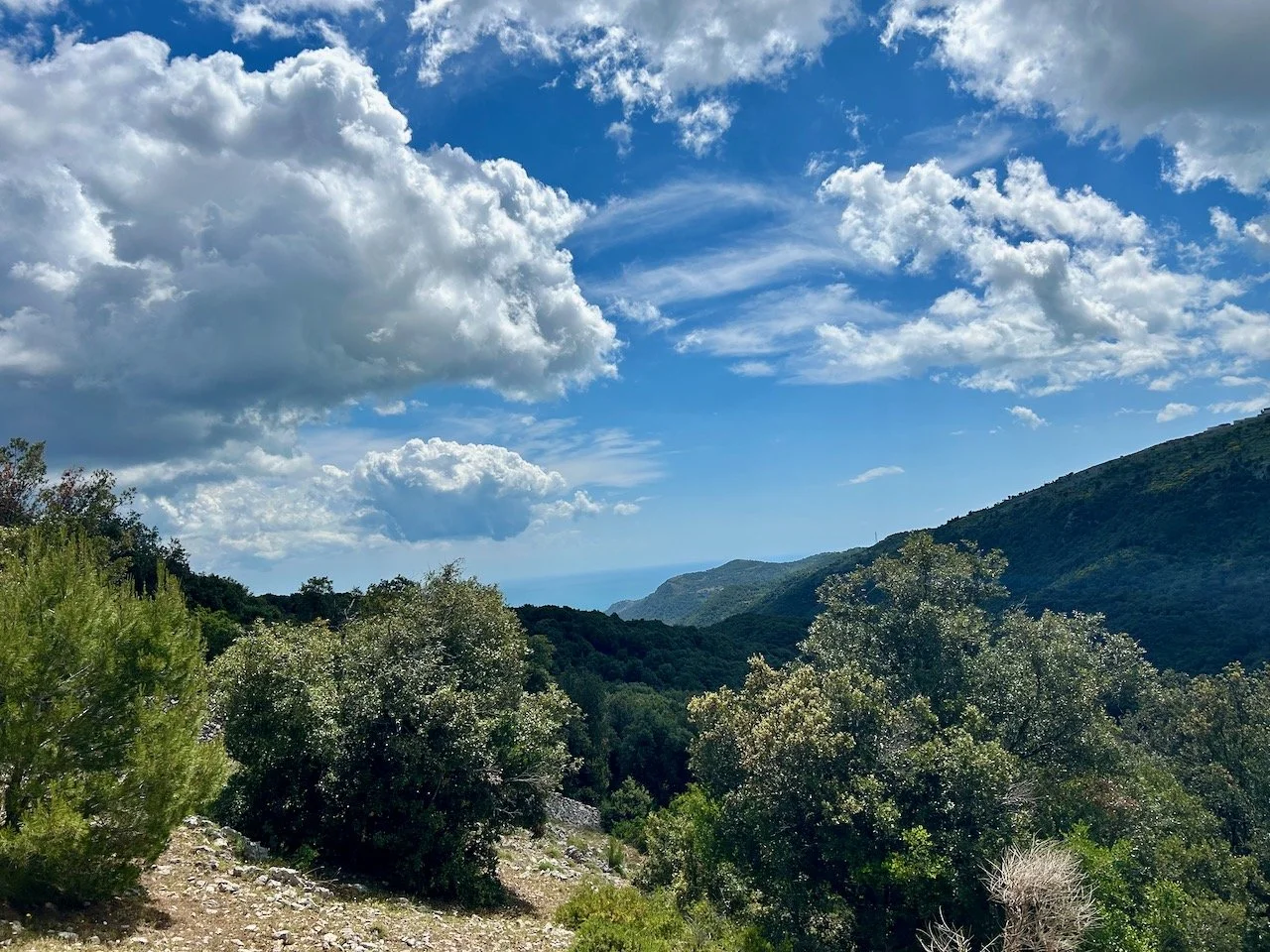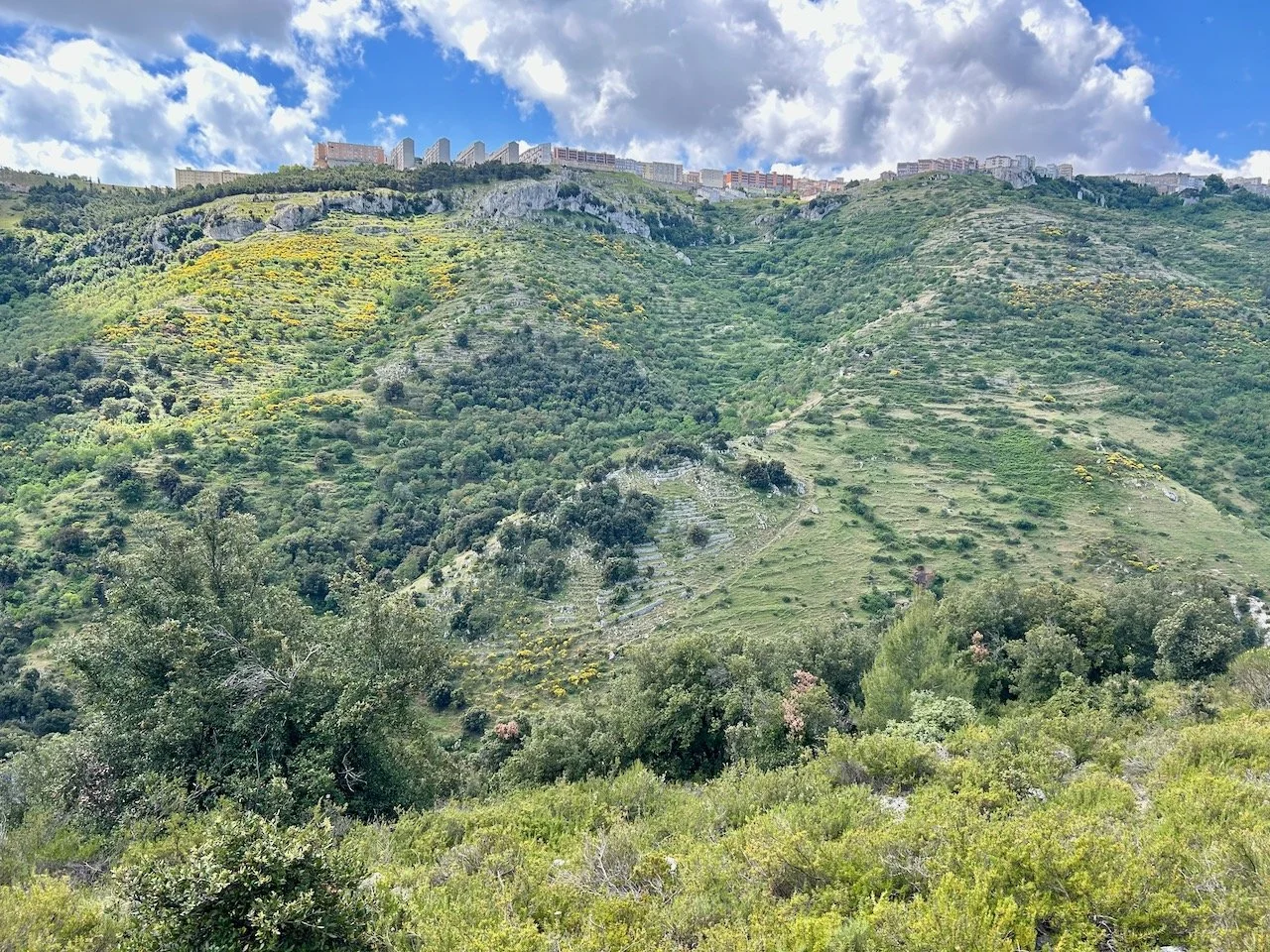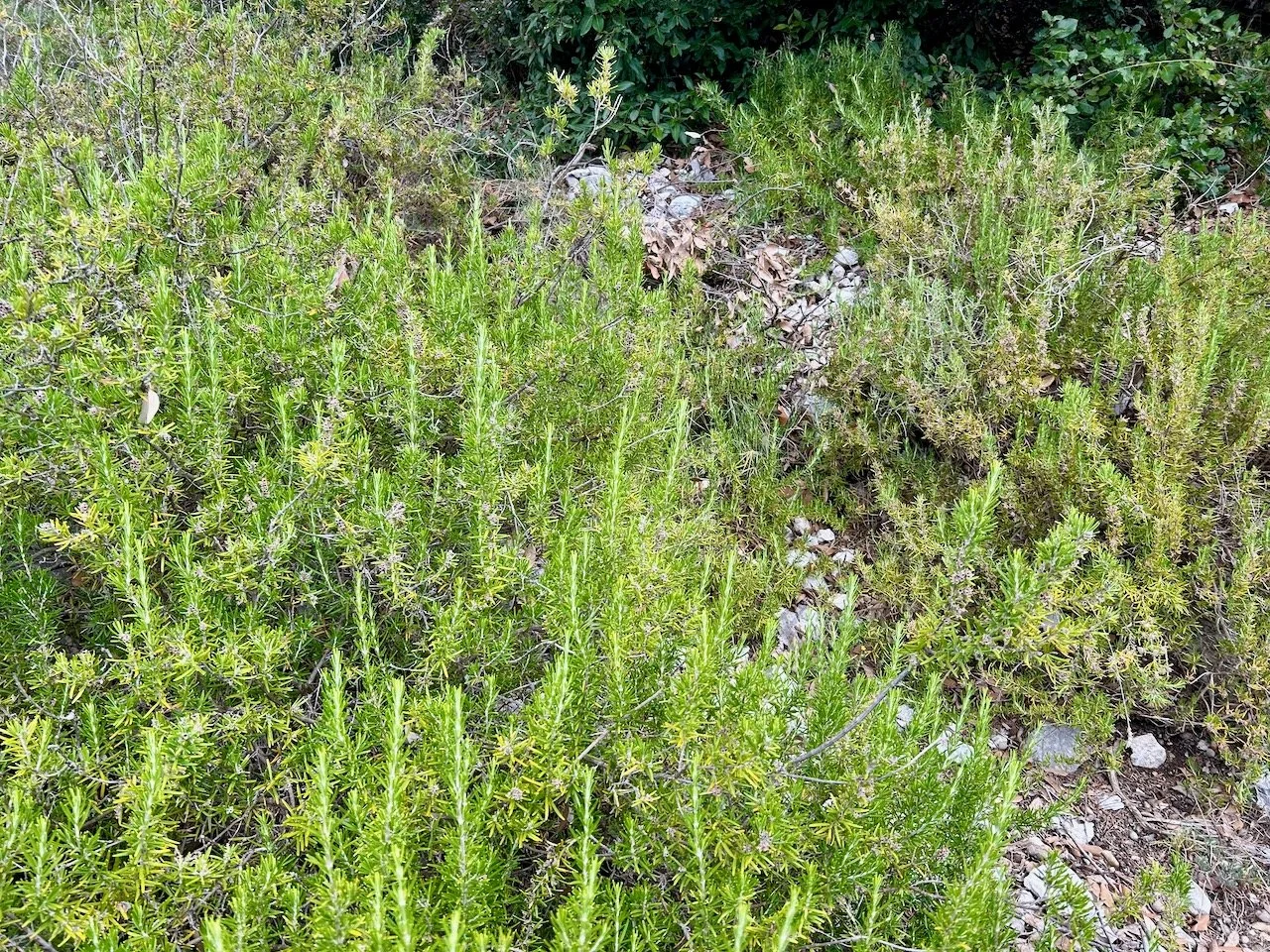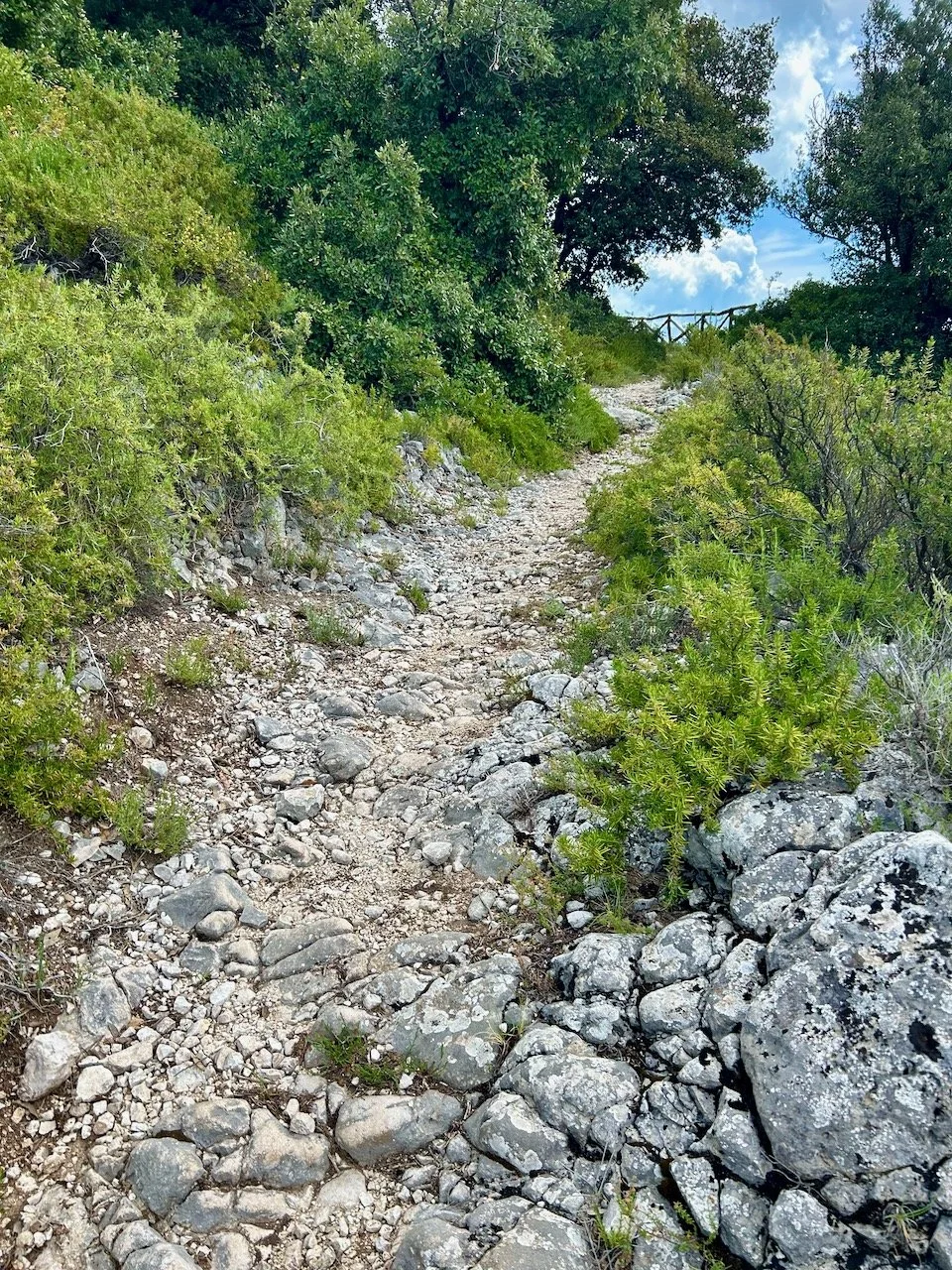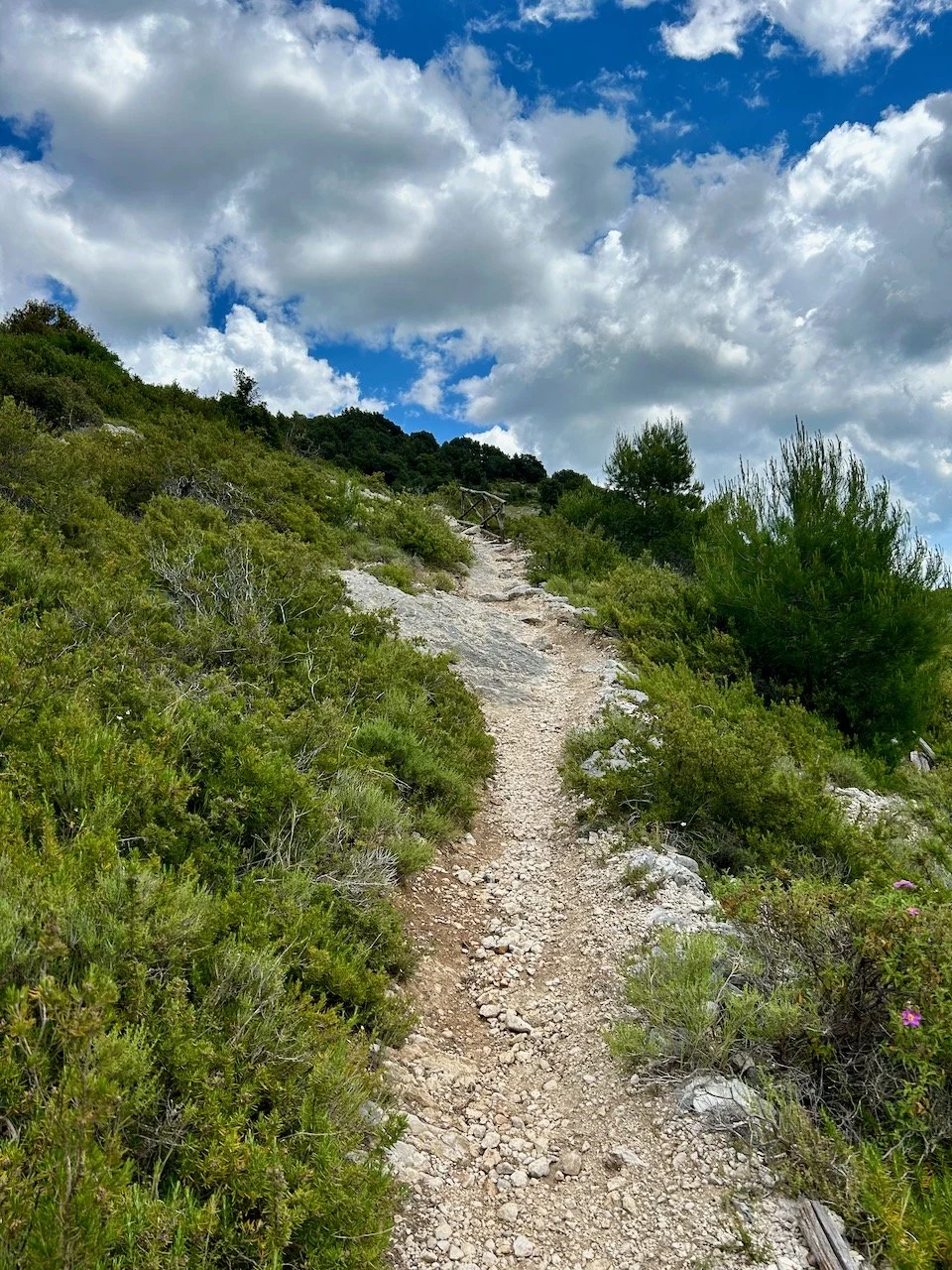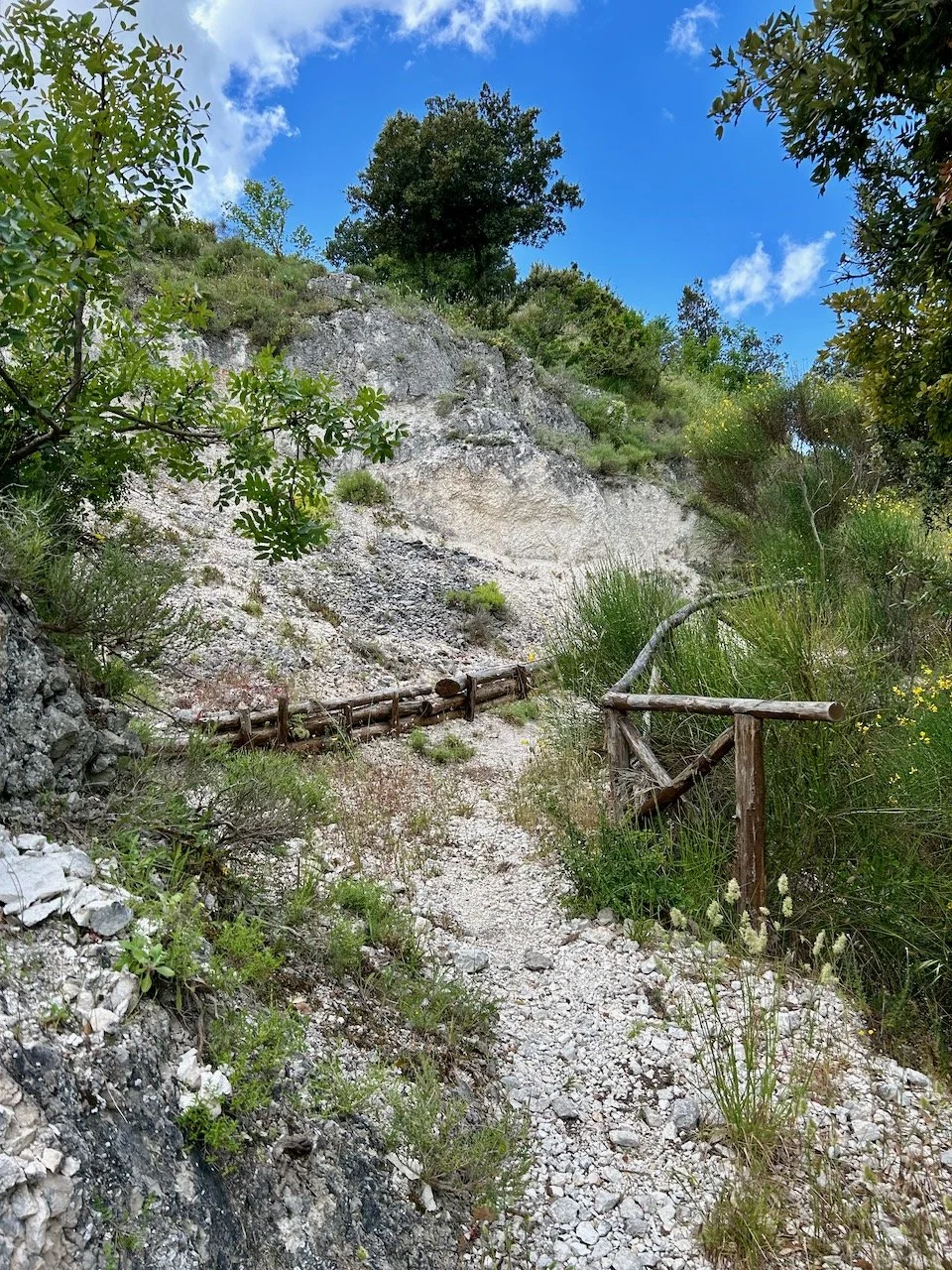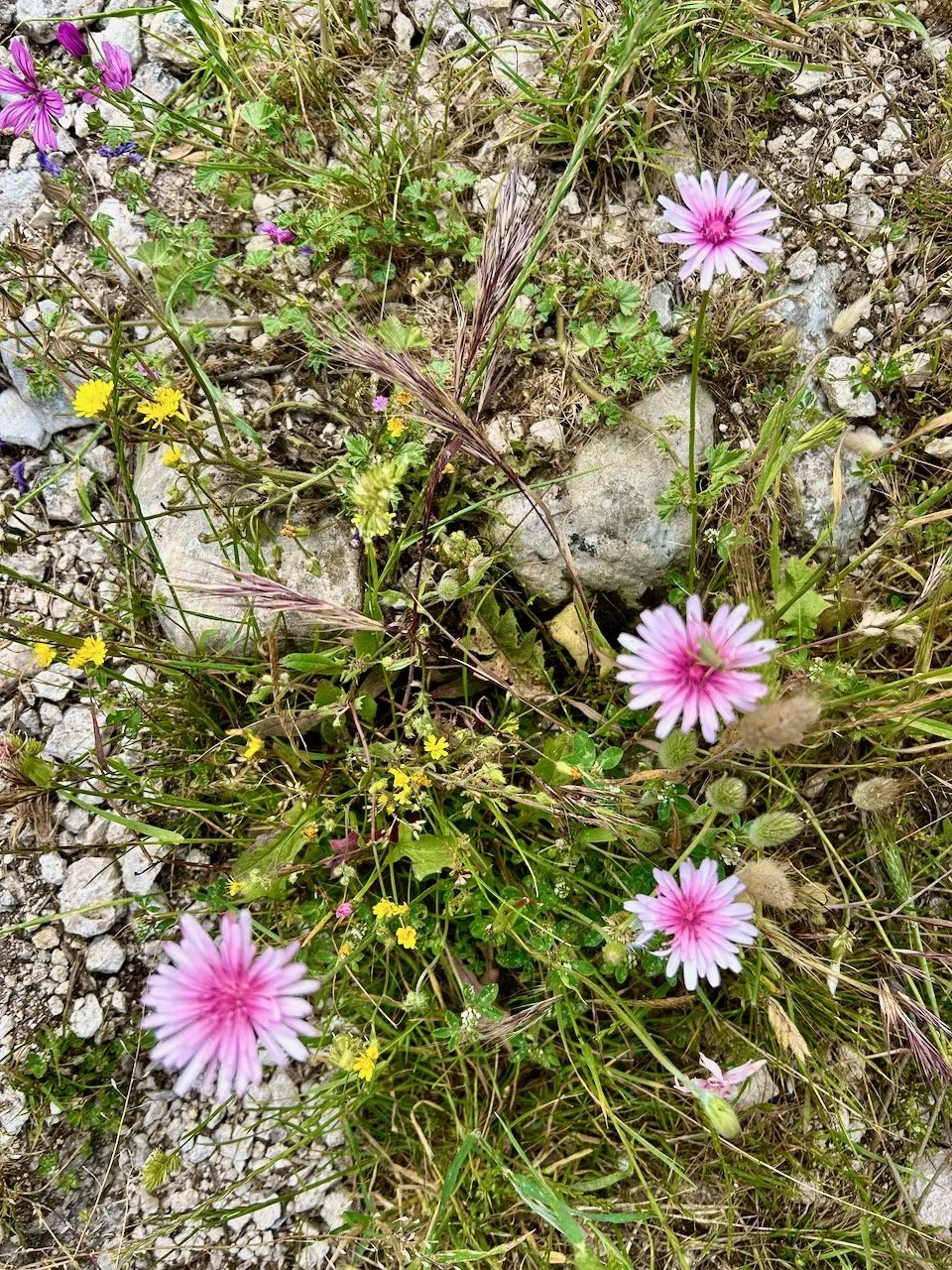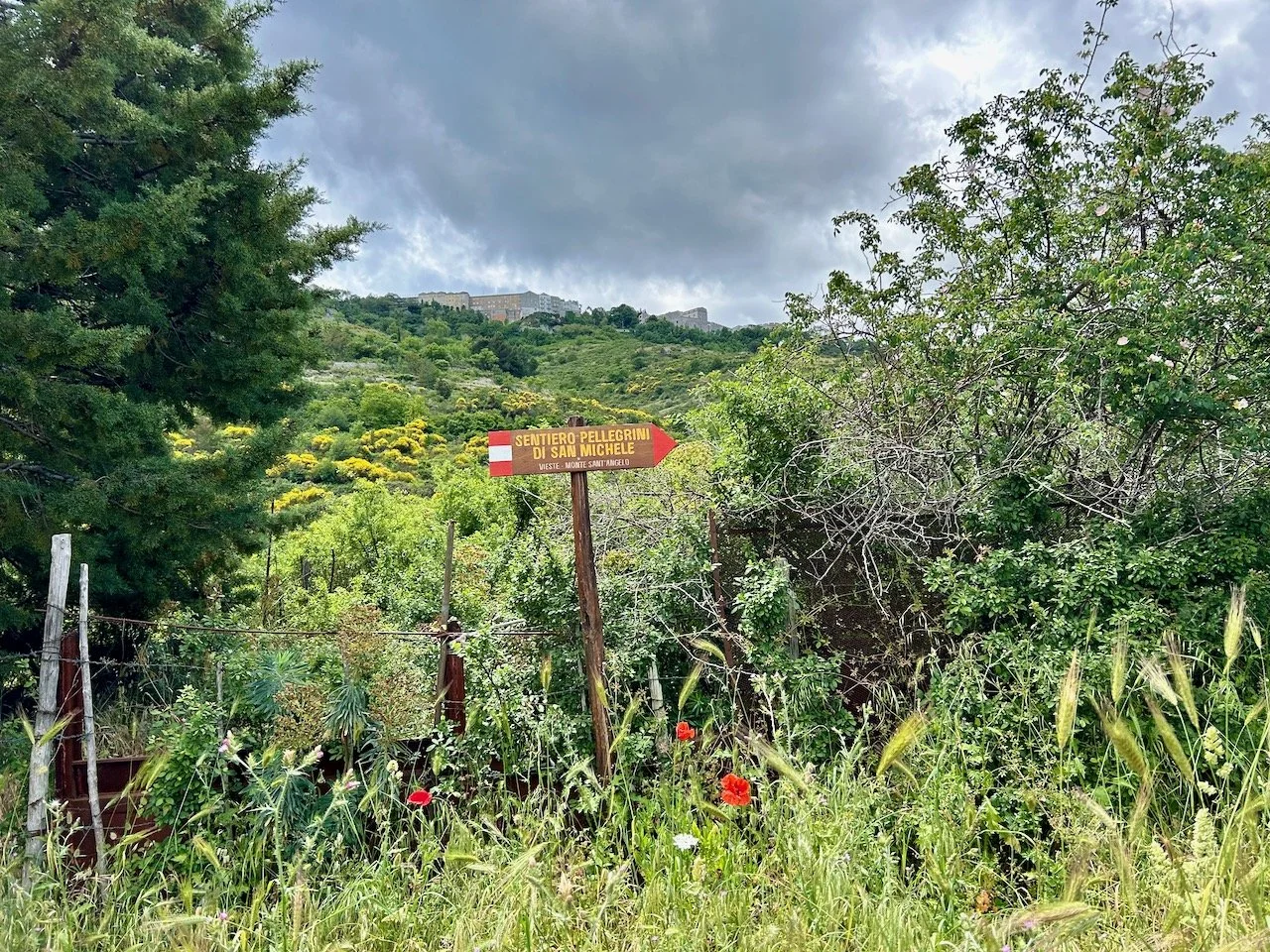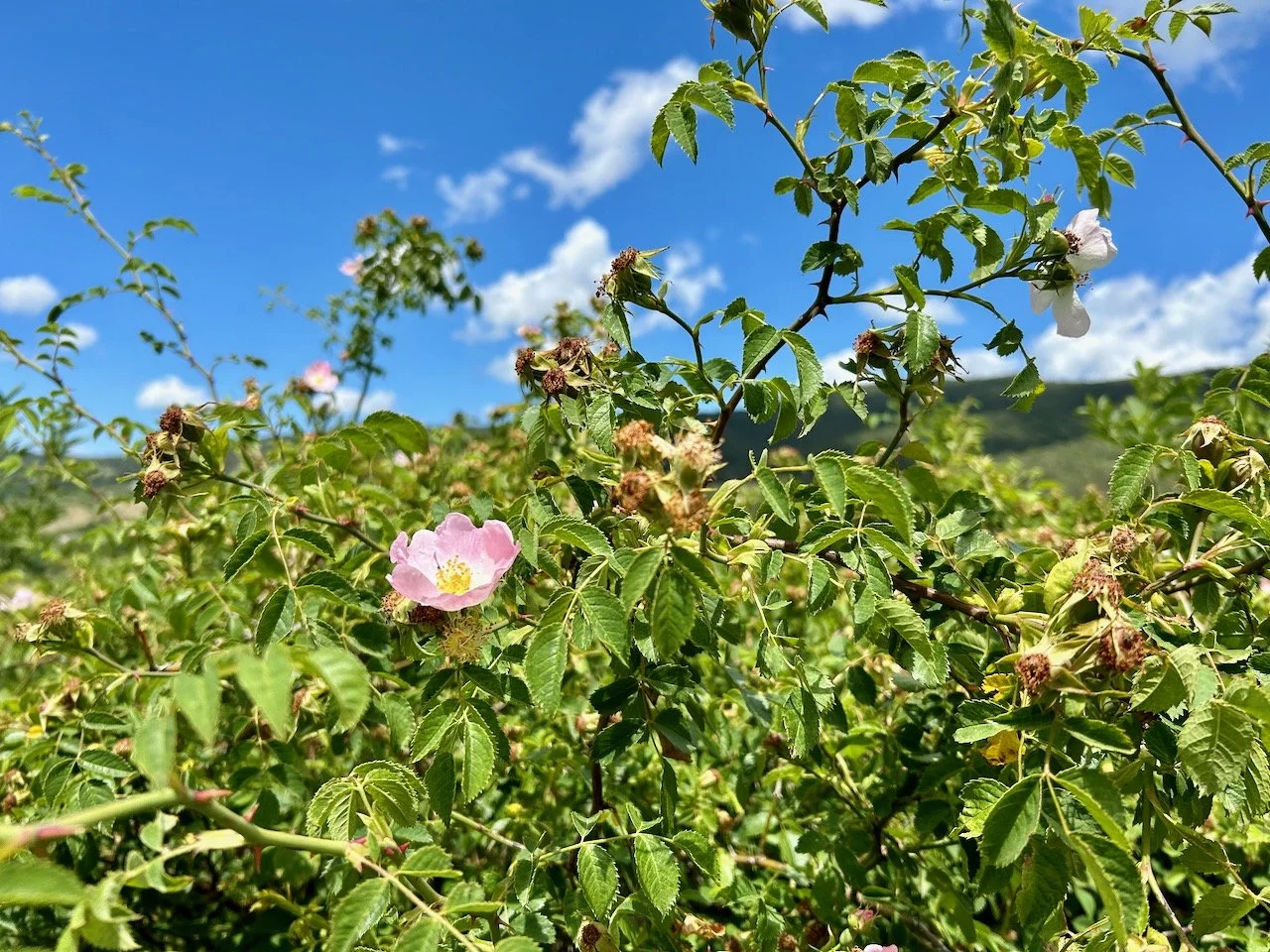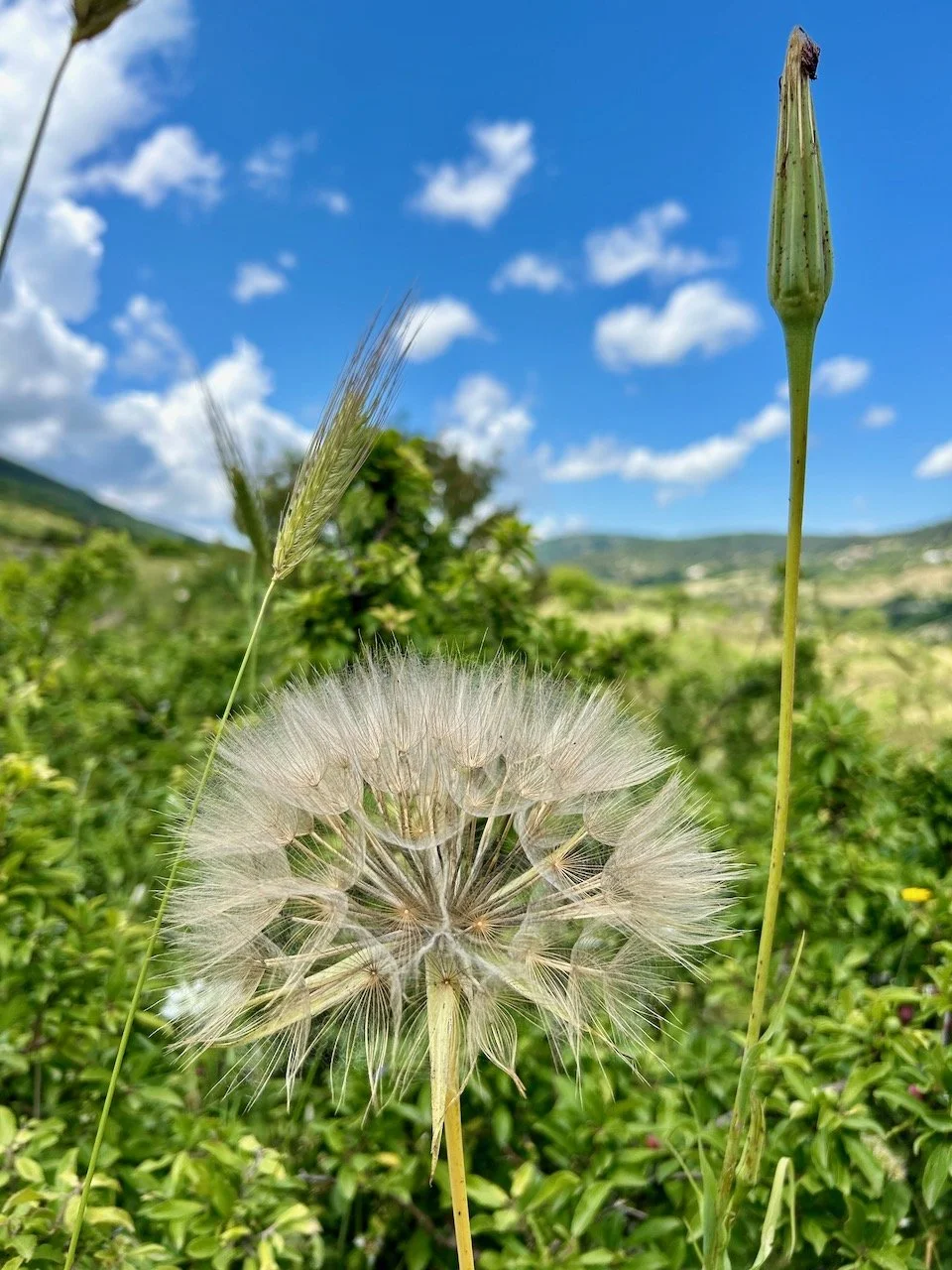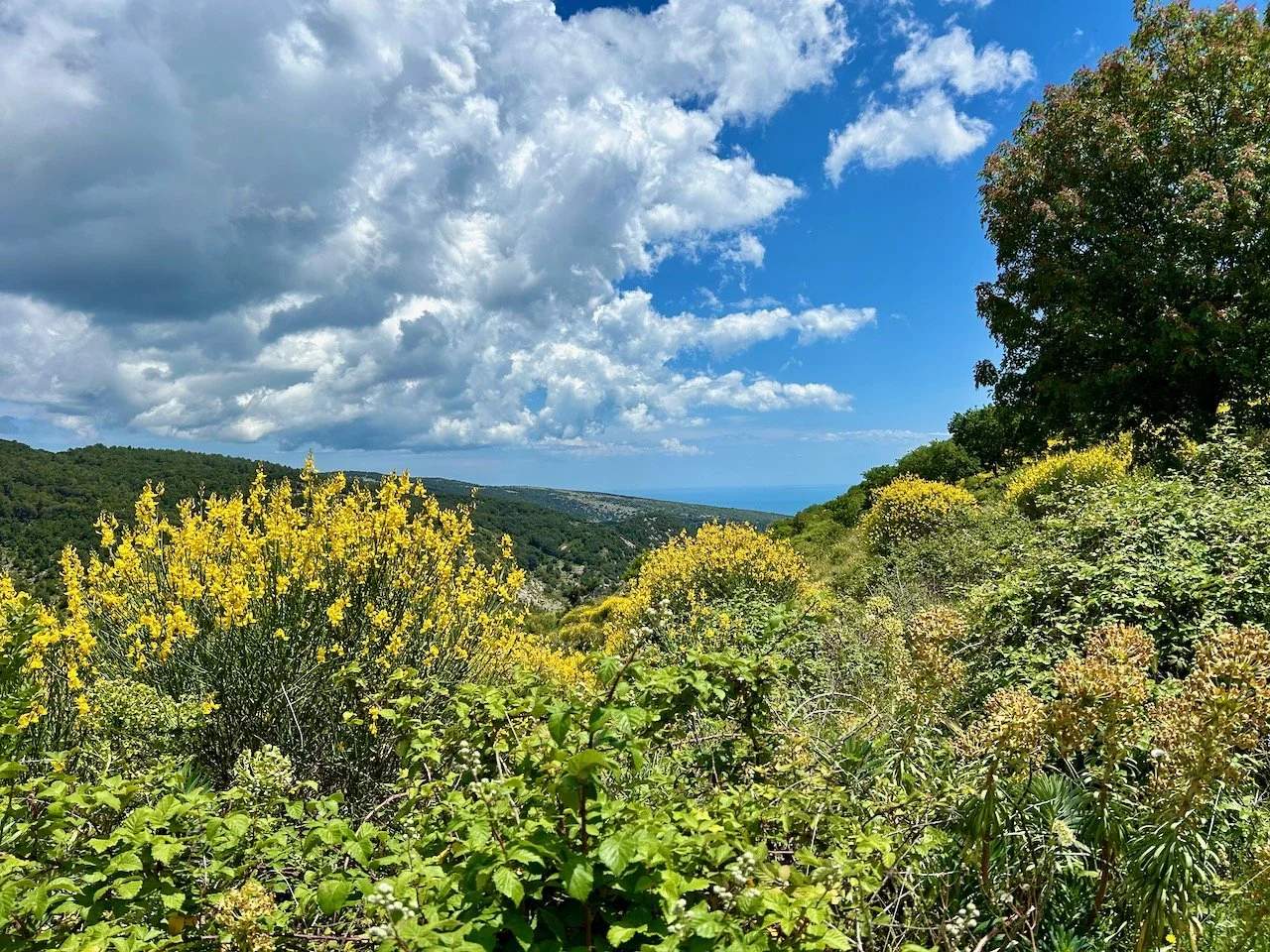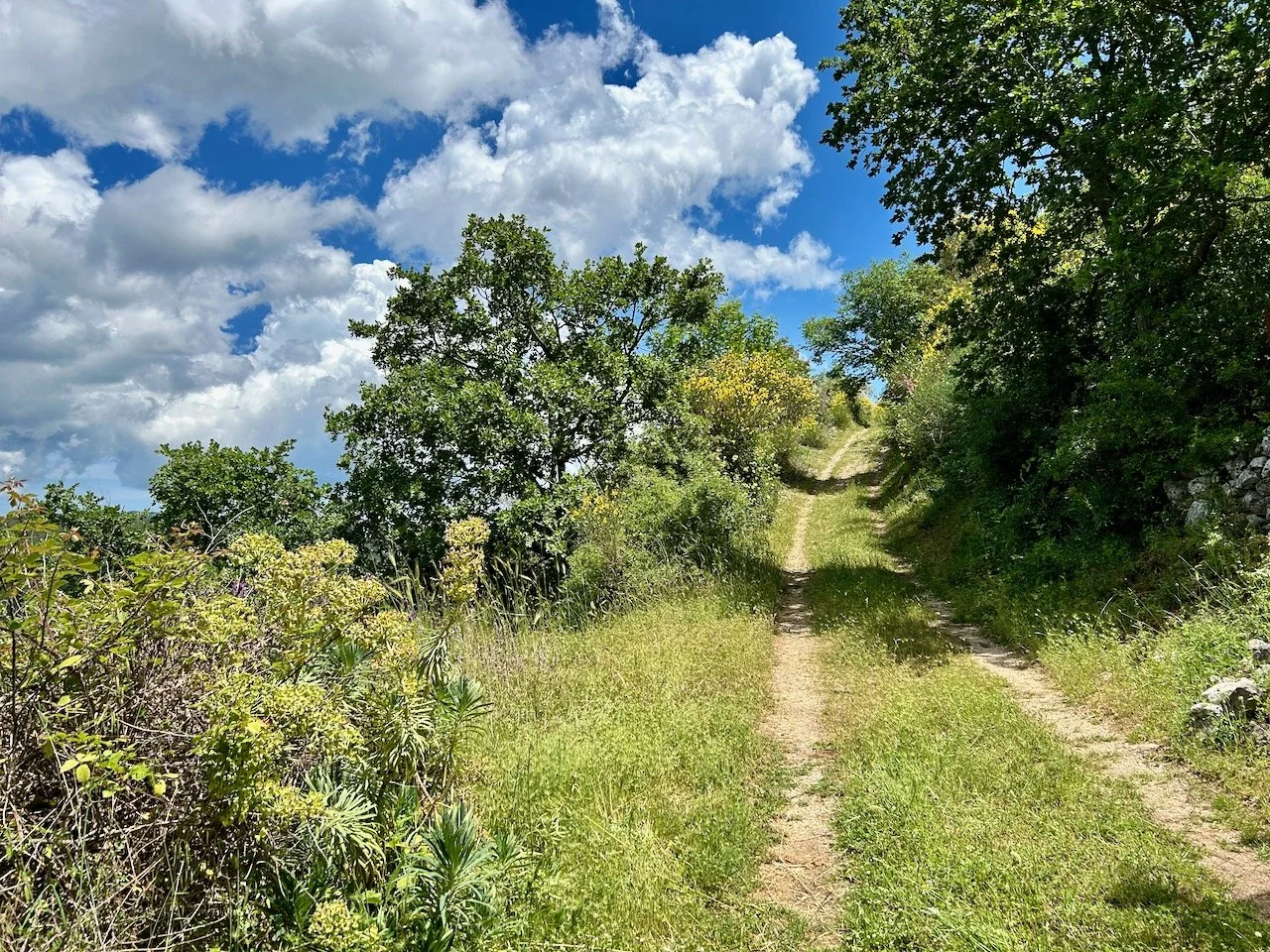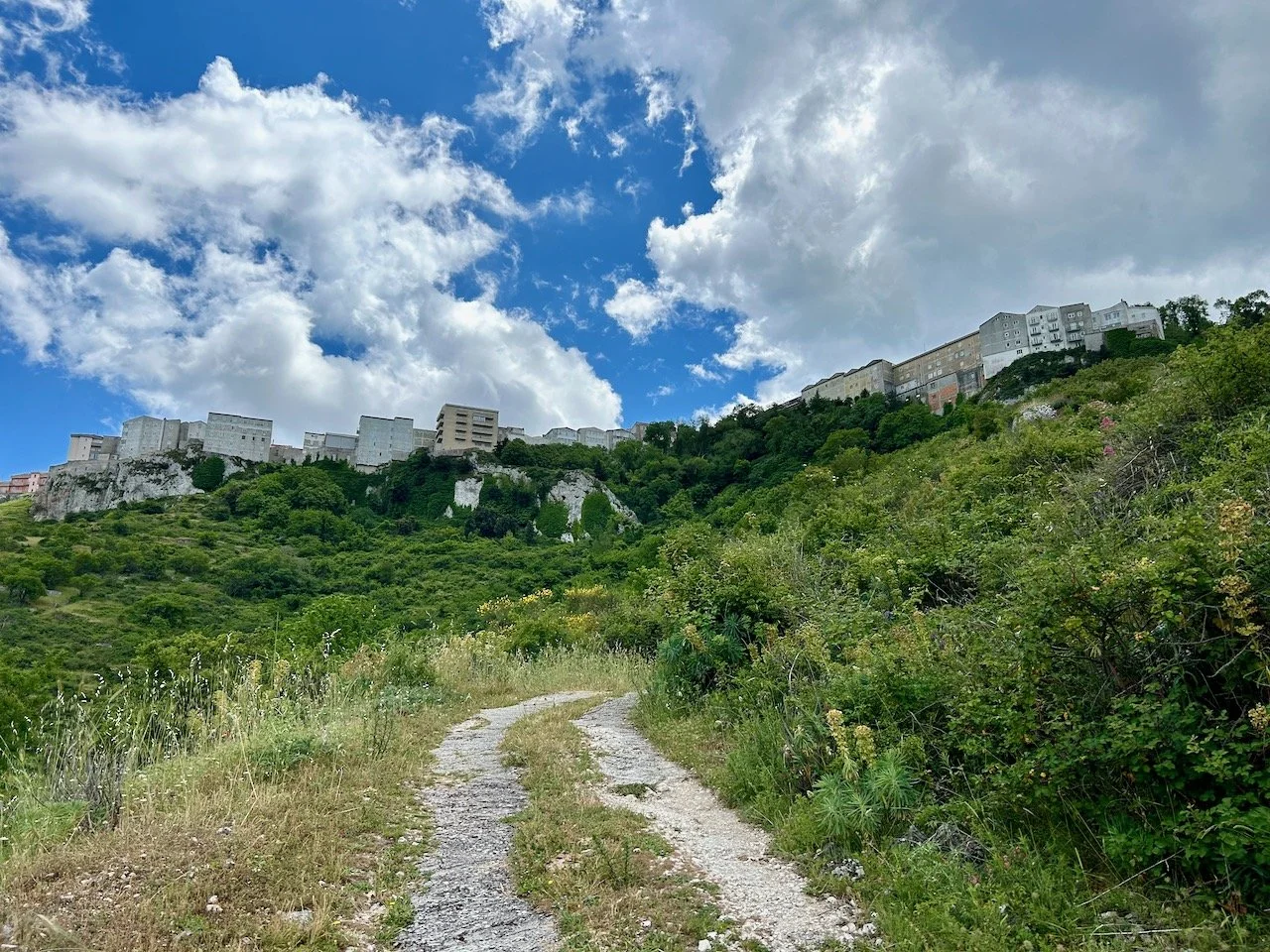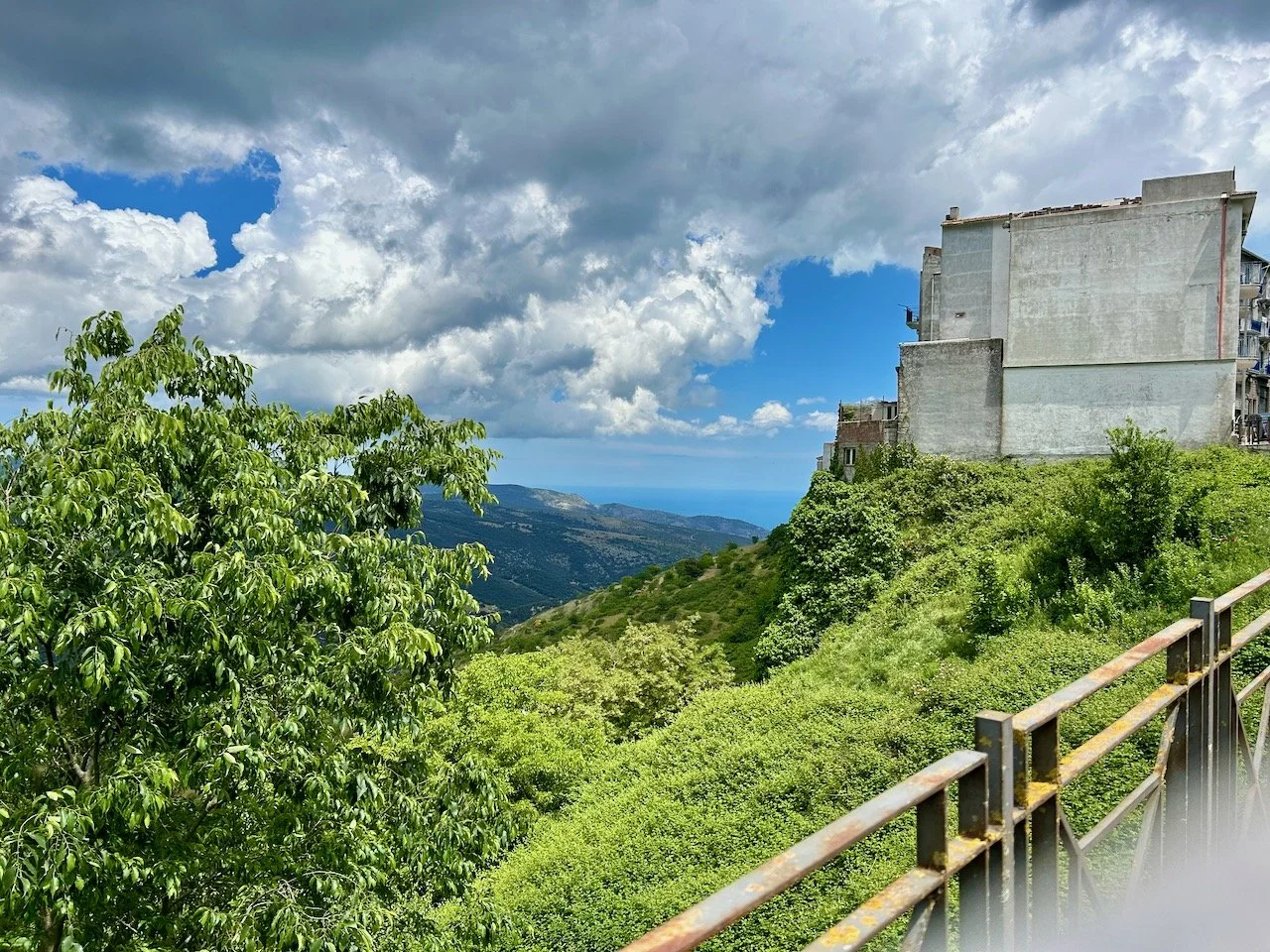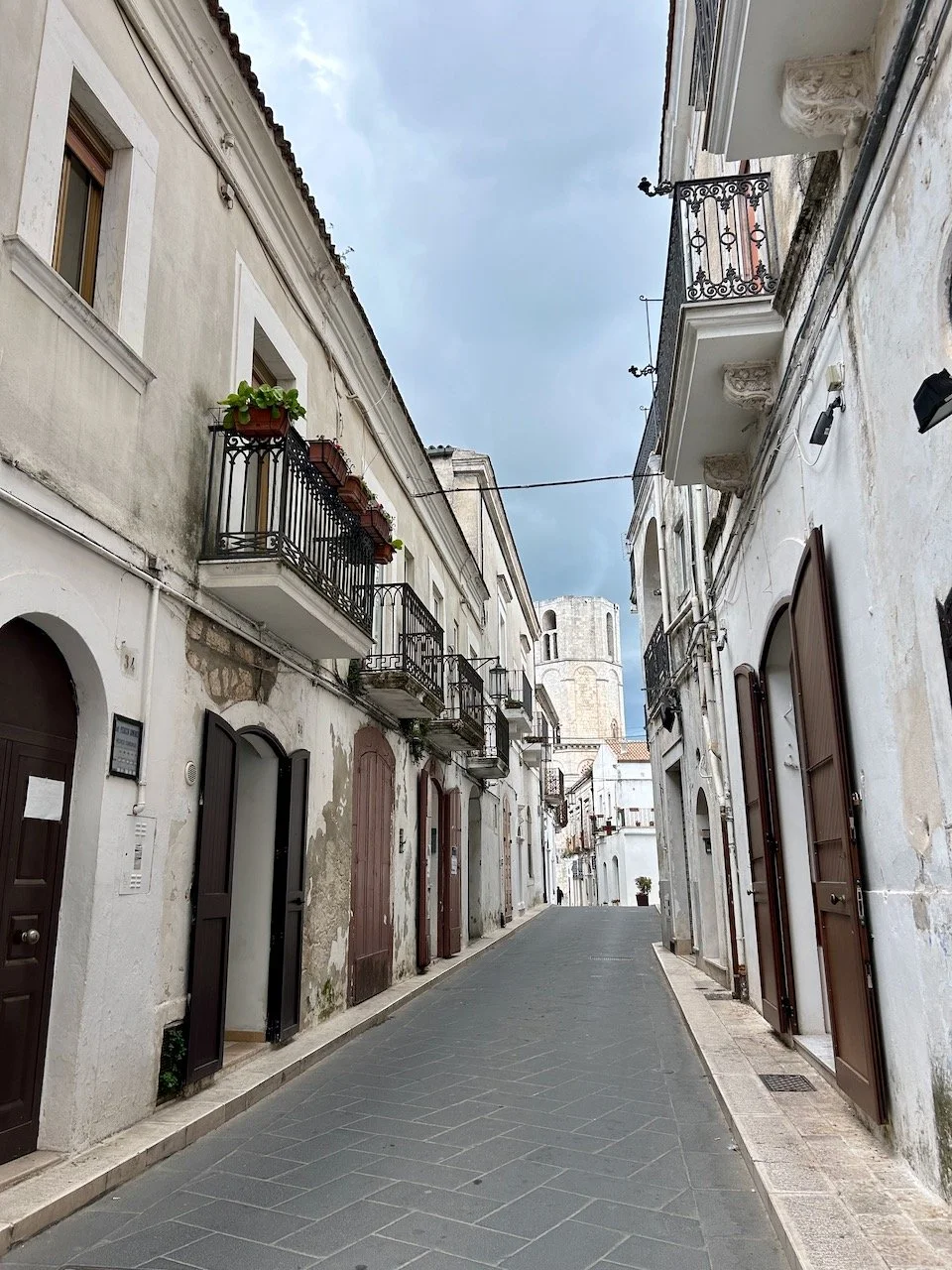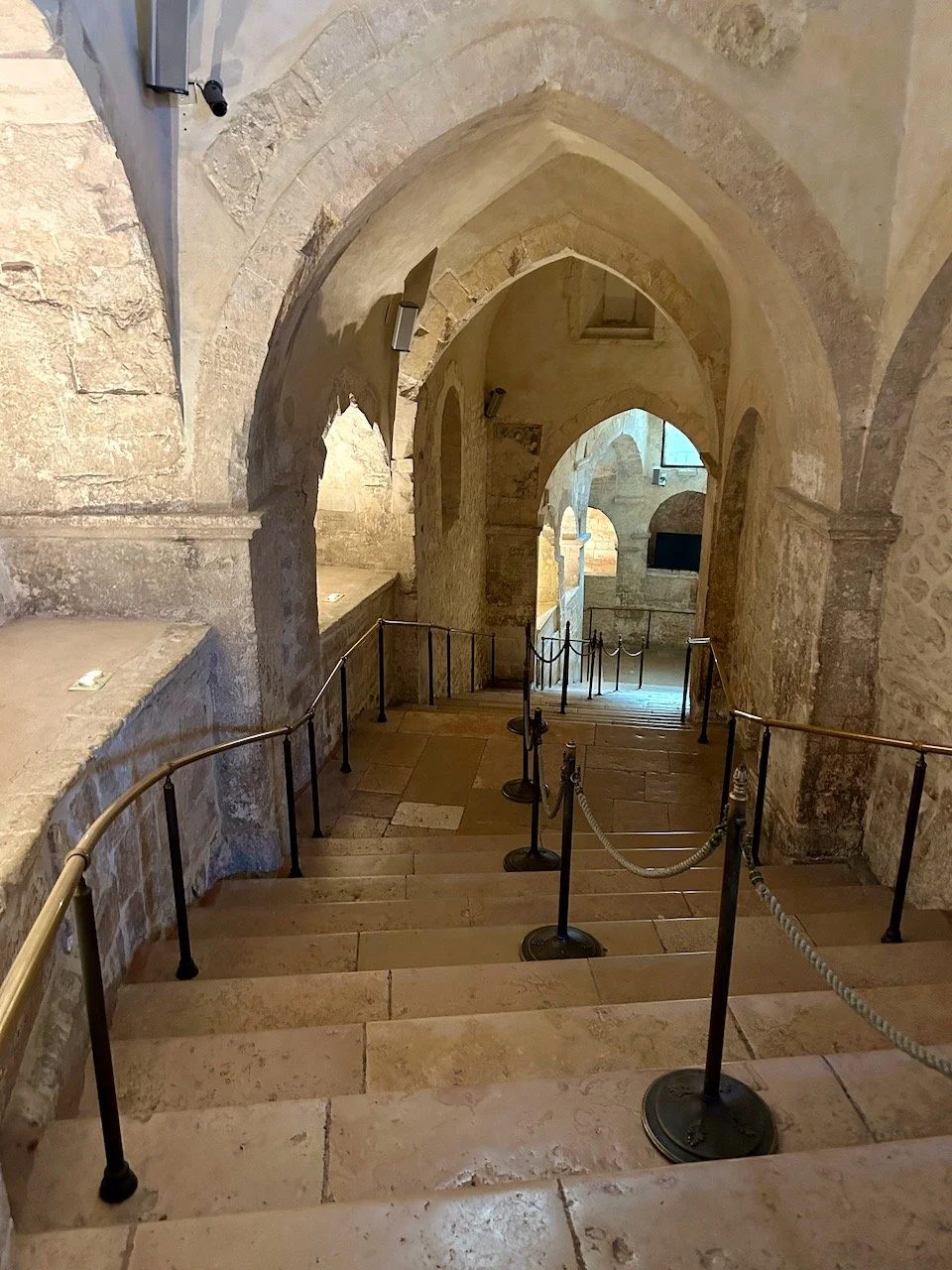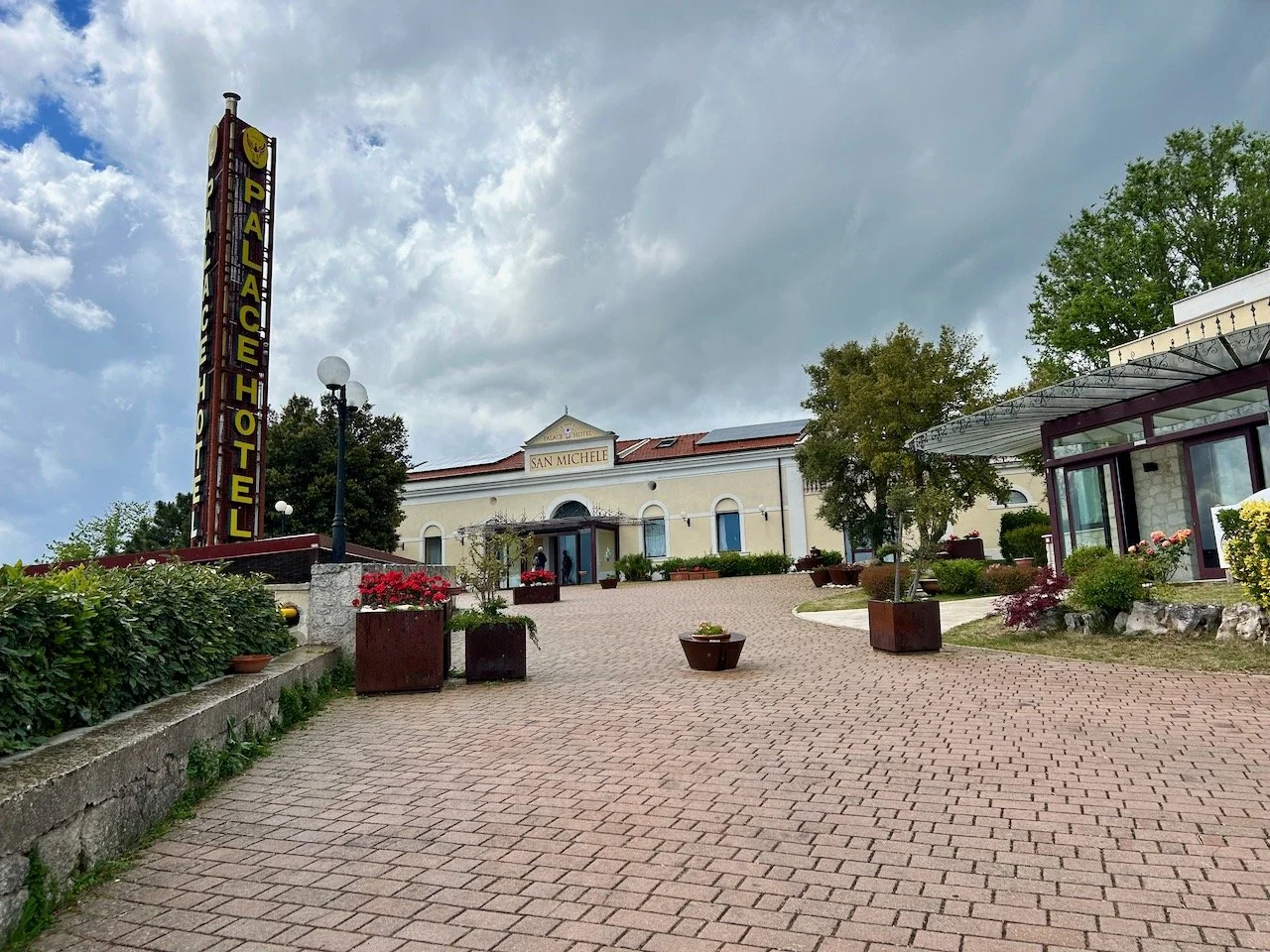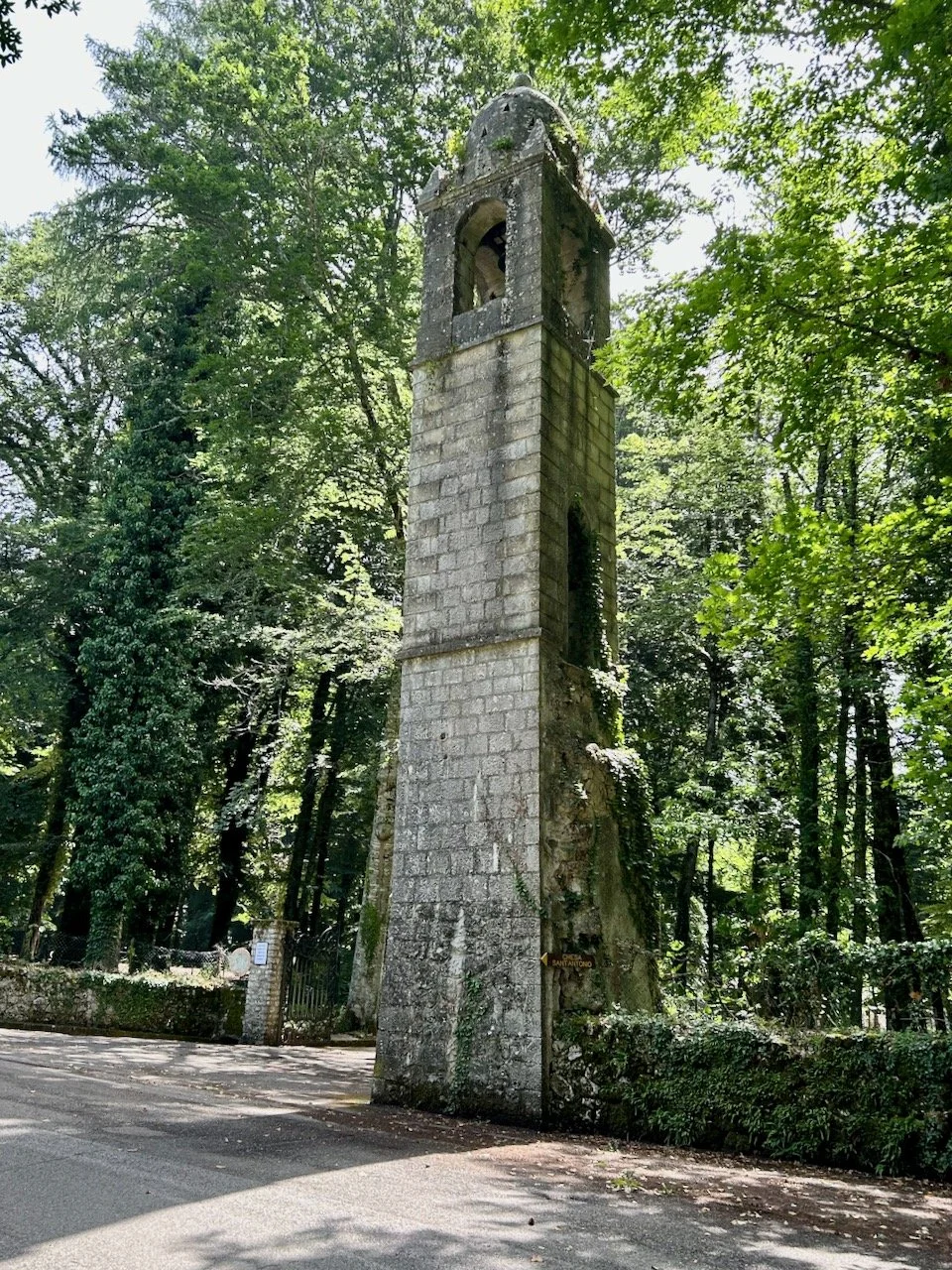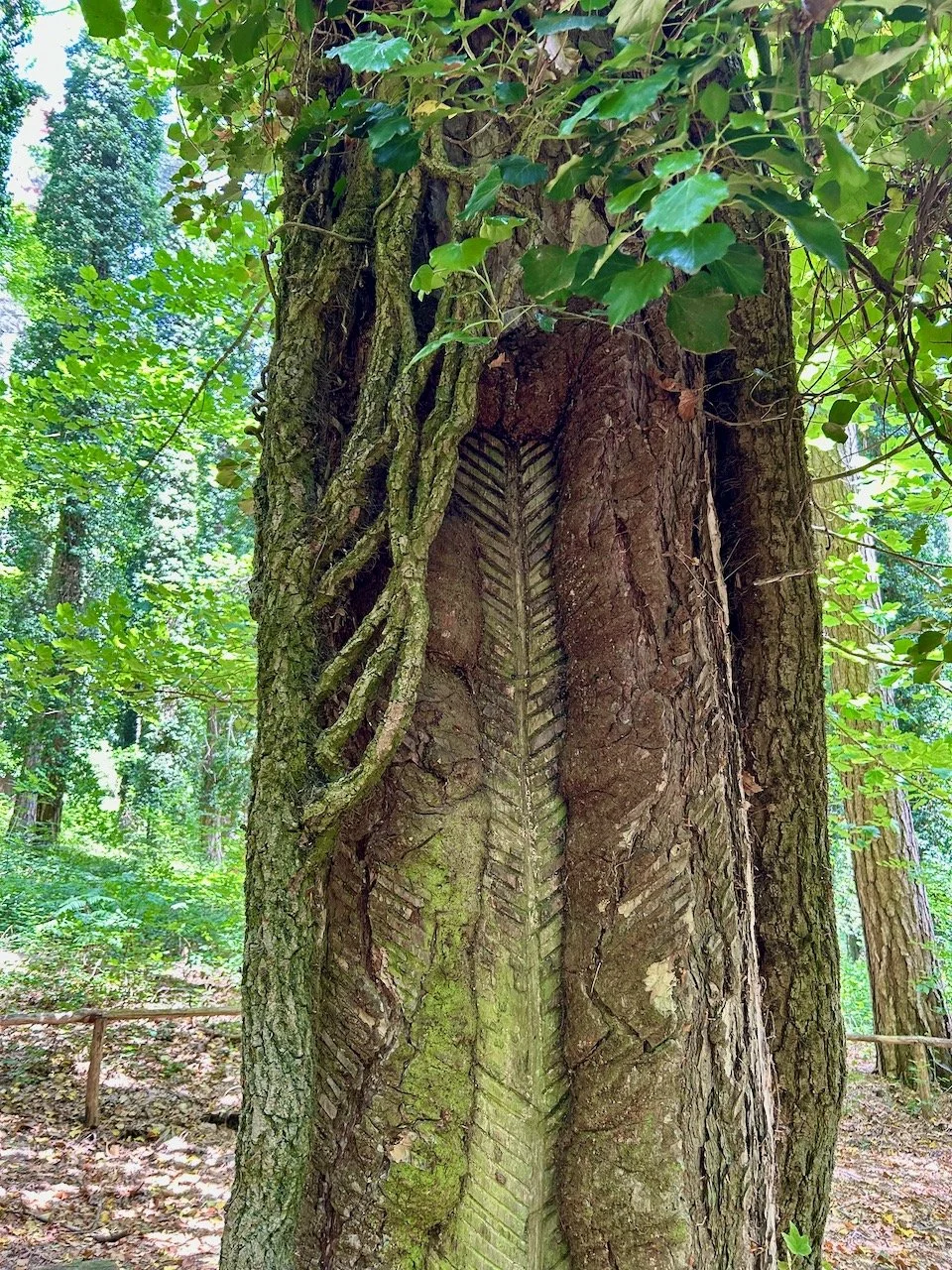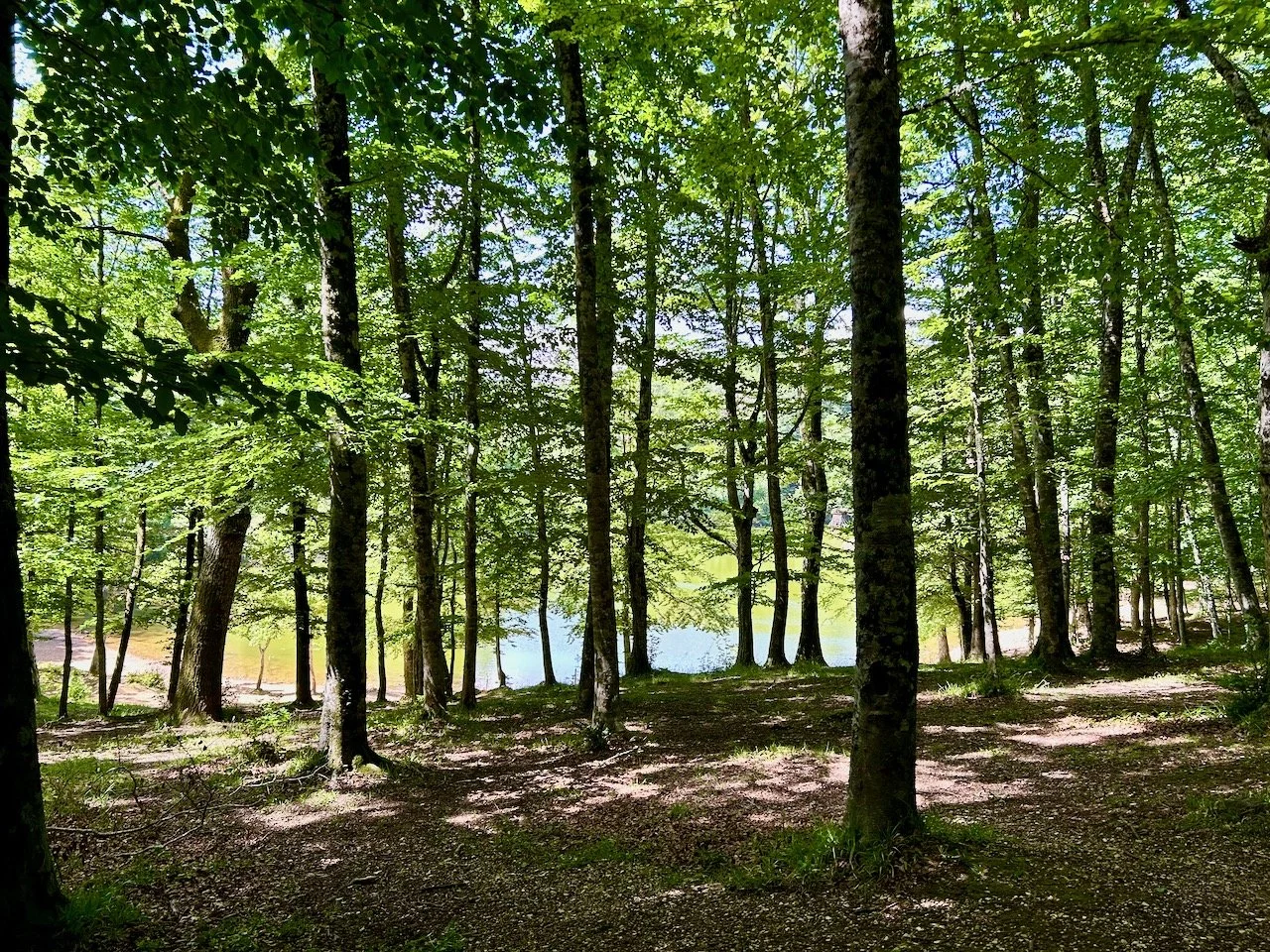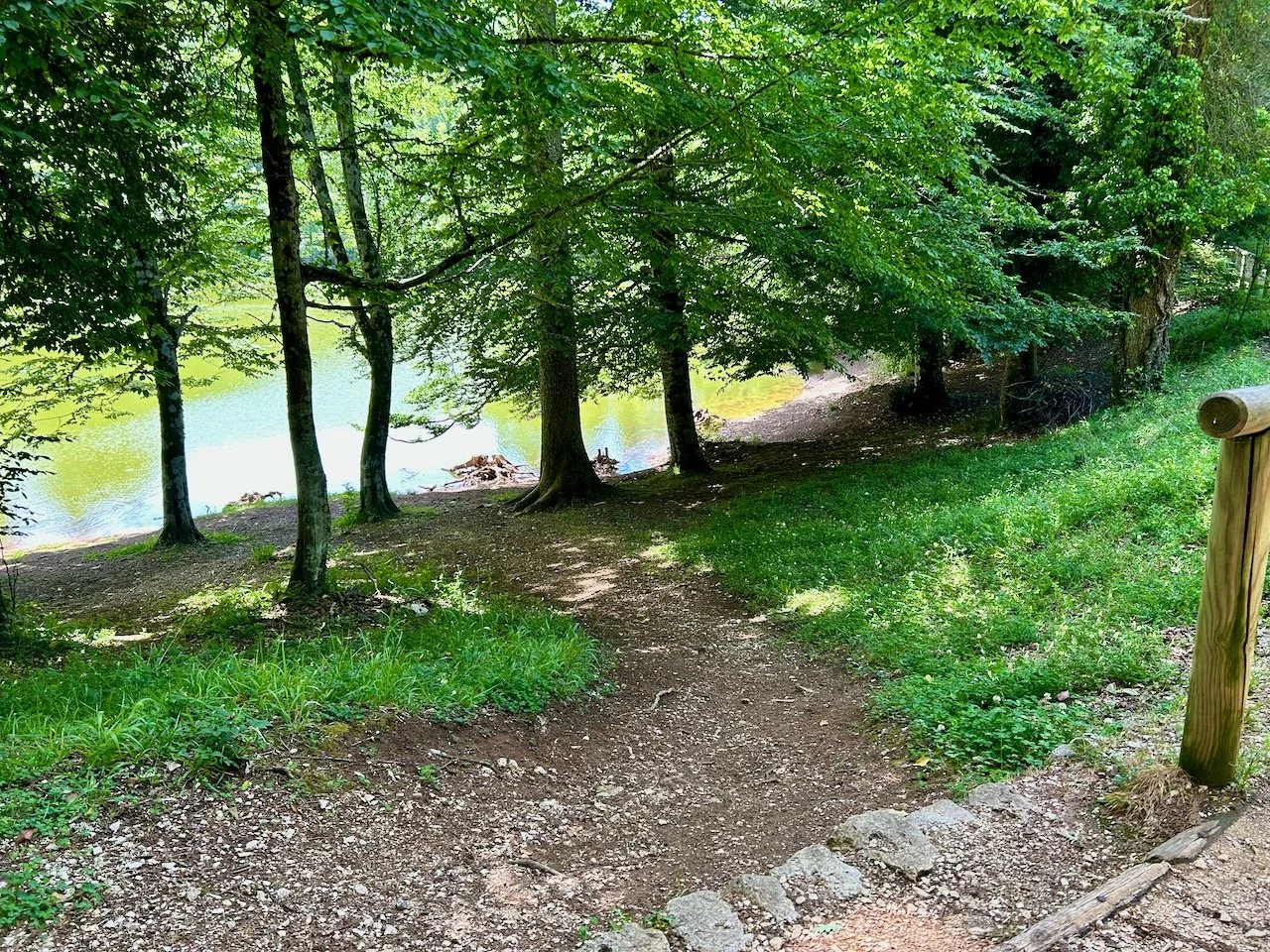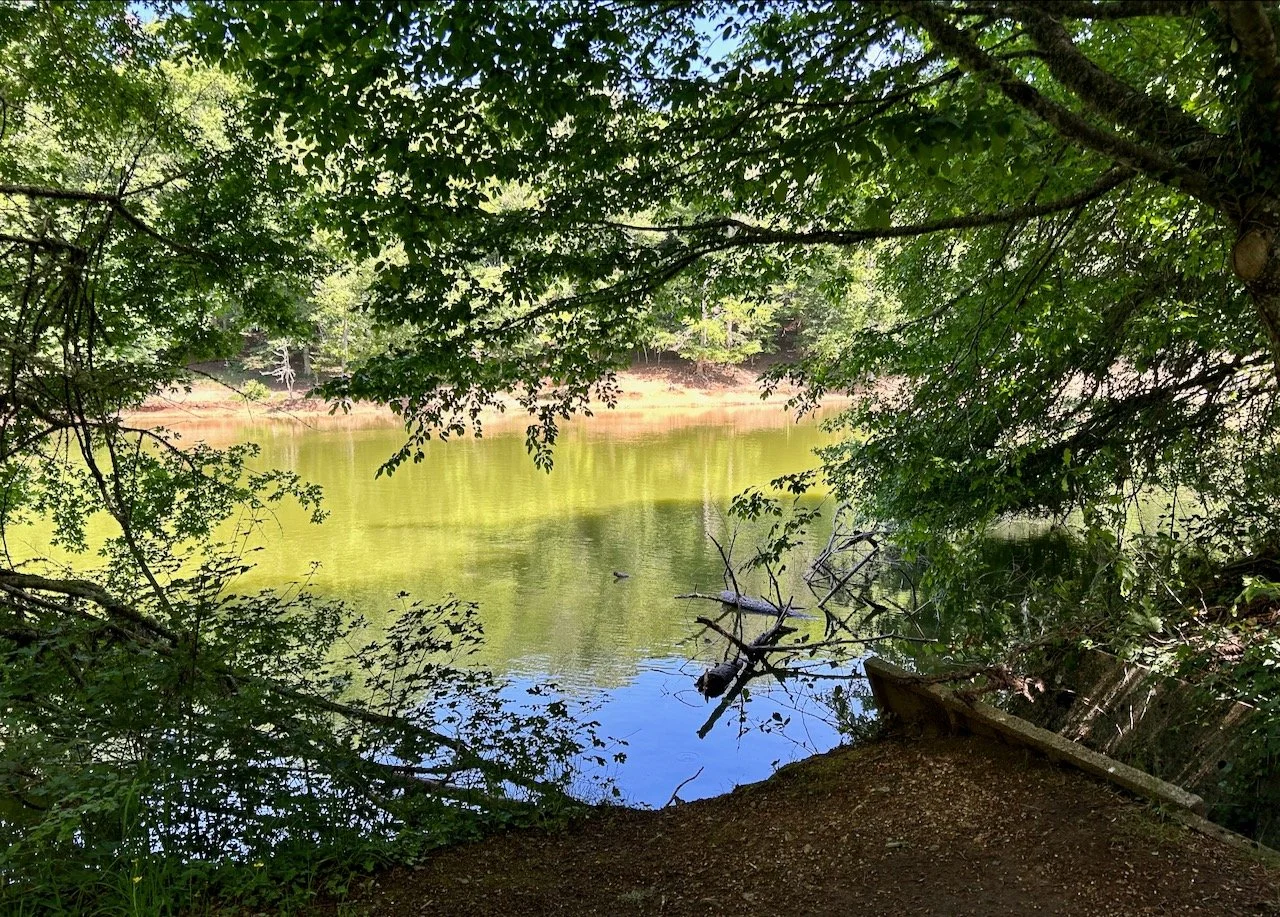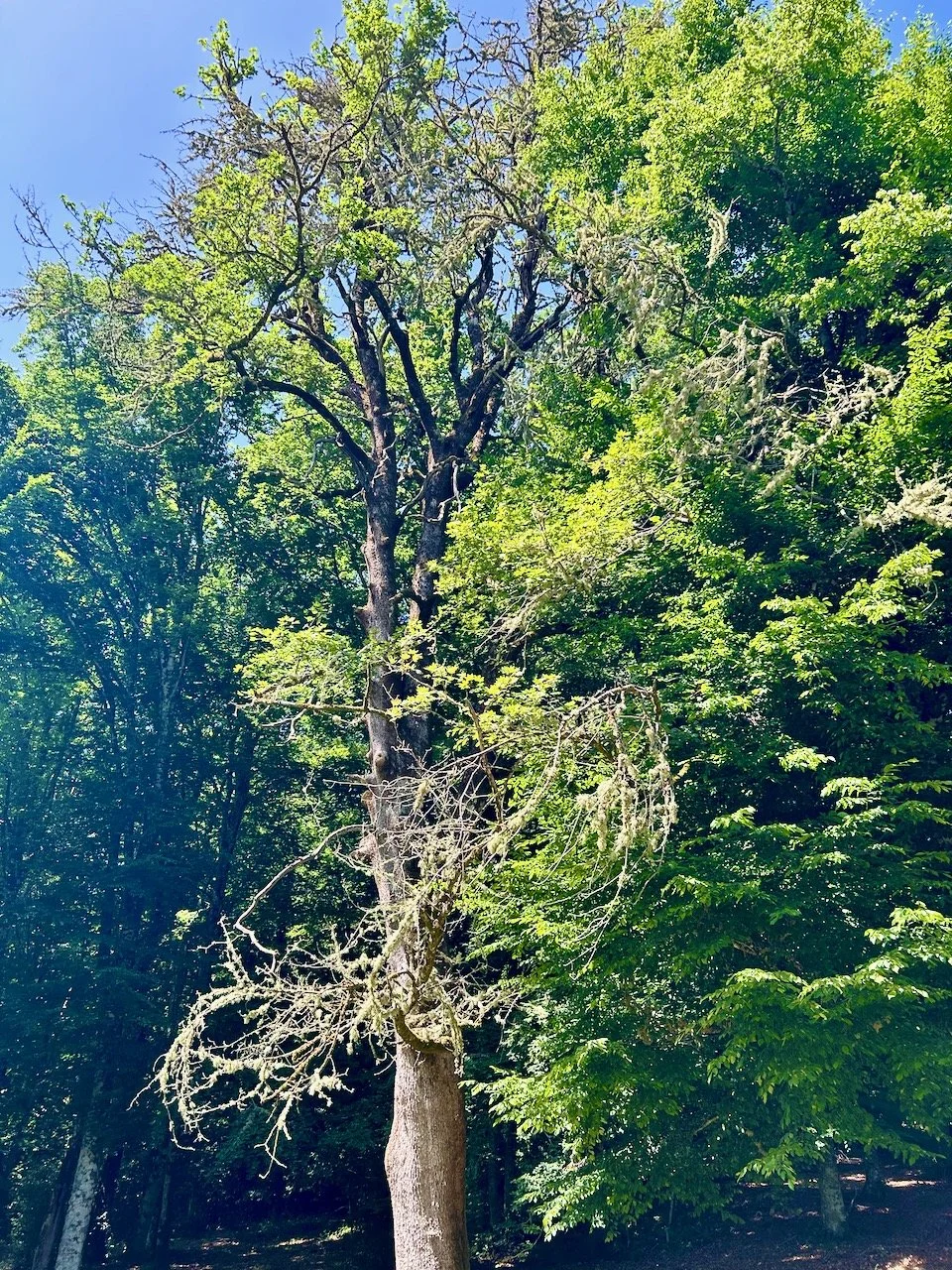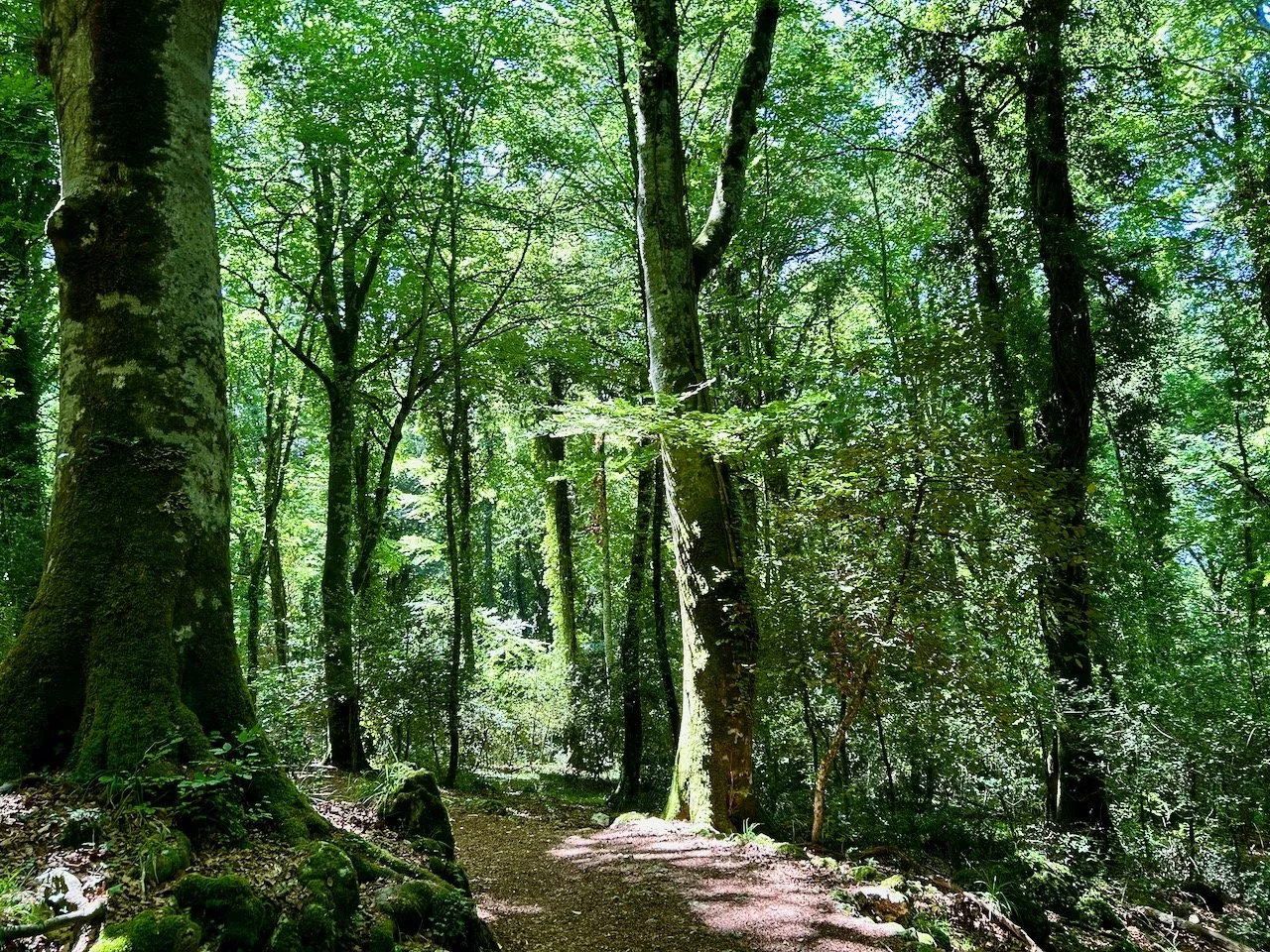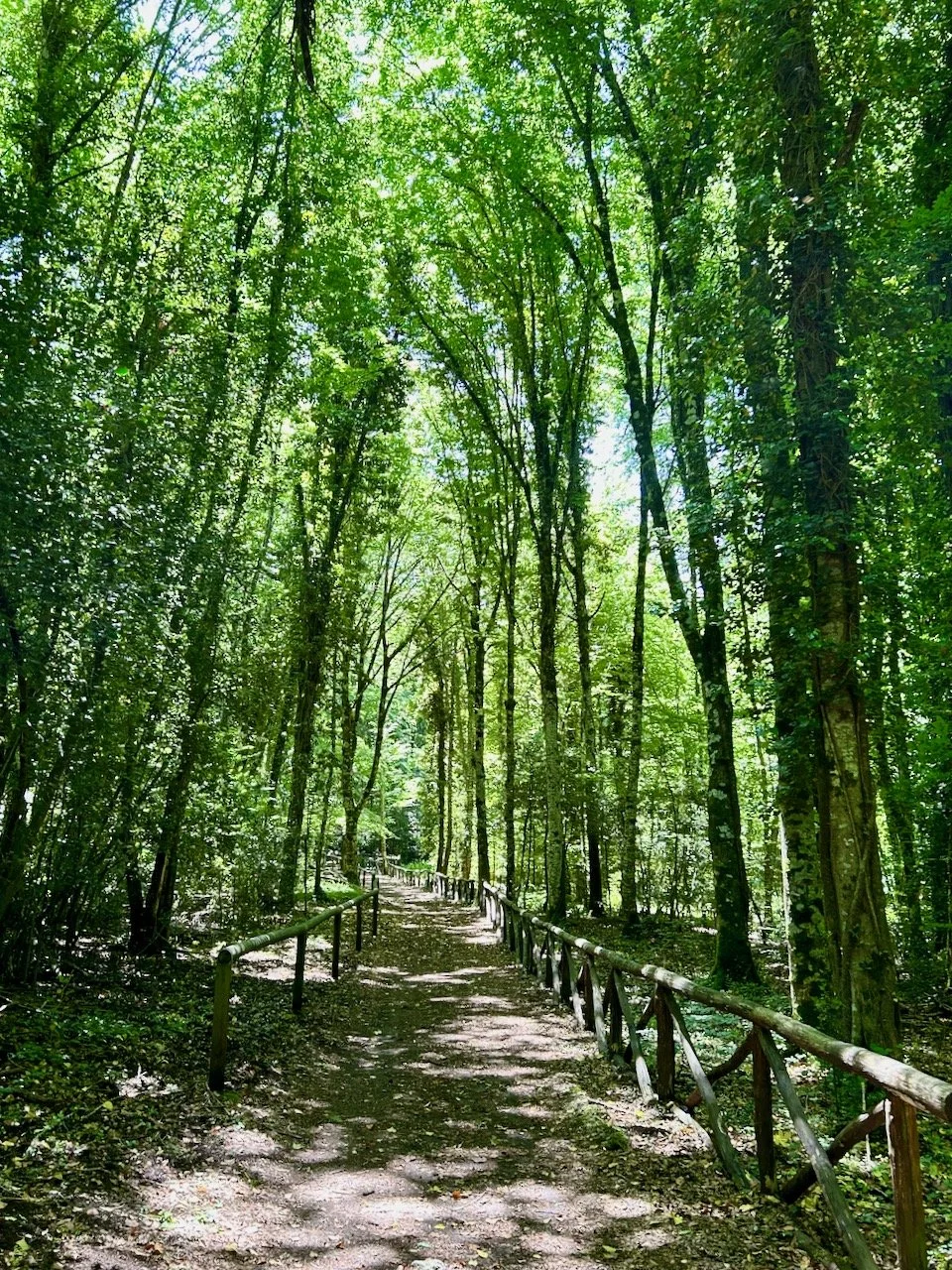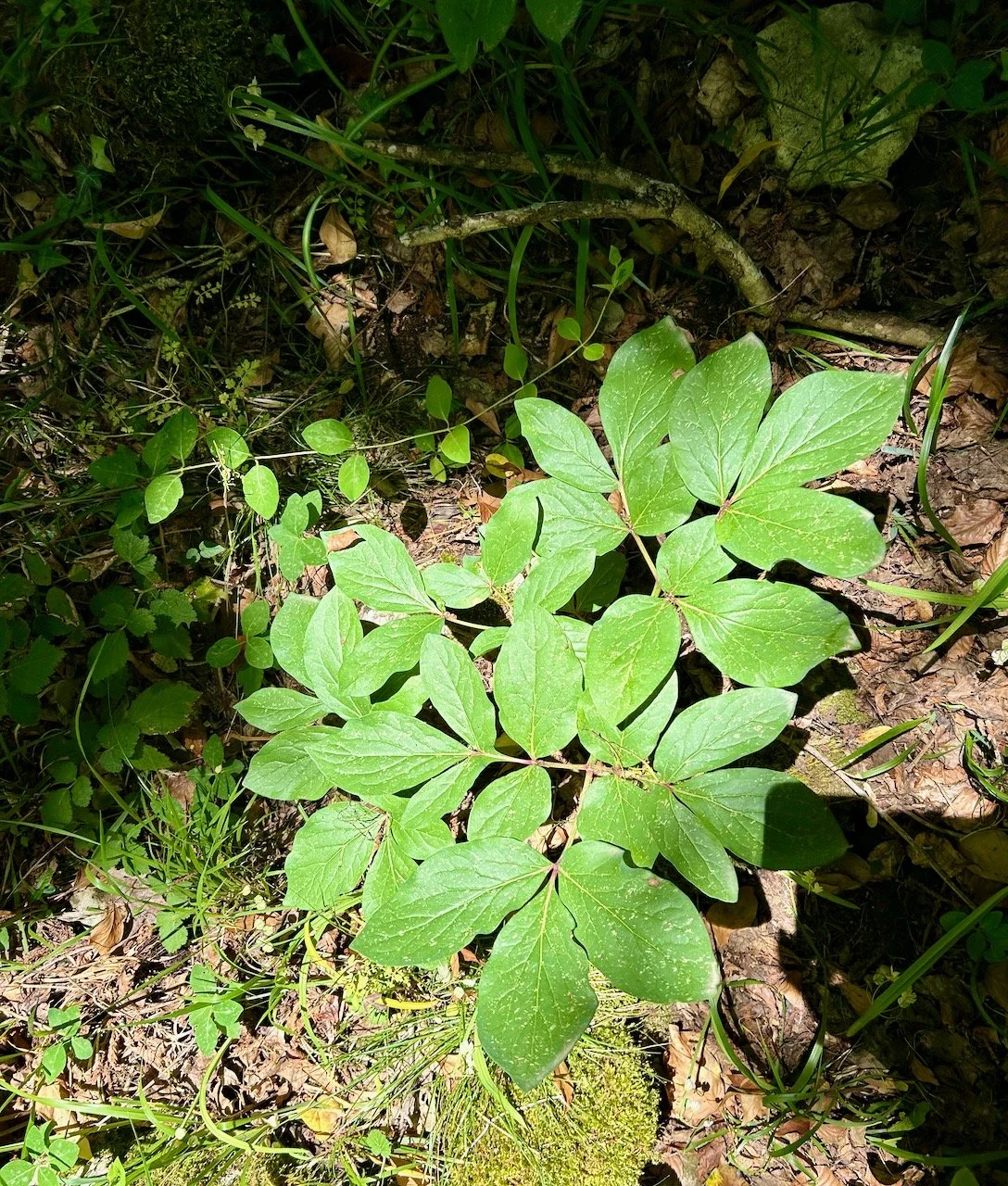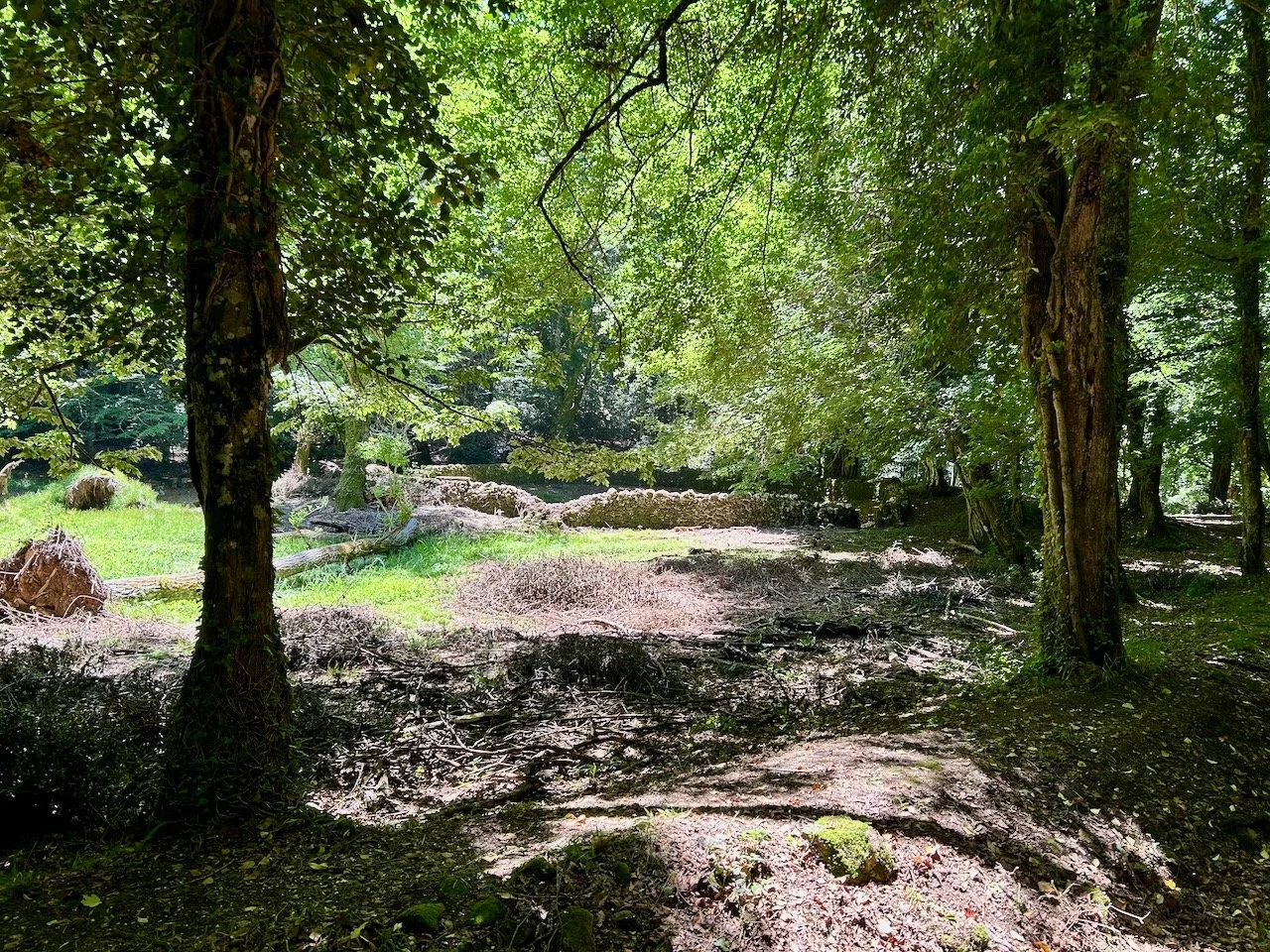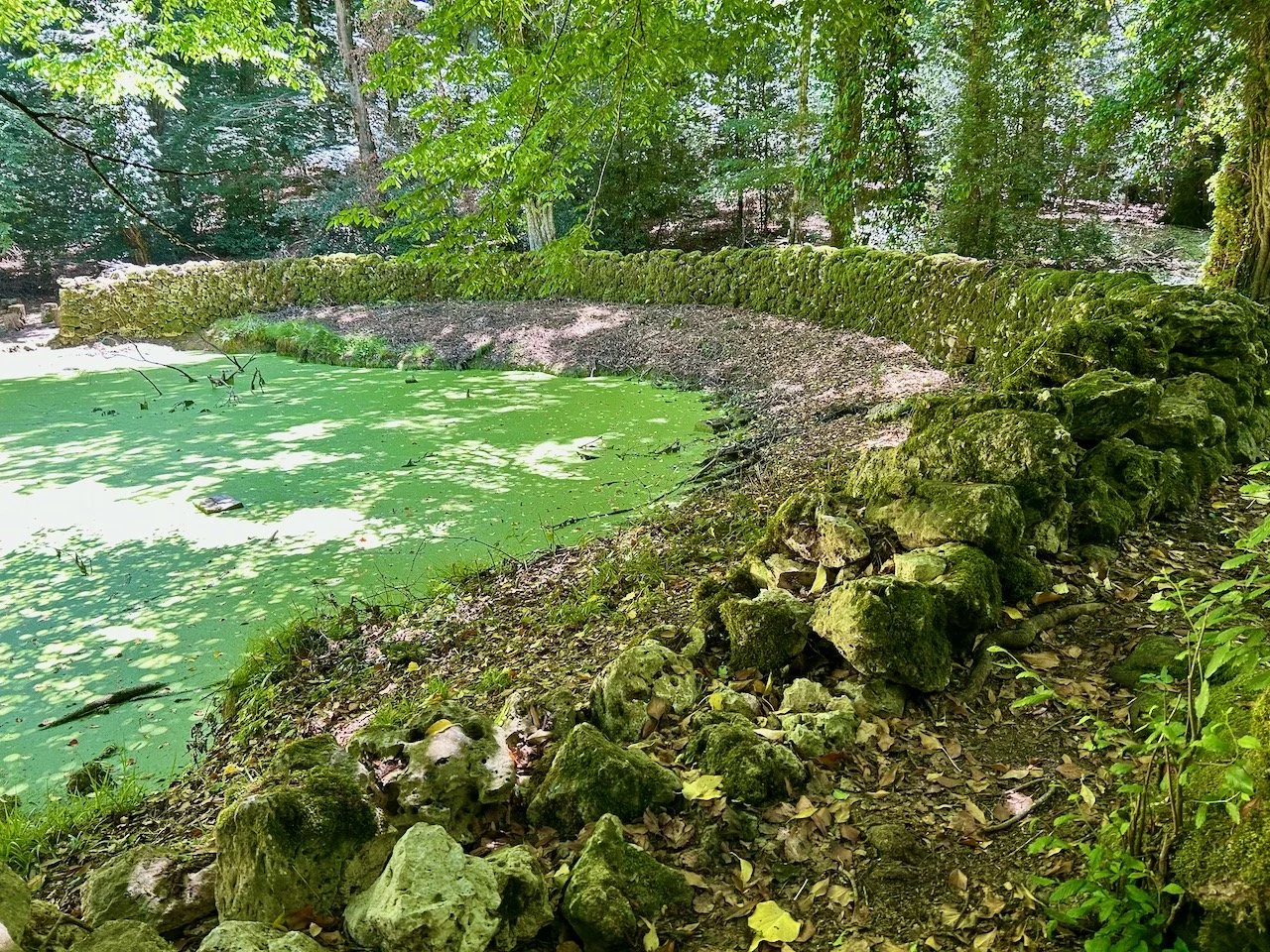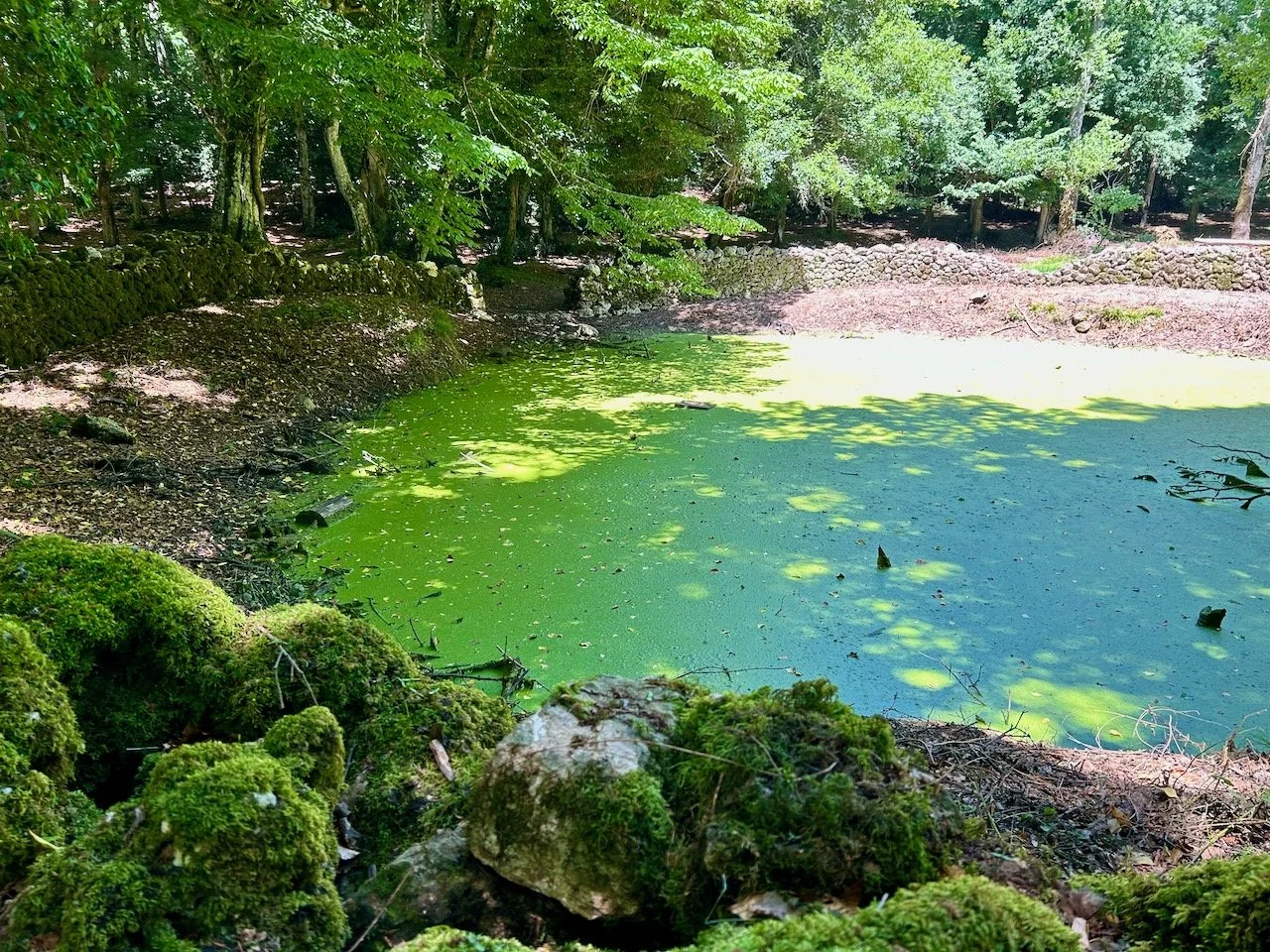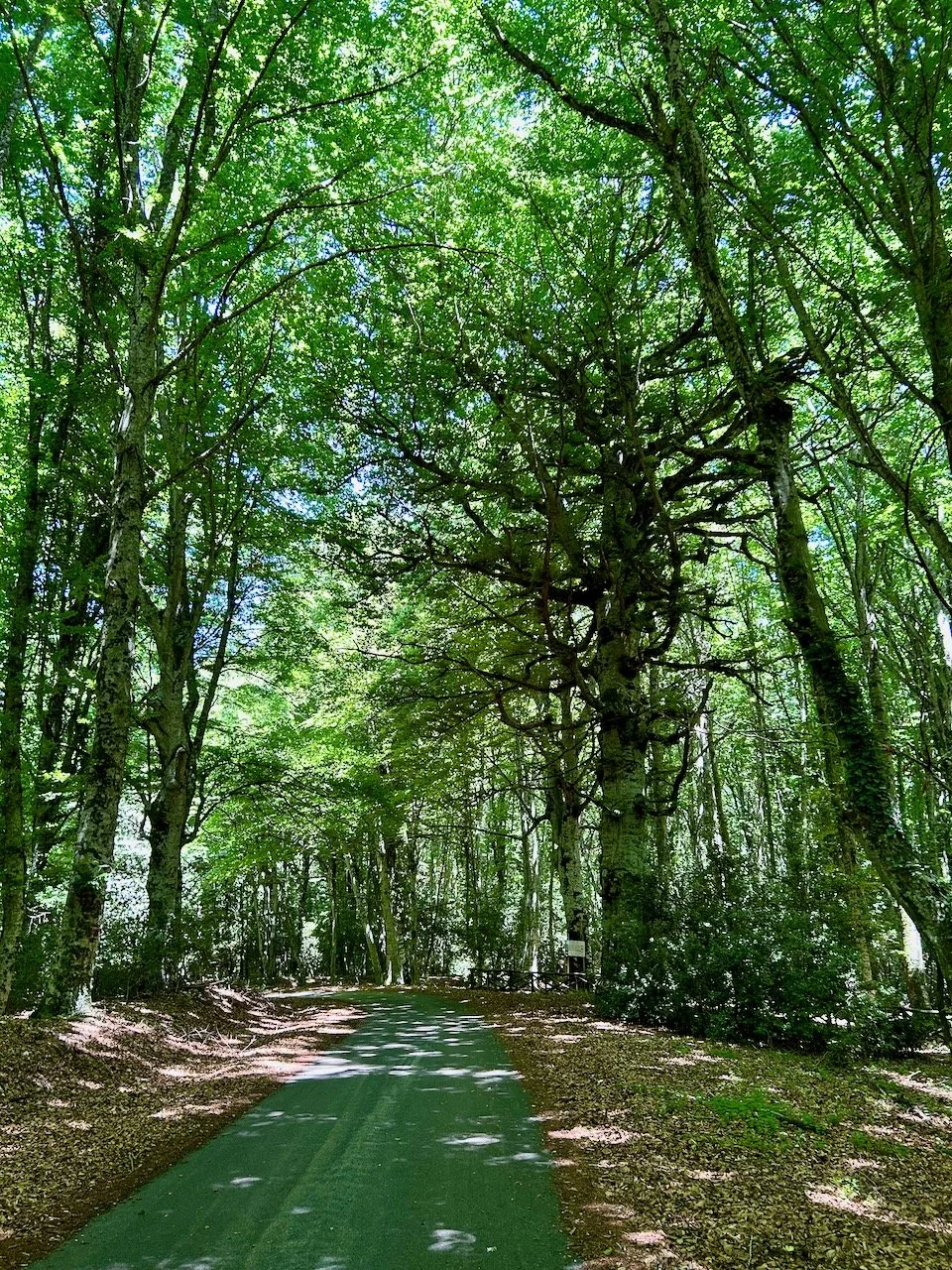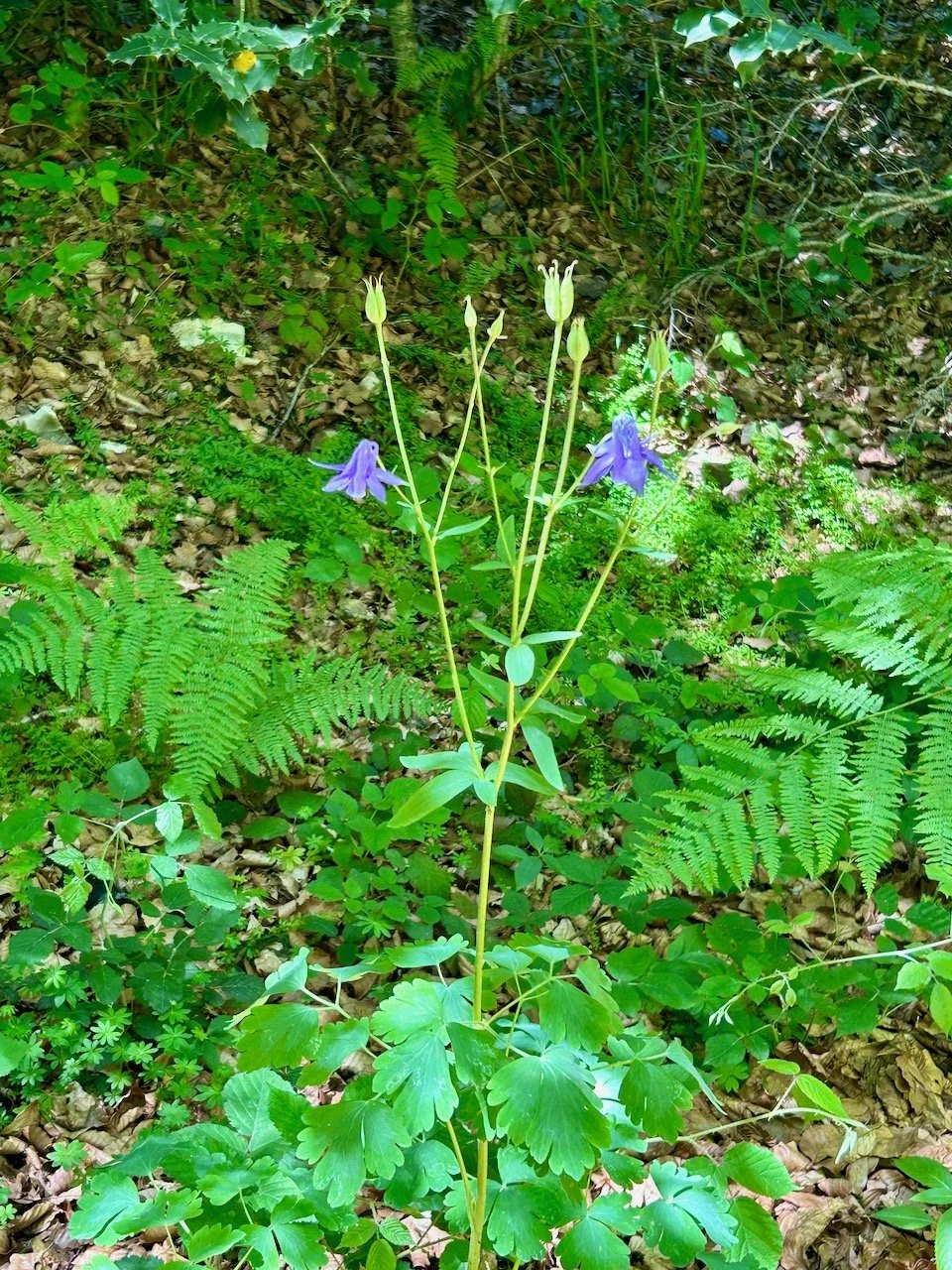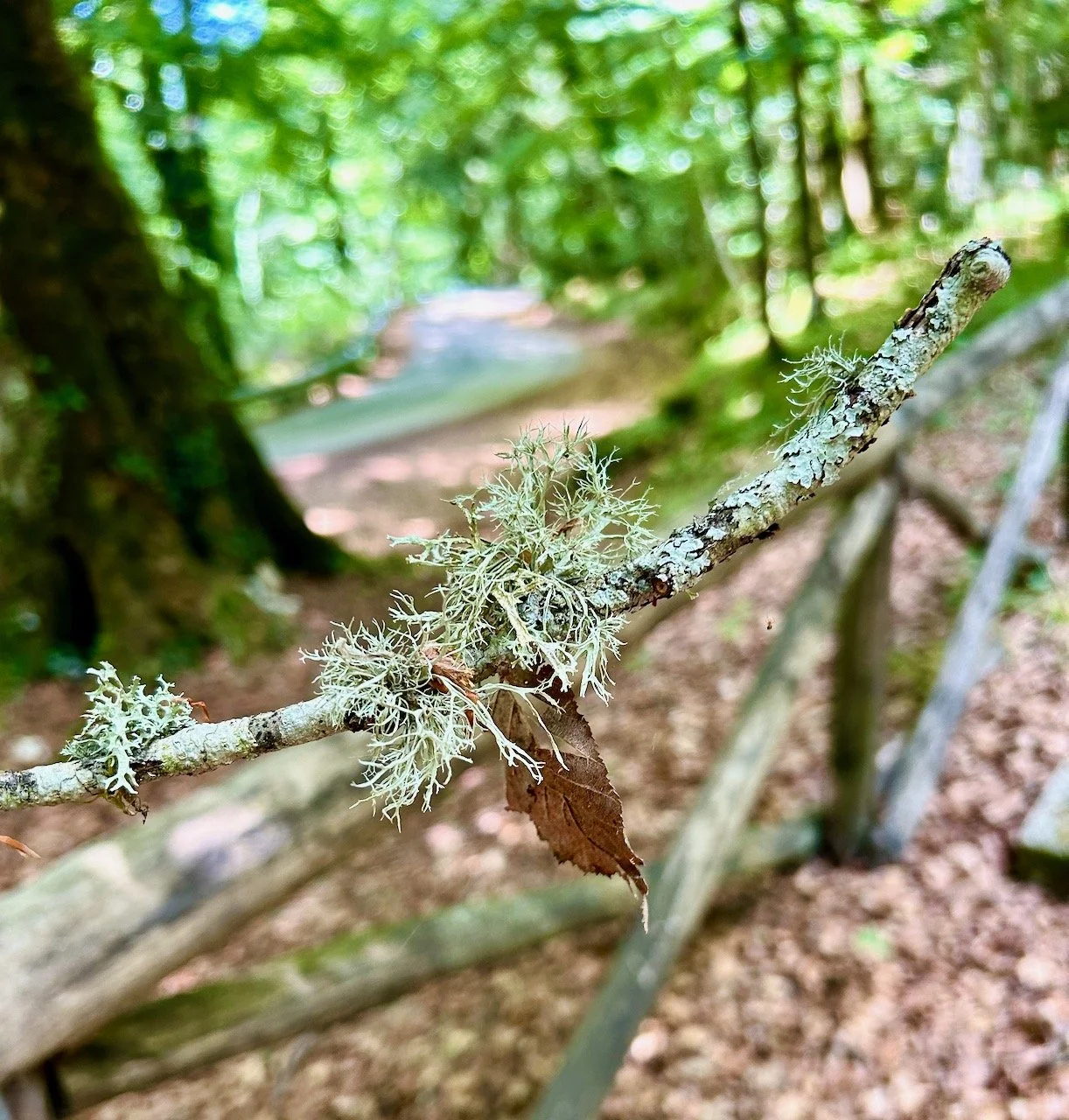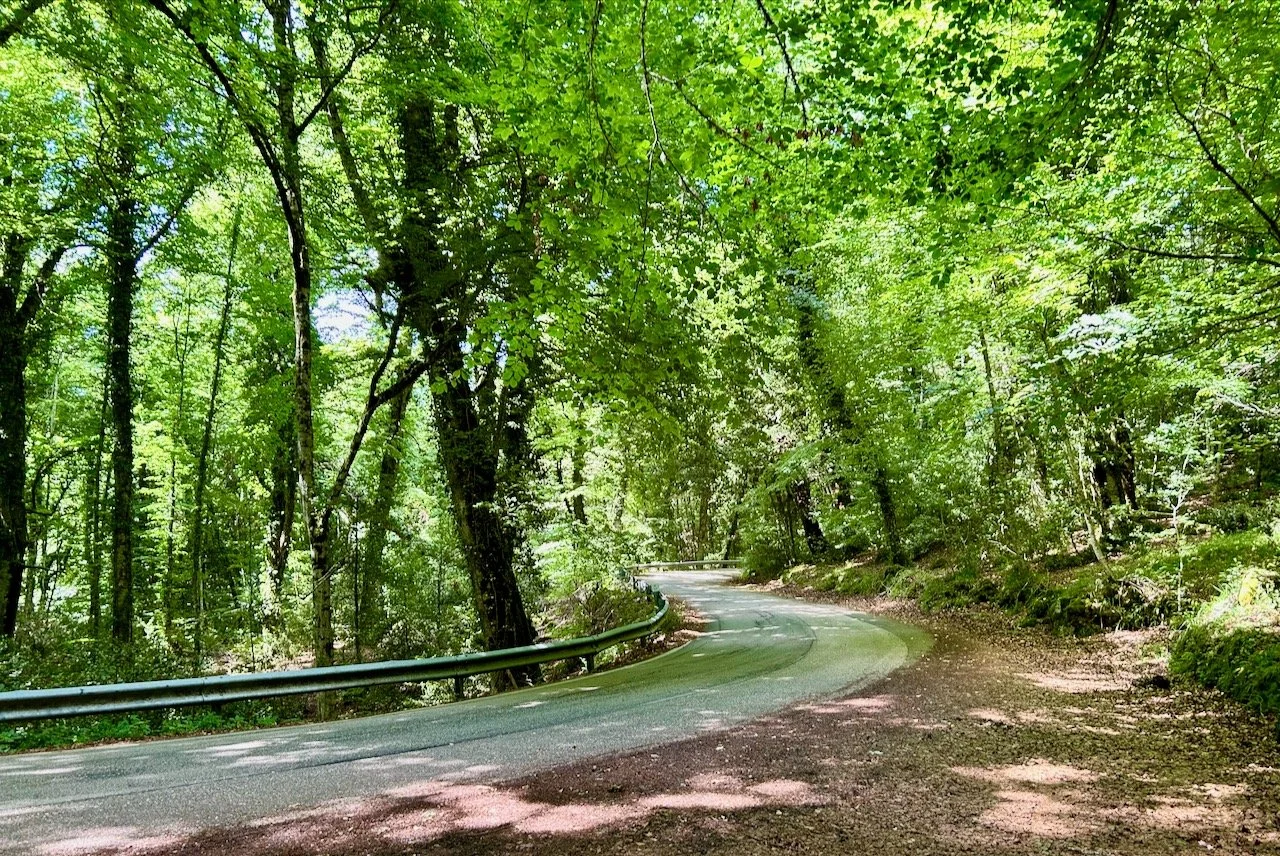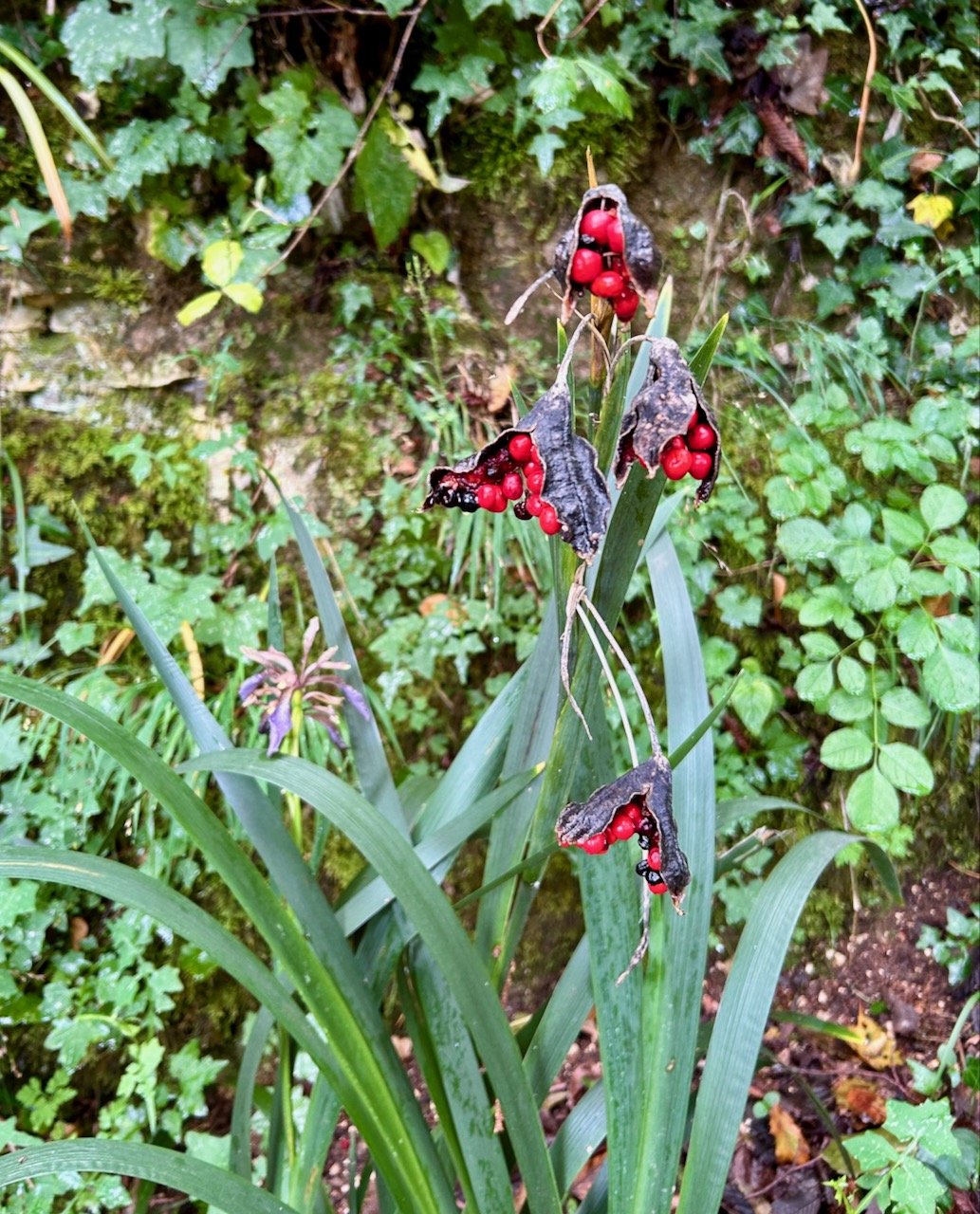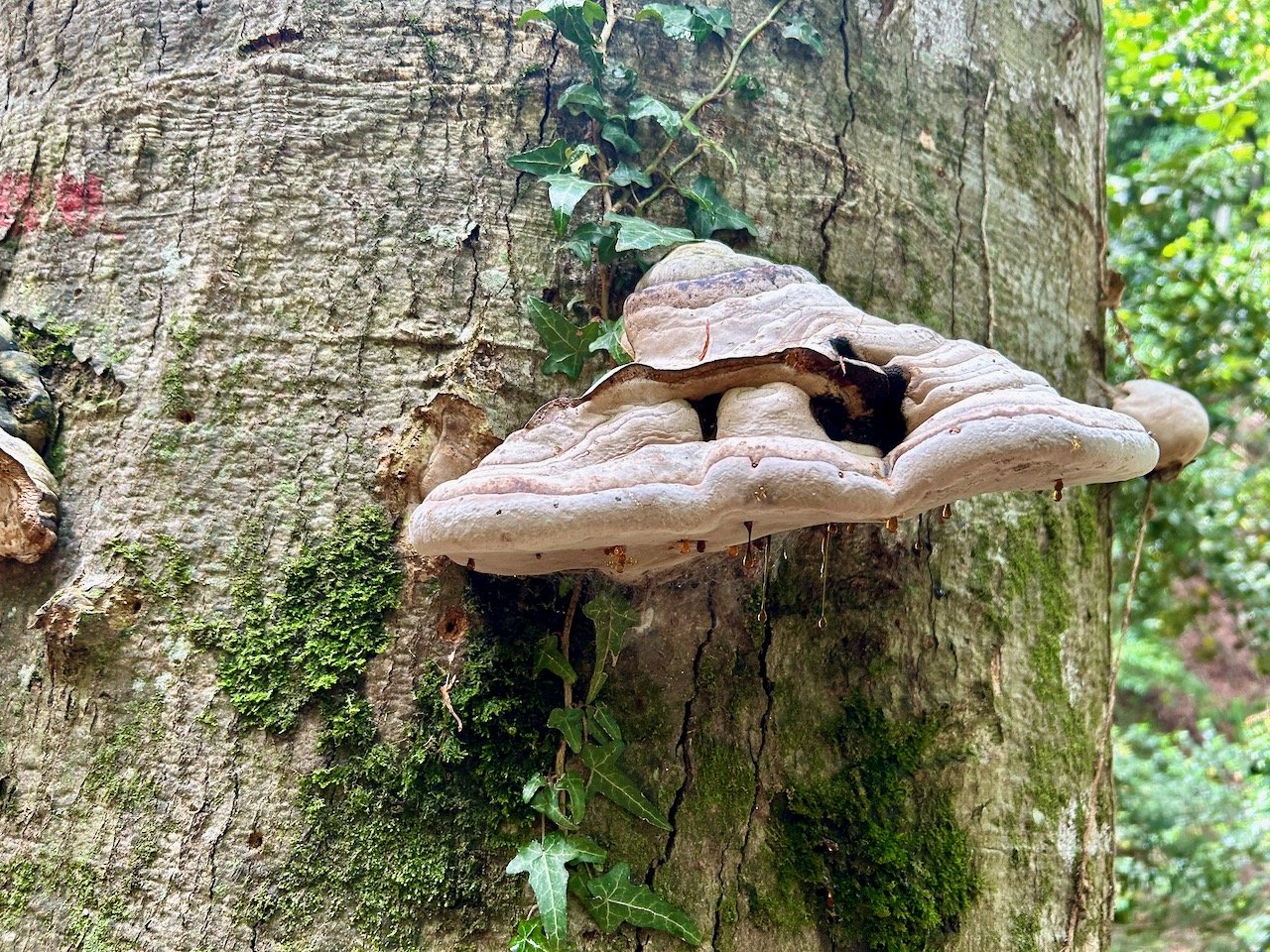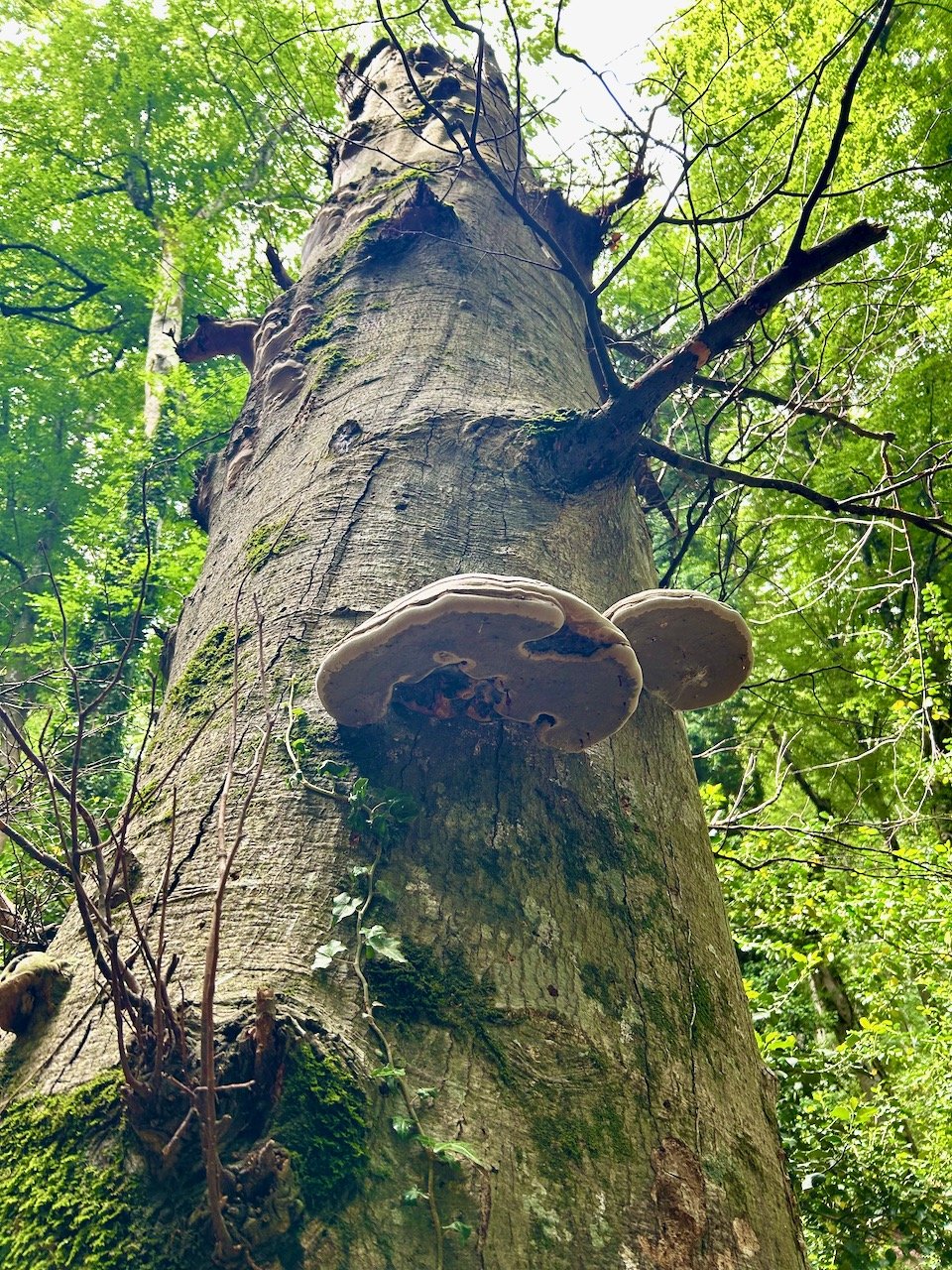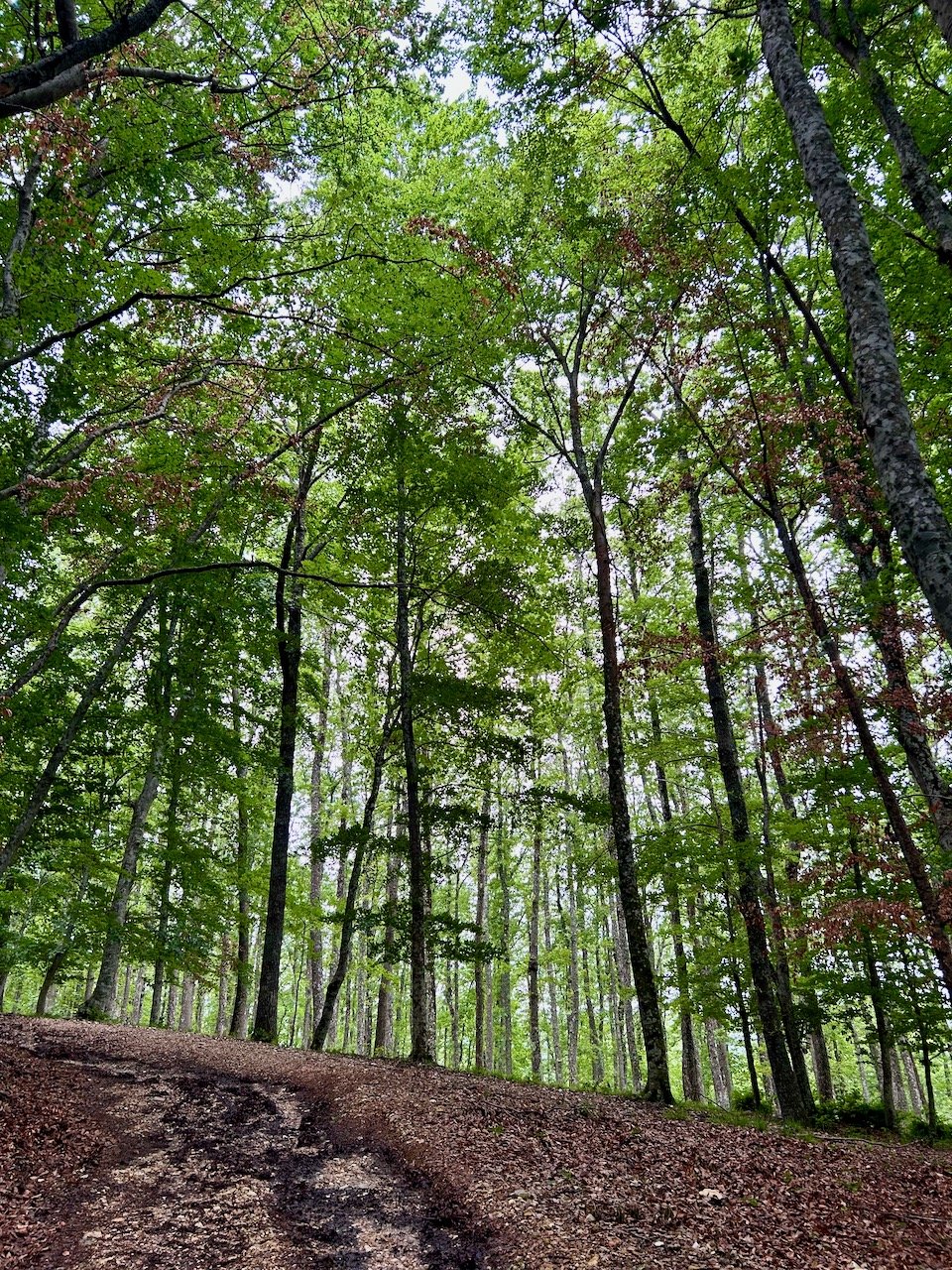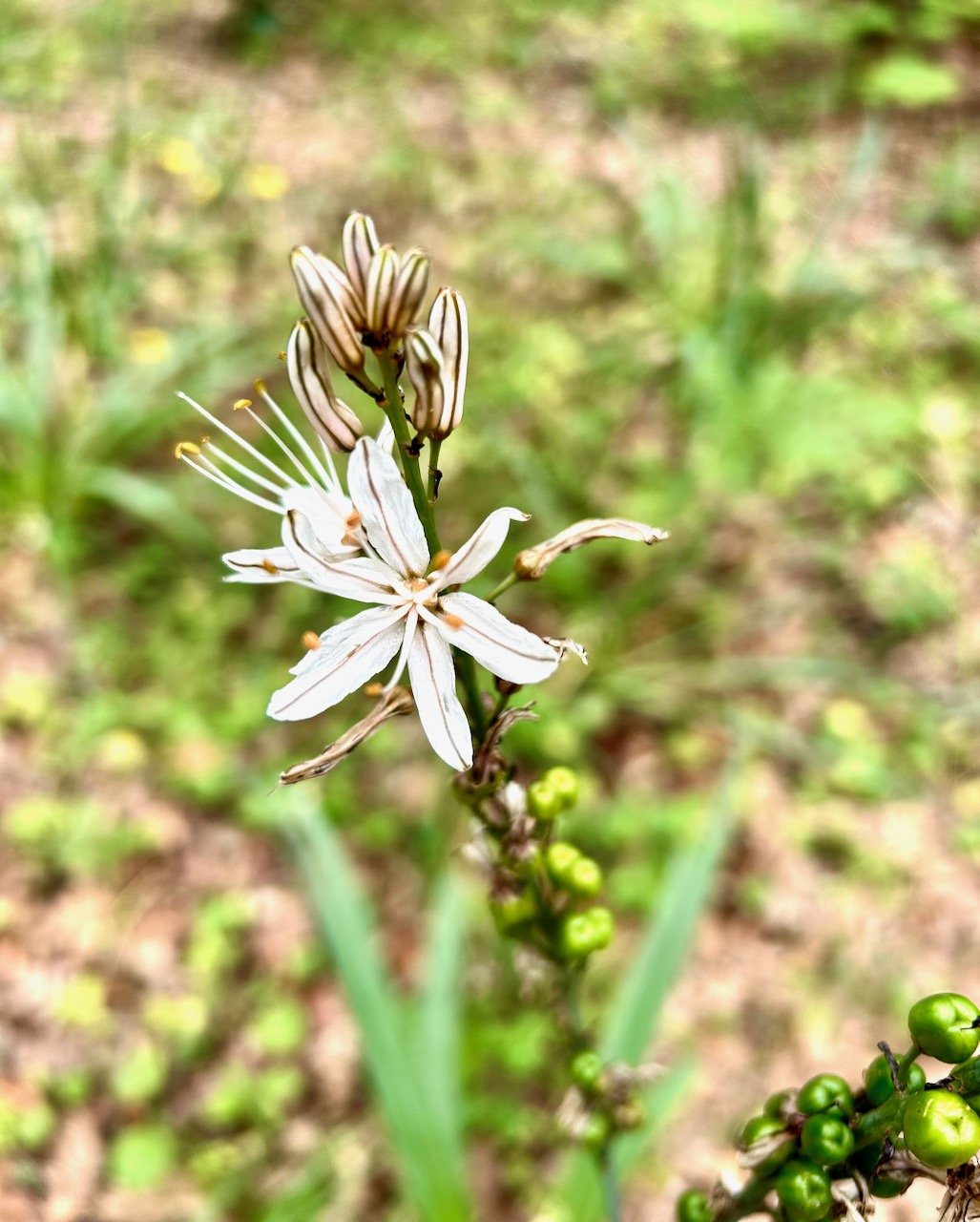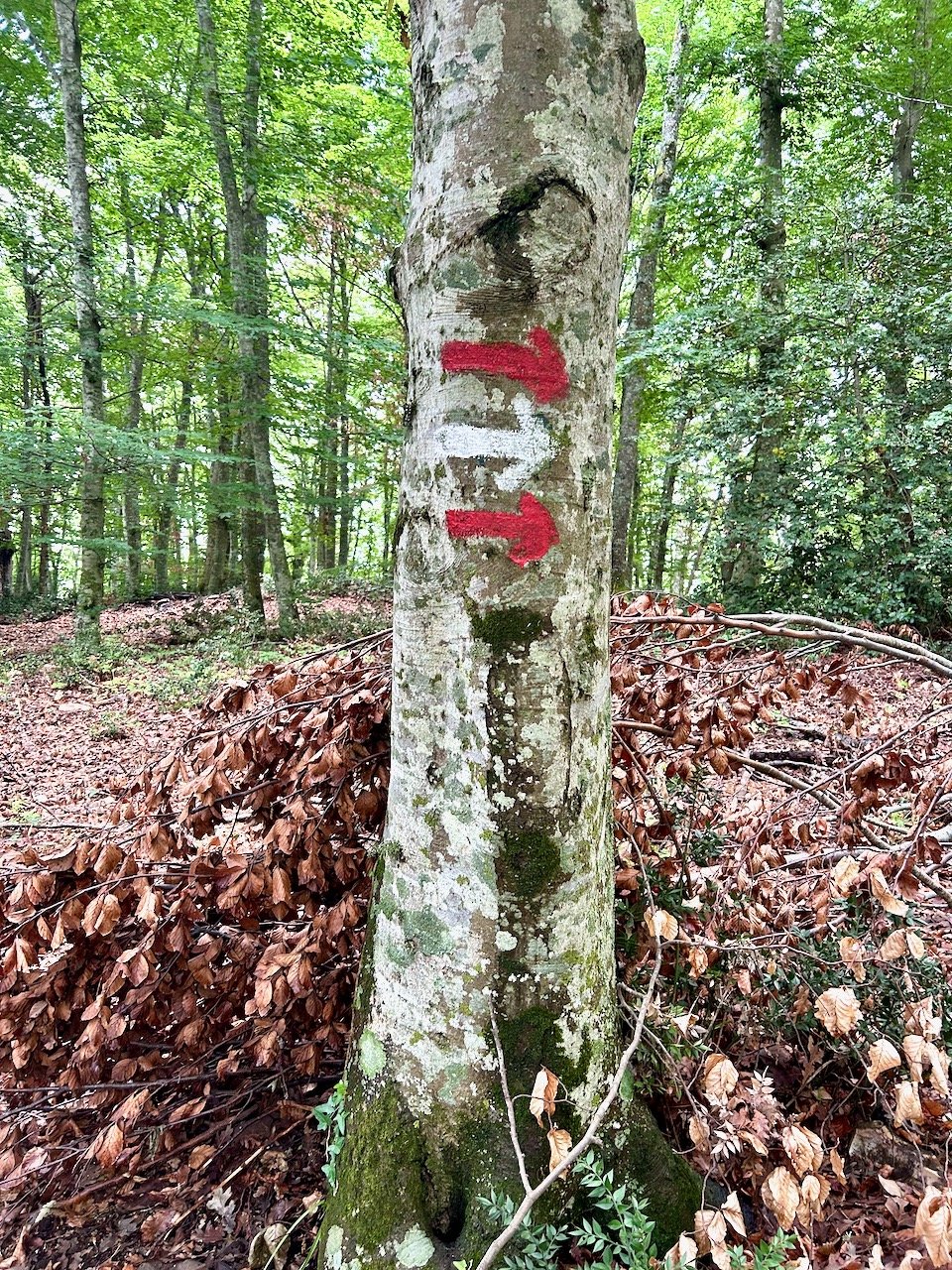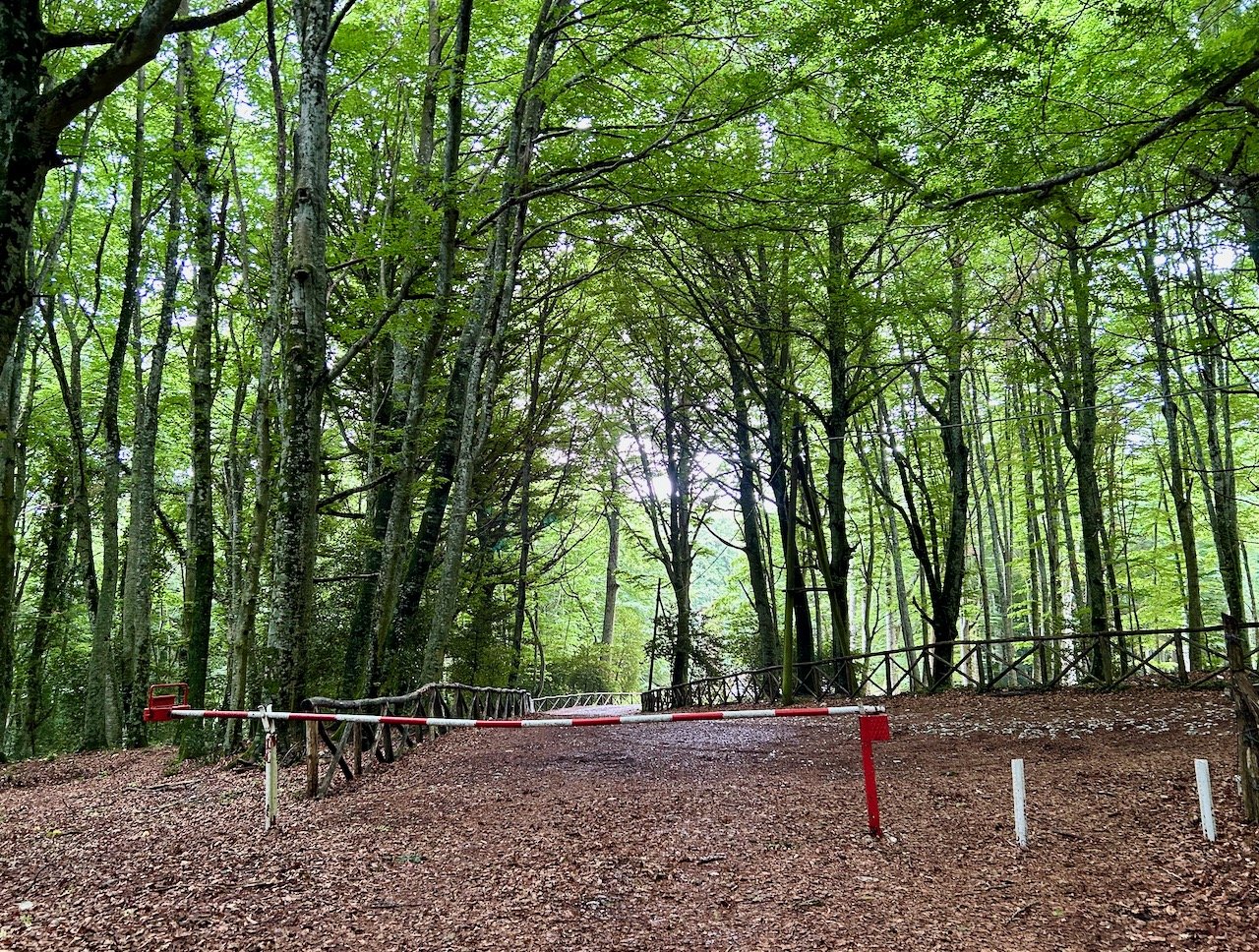The previous day’s walk around the Foresta Umbra was a good test for my ankle, and walking on the wood chipped paths was more comfortable than the tarmac roads, but completing the walk was good for regaining confidence in my ankle, and of course the support helped massively. It was good to know that I could walk distances on it without too much pain and little swelling as the next walk was a ‘moving on’ walk, and it was a big one.
Once again it started with a transfer to the far edge of the forest where we joined the San Michele Pilgrim Trail as we headed the relatively short 8.6km to Monte Sant’ Angelo. But don’t let the short distance deceive you over that distance we would descend 315 metres, and climb 485 metres. It was tough as it was also a warm day, and at times I wasn’t sure that I’d ever book another walking holiday again, but the views were fantastic - and there’s nothing like an impending rain cloud to encourage you on your way is there?!
The trail would take us across open farmland and up to Gargano’s highest village, Monte Sant’ Angelo on the southern spur of the peninsula. We had a picnic and our usual supplies to sustain us, and once we found our bearings we were off.
The paths were varied and the sort where you had to look at where you were going. There was plenty else to see, but it wasn’t until the dry stone wall ended that we really got our first view of where we were headed, and what lay ahead of us.
Yes, that squarish looking block of buildings in the centre of the picture was where we were heading, but there was a valley in between us and that. Eyebrows were definitely raised at this point.
But clearly the only option was walking! As we navigated the winding path up, before following the zig zag trails down to the bottom of the valley there was plenty to distract us - and actually walking down isn’t that bad.
We encountered a couple of ‘interesting’ gates, which as we approached looked as if they were simply fences, making us question our capability of following the walking notes. Even when we were much closer it wasn’t obvious how they opened, but of course they did.
But the views were stunning, just look at the sky too - amazing.
Reaching the bottom we decided it made sense to stop to eat our picnic in the relative shade, and before heading way up there. But it couldn’t be put off, and so we started our ascent.
There was a lot of up!
And with stunning views. But still up we went.
It was good to see the now familiar signs to confirm we were still on our intended path, but by now as you can see there was a big black cloud following us.
But only if you looked in one direction, elsewhere there were wild roses and blue skies.
And the largest puff balls I’ve ever seen.
And glorious gorse, and still that black cloud.
And still we went up.
And up. The town was now in sight, but it was still quite a bit higher than us - and more than it looks in this photo.
But we got there ahead of the black cloud, which we were both grateful for.
But there was still more up as we walked through the town heading towards the Santuario di San Michele dedicated to the Archangel Michael.
The Holy Cave, some 86 steps down into the rock is the site of the apparition of the Archangel and the heart of the sanctuary. The Holy Cave became a destination for pilgrims and crusaders, including many Kings, Popes and illustrious figures and it has been recognised as a UNESCO World Heritage Site since 2011.
The steps down were met with some trepidation - as what goes down, must also go up and all that. But the 86 steps down, and the 86 steps up were well worth a visit to this unique place.
We continued on to our hotel passing the Castello di Monte Sant’ Angelo, but by now feeling definite signs of rain in the air so we continued on to our hotel.
By this point we weren’t surprised at all that there was more ‘up’ to do - it was the theme of the day, but I vowed to MOH even if our room was on the first floor I was getting the lift!
We were in our room (and yes, I got the lift) and within five minutes the heavens opened with absolutely torrential rain. I’m so glad it held off, as having to press on in the rain is absolutely no fun at all. But at least we knew our next walk - to the coast - would be downhill, mainly because there was no more ‘up’ left, and we really did feel like we were on the top of the world!

